Freshstart


Gl d sB h d h scenes at Sissinghurst Nigel Slater,s newcolumn The best new plants
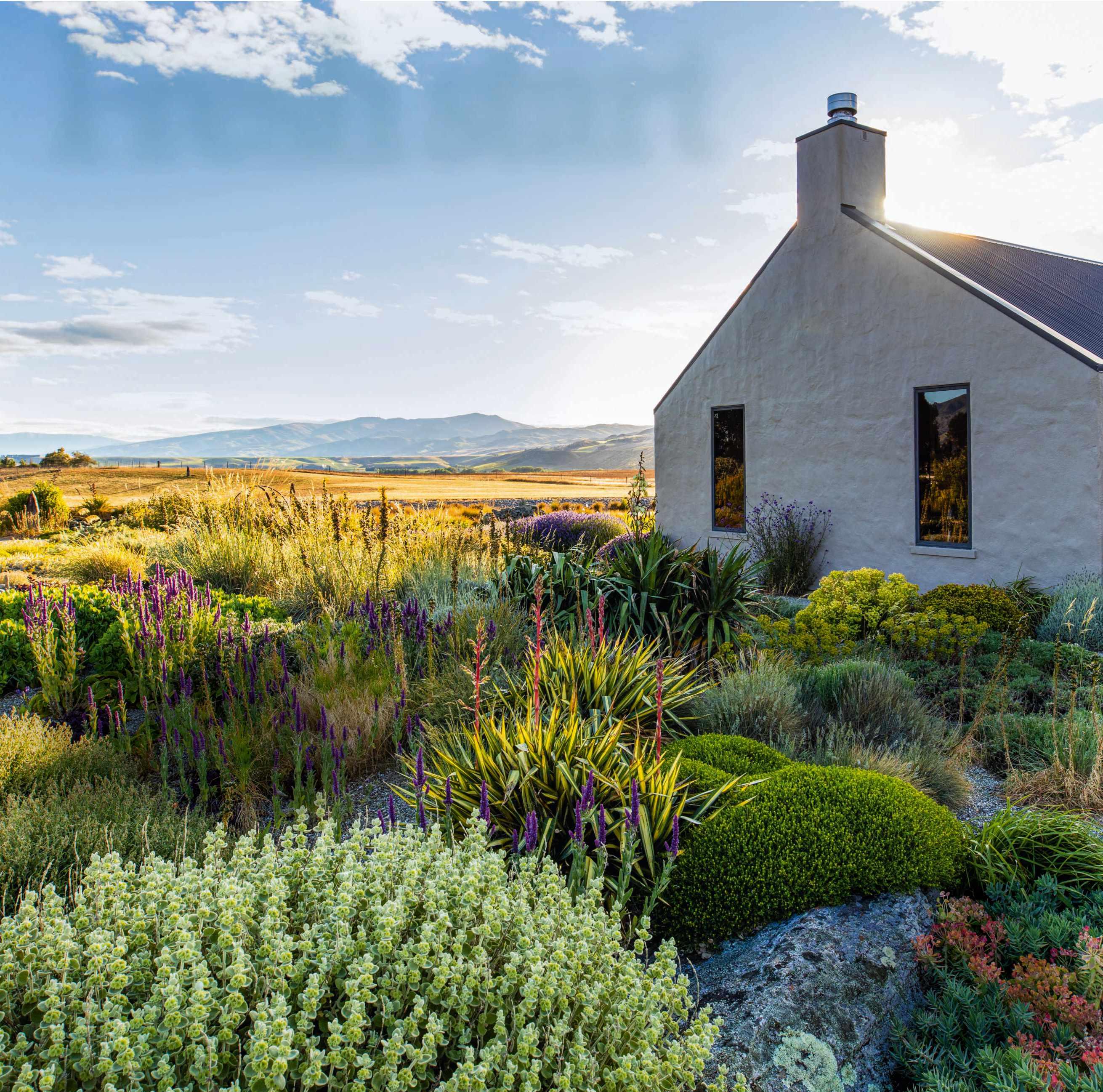
BATTERSEA IN BLOOM
Ideas for spring 3 beautiful ways to bring the outdoors in i th
Andy Sturgeon’s power station transformation
BRIGHT COLOUR
Daffodils, bergenias and magnolias
GARDEN PUBLICATION OF THE YEAR

rhinogreenhouses.co.uk 0800 694 1929

Welcome
As we welcome the transition from winter into spring, and the excitement of a new growing season, it’s the perfect time to embrace fresh ideas, inspiration and experiences. With this in mind, this month we present an edition packed with all things new.
We start our new series from Sissinghurst in Kent with head gardener Troy Scott Smith, following the garden highlights and tasks that he and his team are busy with now and throughout the year, with plenty of insights and expert tips (page 30). And you can delve into the first instalment of Plantsperson’s Favourites from Andrea Brunsendorf, head gardener at Lowther Castle & Gardens in Cumbria, as she shares her top ten plant picks for March (page 18).
This issue, we are also delighted to welcome renowned cook and writer Nigel Slater to the team as he begins a new column from his own garden (page 41). A passionate amateur gardener, he will be reflecting on his gardening life, past and present, and recording his observations through the changing seasons.
There are new gardens to enjoy too, from Andy Sturgeon’s design for Battersea Power Station’s roof gardens (page 82) to Jo Wakelin’s experimental dry garden in New Zealand (page 44), and a tiny green city courtyard by designer Erik Funneman (page 98).
And to celebrate the arrival of the new growing season, we bring you a bevy of beautiful planting features, including experts’ picks of the new plants they are excited to grow this year (page 109); a profile of bergenias (page 54); a visit to a magnificent magnolia collection (page 76); and an amazing daffodil nursery (page 90); plus ways you can bring a touch of outdoors in with our three mini floral projects to try (page 70).
 EDITOR
EDITOR

ONLINE THIS MONTH
To watch a short video of how Troy Scott Smith makes his peony supports, head to gardensillustrated. com/peonysupport
Instagram @gardens_illustrated


Twitter @GdnsIllustrated
Facebook @gardensillustrated
 CLIVE NICHOLS
STEPHANIE MAHON,
JOHN CAMPBELL
CLIVE NICHOLS
STEPHANIE MAHON,
JOHN CAMPBELL
MARCH 2024 gardensillustrated.com 3
C L V E N I C H O L S
Magnolia sprengeri var. diva is one of the many magnolias to be found at Borde Hill Garden, page 76.
Places
30 Theworkingyearat Sissinghurst Head gardener
Troy Scott Smith talks us through the garden tasks that keep his team busy at the famous Kent garden in spring
44 Without water New Zealander Jo Wakelin has transformed a dry rural paddock into an exciting water-resilient garden
64 Downthegardenpath With its series of snaking paths, the Essex garden of Jackie and John Copping is a joy to explore whatever the season
82 Greenpower Take a peek at the award-winning gardens Andy Sturgeon designed for the rooftops of London’s iconic Battersea Power Station
Plants
18 Plantsperson’sfavourites
In the first of a new series, Lowther Castle’s head gardener Andrea Brunsendorf chooses her top ten plants for March
54 Plant profile: Bergenia Find the best of these lowmaintenance, evergreen perennials that can brighten up the early spring garden
70 Seasonal flair Try your hand at these three fresh designs with flowers and foliage to celebrate
76
90
for
109 Fresh picks Expert gardeners, plantspeople and designers share the new plants they are excited about growing this year
People
41 Thegardenchronicles Our new columnist Nigel Slater shares the wonder he still feels at the return of flowering bulbs in spring
53 Gardeningtalent Meet Will Tomson, director at Sheffield-based design studio Creative Cultivation
62 Who’s who French botanist Véronique Mure on naturalistic gardening and the importance of looking after your soil
130 Findingtime In the last of her regular columns, Alice Vincent reflects on what writing about her garden has taught her
Design
97 Designnews A stylish new garden for the Dallas Gucci store
98 Narrow escape How Dutch designer Erik Funneman transformed a small and shaded city garden into a verdant urban oasis
107
117
127
129

MARCH 2024 Contents
the arrival of spring
undoubted
the show
Bowls of beauty Discover the garden in West Sussex where magnolias are the
stars of
the
Growing
gold The daffodil breeders in Northern Ireland, whose bulbs are in demand from Narcissus obsessives around
world
CLIVE NICHOLS
gardensillustrated.com MARCH 2024
4
Regulars
Welcome
Contributors
Dig in A new look at Claude Monet’s garden at Giverny and what exactly is a horticulturist?
Kittedout All you need for gardening in early spring
Subscription offer Save when you subscribe to the digital edition of Gardens Illustrated
Sourcebook Nine of the best mini greenhouses
3
6
9
25
28
Books Including the first book in English on the work of Dutch
Mien Ruys, and Caroline Quentin on capturing her garden in words and drawings
designer
Crossword and back issues
Next issue What’s coming up in our April issue
more
90.
Just some of the
than 200,000 daffodils at Esker Farm Daffodils in Northern Ireland, page

COVER IMAGE
Jo Wakelin’s garden, photograph by Claire Takacs (page 44)
ON THE COVER
Glorious gardens, pages 44, 64, 82 and 98
Best new plants, page 109
Behind the scenes at Sissinghurst, page 30
Nigel Slater’s new column, page 41
Bright colour, pages 54, 76 and 90
Battersea in bloom, page 82
Ideas for spring, page 70
EVE EVENTS AND NTS
OFFERS • Save money when you subscribe to the digital edition of Gardens Illustrated – page 28 Subscribe & save take out a digital subscription to Gardens Illustrated SEE PAGE 28 Our packaging Members’ copies of Gardens Illustrated are delivered in paper wrapping instead of recyclable plastic polywrap. This paper wrap is 100% recyclable and made from sustainably sourced paper. Please recycle in your kerbside recycling bin.


‘‘ A T A

Contributors

Andrew Maybury
Andrew photographs our new Plantsperson’s Favourites series, page 18. “It’s been a privilege to work alongside Andrea and capture the amazing variety of plants that thrive at Lowther Castle.”

Troy Scott Smith
Head gardener Troy begins a new practical series, page 30. “I am thrilled to be back in the pages of Gardens Illustrated as I share with you an entire gardening year from Sissinghurst.”

Fionnuala Fallon
Fionnuala visits an exceptional daffodil farm, page 90. “The story of Esker Farm Daffodils is fascinating, reflecting the rich history of daffodil breeding in Northern Ireland.”
CONTRIBUTING EDITORS






Charlotte Harris
Charlotte co-founded the values-driven landscape design practice Harris Bugg Studio with Hugo Bugg in 2017. She has won three Gold medals at the RHS Chelsea Flower Show, as well as Best Show Garden in 2023.
Fergus Garrett
Fergus was appointed head gardener at Great Dixter by Christopher Lloyd in 1993 and is now CEO of the garden’s Charitable Trust. He was awarded an RHS Associate of Honour in 2008 and an RHS Victoria Medal of Honour in 2019.
James Basson
James lives in the South of France where he runs Scape Design, a practice for creating sustainable landscapes. The winner of four Chelsea Gold medals, he was awarded Best Show Garden in 2017.
Anna Pavord
Anna was The Independent’s gardening correspondent for 30 years and is the author of the bestselling book The Tulip. In 2000 the RHS awarded her the Veitch Memorial Medal. She lives and gardens in Dorset.
Dan Pearson
Dan is one of the UK’s best-known garden designers. Among his many award-winning gardens is the Tokachi Millennium Forest in Japan. He was awarded an OBE in the 2022 New Year Honours for services to horticulture.
Sarah Price
Sarah is one of the UK’s most sought-after garden designers. She won Gold at Chelsea in 2012, 2018 and 2023, and was GMG Garden Columnist of the Year in 2016 for her design series in Gardens Illustrated
ANDREW MONTGOMERY
ANDREW MONTGOMERY
ANDREW
MONTGOMERY
: + O
V I f
AL
:
De
HS
P
De
RICHARD JOHNSTON
HOW TO GET IN TOUCH WITH US
Membership and subscription enquiries and back issues
UK 03330 162114
USA/CANADA +1 888-941-5623 (TOLL-FREE)
REST OF THE WORLD +44 1604 973722
EMAIL gardensillustrated@ourmediashop.com
UK/REST OF THE WORLD Gardens Illustrated, PO Box 3320, 3 Queensbridge, Northampton NN4 7BF.
USA/CANADA Gardens Illustrated, PO Box 40, Williamsport, PA 17703 USA.
Advertising enquiries
+44 (0)117 300 8547 rebecca.janyshiwskyj@ourmedia.co.uk
Editorial enquiries
+44 (0)117 300 8622 gardens@gardensillustrated.com
Gardens Illustrated, Our Media Ltd, Eagle House, Bristol BS1 4ST.
Syndication & Licensing
Gardens Illustrated is available for licensing and syndication.
+44 (0)117 300 8787, emma.brunt@ourmedia.co.uk
App support
For App support please visit ourmediaapps.co.uk/digital-contact-form/ We abide by IPSO’s rules and regulations. To give feedback about our magazines, please visit ourmedia.co.uk, email editorial.complaints@ourmedia.co.uk, or write to: Legal, Our Media Ltd, Eagle House, Bristol BS1 4ST.
EDITORIAL
Editor Stephanie Mahon
Art director David Grenham
Deputy art editor Niki Goss
Production editor Juliet Giles
Digital editor Daisy Bowie-Sell
Commissioning content editor Veronica Peerless
Content producer Molly Blair
Botanical adviser Dr James Compton
ADVERTISING
Advertising manager Rebecca Janyshiwskyj 0117 300 8547 rebecca.janyshiwskyj@ourmedia.co.uk
Commercial brand lead Kelly Warden 0117 300 8538 kelly.warden@ourmedia.co.uk
Advertising designers Andrew Hobson and Cee Pike
INSERTS
Laurence Robertson +353 (0)876 902208
CIRCULATION, MARKETING, PROMOTIONS, PRESS & PR
Newstrade manager John Lawton
Subscriptions director Jacky Perales-Morris
Direct marketing manager Aimee Rhymer
Buyer Karen Flannigan
MANAGEMENT
Chief executive officer Andy Marshall
Managing director Andrew Davies
Head of brand marketing and brand lead Rosa Sherwood
SYNDICATION & LICENSING
Director of licensing & syndication Tim Hudson, tim.hudson@immediate.co.uk
Head of licensing Tom Shaw, tom.shaw@immediate.co.uk
Head of syndication Richard Bentley, richard.bentley@immediate.co.uk
PRODUCTION
Production director Sarah Powell
Group production manager Louisa Molter
Production co-ordinator Lauren Morris






THIS MAGAZINE IS OWNED AND PUBLISHED BY
R DENS Jan-Dec 2022 45,716* *Combined print and digital sales Gardening trousers with integrated kneepads No more wet knees www.genus.gs g g C A L L U S O N 0 2 0 3 6 1 7 1 1 6 6 ® The Royal Horticultural Society. Trade marks of The Royal Horticultural Society (Registered Charity No 222879/SC038262) used under licence from RHS Enterprises Limited.
GA
MAGAZINE CONTACTS
Standard subscription rates: UK £77.87 per annum; Eire and Europe €127 for 13 issues; rest of the world US$181.87 for 13 issues. Distribution Frontline, Peterborough. US distribution Source IPD/Speedimpex. Email intlquery@seymour.co.uk. Printed in the UK by William Gibbons Ltd. Gardens Illustrated (ISSN 0968-8920) (USPS 015-608) is published 13 times a year (monthly with a Summer issue in July) by Our Media Ltd, Eagle House, Bristol BS1 4ST, UK. Distributed in the USA by NPS Media Group, 2 Corporate Drive, Ste. 945, Shelton, CT 06484. Periodical postage paid at Shelton, CT and additional mailing offices. POSTMASTER: Send address changes to Gardens Illustrated, PO Box 401, Williamsport, PA 17703. Unsolicited manuscripts or artwork are accepted on the understanding that the publishers incur no liability for their storage or return. The contents of this magazine are fully protected by copyright and may not be reproduced without permission. The Gardens Illustrated cover is printed on 250gsm FSC Amadeus produced in Belgium by Burgo. Our Media Company is working to ensure that all of its paper comes from well-managed, FSC®-certified forests and other controlled sources. This magazine is printed on Forest Stewardship Council® (FSC®) certified paper. This magazine can be recycled, for use in newspapers and packaging. Please remove any gifts, samples or wrapping and dispose of them at your local collection point. All prices are correct at time of going to press. © Our Media Ltd 2023. Member of the Audit Bureau of Circulation. ISSN 0968-8920.
TH S MAGAZ NE PUBL SHED
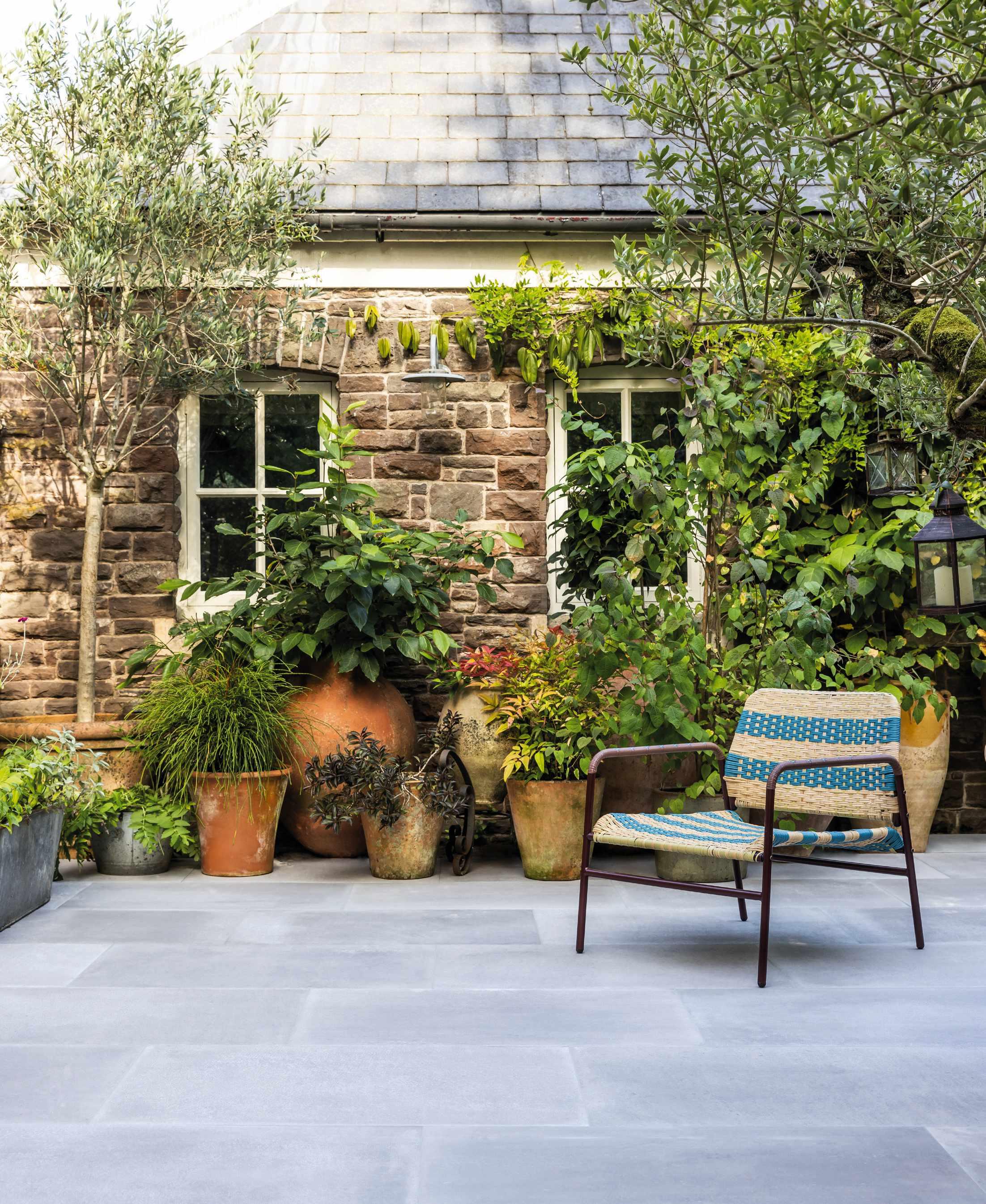
DIG IN
What’s new, what’s growing and what’s going on this month
NEWS COMPILED BY MOLLY BLAIR

WHAT TO READ
CALL OF THE WILD
Wilding, Isabella Tree’s best-selling book recounting the rewilding project she and her husband Charlie Burrell undertook on their Knepp Estate in West Sussex, is reissued this month with gorgeous illustrations by artist Angela Harding. The new edition aims to introduce the benefits of rewilding to a younger audience while also providing a new perspective on the text to readers of any age. Featuring maps, timelines and rewilding activities to try at home – from growing pollinator-friendly flowers on your windowsill to creating an animal superhighway in the back gardens along your street – this beautiful book helps brings the Knepp rewilding experiment to life through Harding’s exquisite lino prints and watercolours, based on observational drawings done on three visits to the estate across the seasons. Wilding: How to Bring Wildlife Back – An Illustrated Guide is published by Pan Macmillan on 14 March, priced £20. panmacmillan.com
MARCH 2024 gardensillustrated.com 9
ANGELA HARDING

Talking point
WHAT IS A HORTICULTURIST?
There seems to be much debate in the industry at the moment about the distinction between gardeners and horticulturists. So what is the difference? “Many horticulturists are gardeners, and the term people use to describe themselves is a matter of personal preference,” says Lewis Barrett (above), Young Horticulturist of the Year 2023.“However, not all gardeners are horticulturists, with the latter requiring specialist training and expertise to work in spaces such as botanic gardens. As a horticulturist at the Royal Botanic Gardens, Kew, my responsibilities and duties vary beyond what members of the public might perceive as gardening. One day we might be curating critically endangered plant collections, on another we may be considering how to navigate the complexities of growing ornamentals in the face of a changing climate.”
But Lewis takes no offence if he meets someone who doesn’t entirely understand what his job entails.“The term gardener is a good starting point, and acts as a springboard to describe my work,” he says. “As a graduate from the Kew Diploma and several RHS courses, I’ve spent many years building the foundations of what it is to be a fully trained and qualified horticulturist. Horticulturists are gardeners, but they are also ecologists, conservationists, botanists, historians, biologists, entomologists, designers, propagators, arboriculturists, pathologists, soil scientists… the list goes on.”
To read more from Lewis, scan the QR code with your phone camera or head to gardensillustrated.com/horticulturist


DESIGN
Reimagined spaces
Award-winning garden and landscape designer Joe Perkins has designed a new space in the National Trust’s Grade I-listed garden at Sheffield Park and Garden in East Sussex. While the space will be sympathetic to the existing landscape, which has been worked on by gardening greats from ‘Capability’ Brown to Arthur Soames, it will also address the current challenges of climate adaptation and the positive effect of nature on mental health and wellbeing. Many of the plants chosen will be welladapted to our changing climate, and it is hoped that the new space will open in 2025. For more information, head to nationaltrust.org.uk
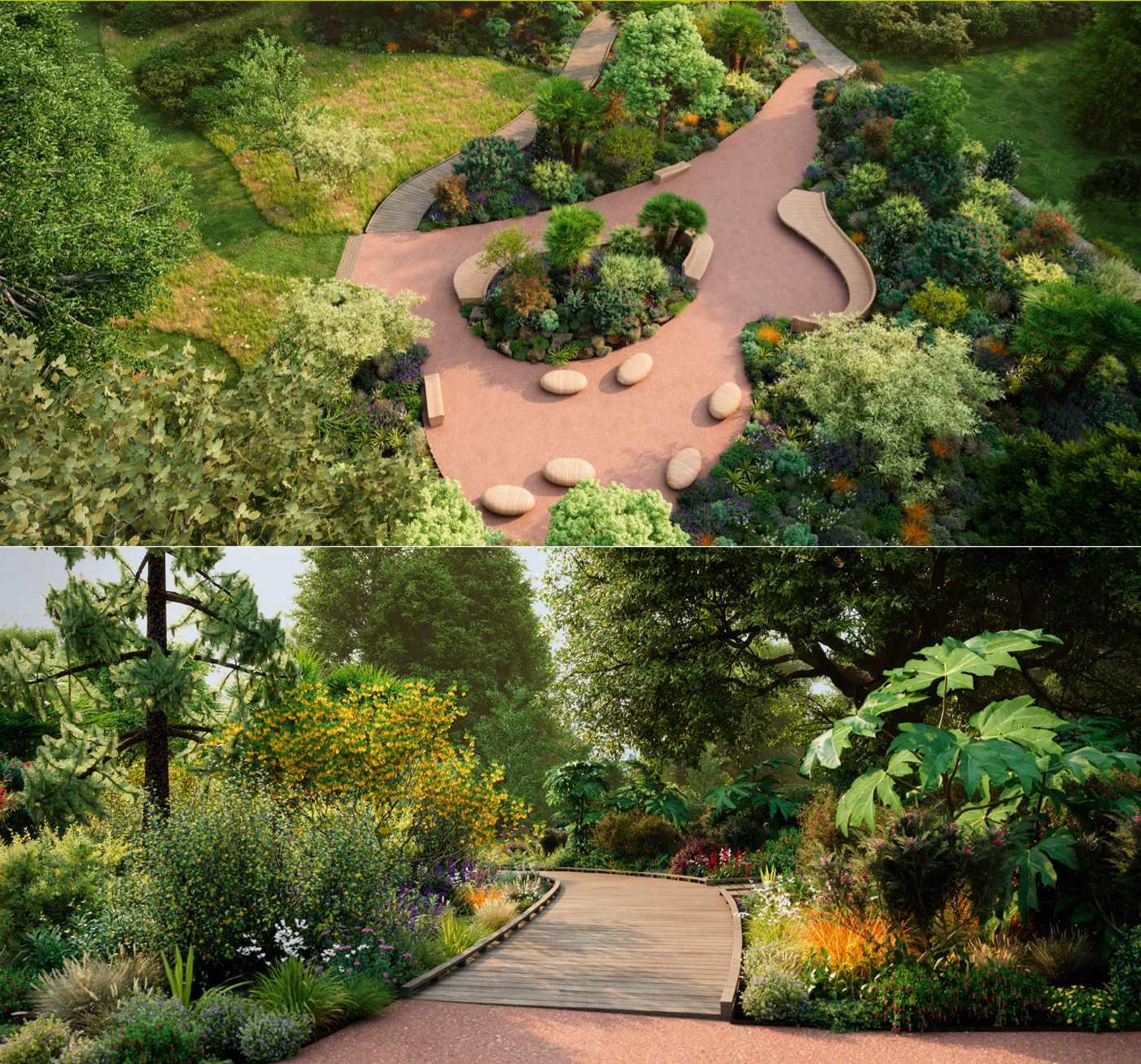
PERKINS DESIGN. VISUALISATIONS,
NORTH
DESIGN, JOE
SAM
10 gardensillustrated.com MARCH 2024
STEPHANIE LI
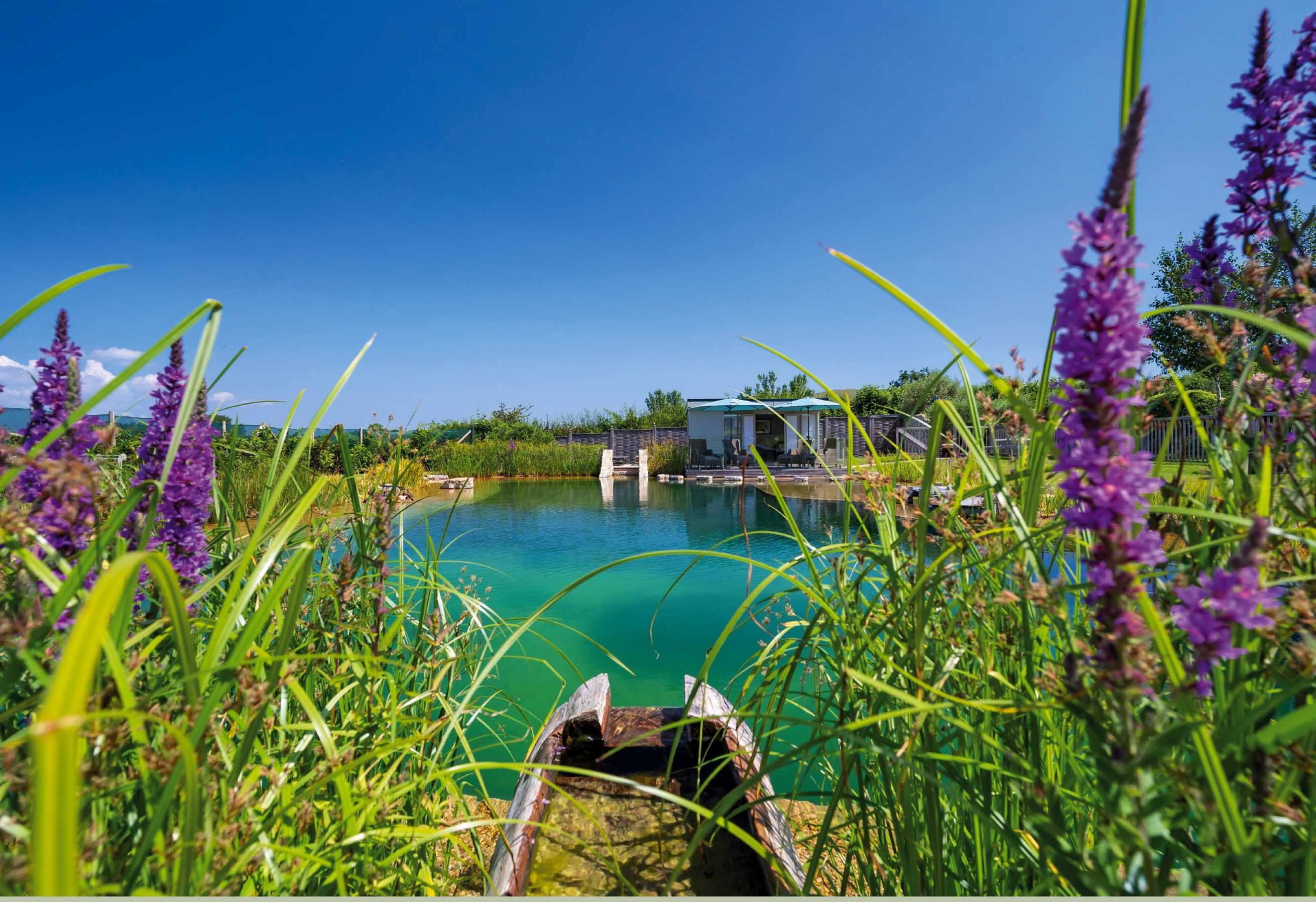

50 years creating garden design careers

‘The first class school to start a second career in garden design’ - It’s an easy choice.

Some of Inchbald’s star graduates On campus and online full time and part time courses Find out more: 020 7730 5508 | gardens@inchbald.co.uk | inchbald.co.uk |
Luciano Giubbilei, Marcus Barnett, Kamelia Bin Zaal, Philip Nixon, Angus Thompson, Jonathan Snow
ESTABLISHED 1960
Yamini Mather - 2023 Inchbald Garden Design Student
FINE ART JONATHAN BUCKLEY / SARAH RAVEN
LE PRINTEMPS À GIVERNY 2000, JEAN-MARIE TOULGOUAT. COURTESY DAVID MESSUM

OUT & ABOUT A different light
Claude Monet’s garden at Giverny is well known to many from his famous waterlily paintings. Now a new exhibition at the Garden Museum offers the chance to see a different side to the garden through the work of his great-grandson (by marriage) JeanMarie Toulgouat. Gardening Giverny traces the development of Monet’s garden through Toulgouat’s bright paintings, and contemporary photographs by Andrew Lawson. 13 March –24 April 2024, £14. gardenmuseum.org.uk
WHAT TO DO IN… MARCH

PLANTS TAILOR-MADE
If you’re looking for a simple solution for a problematic space, Sarah Raven’s border collections could be the answer. The Shady Border Collection (shown left) brings together six shadeloving plants – Anemone x hybrida ‘Robustissima’, Galium odoratum, Geranium nodosum, Digitalis purpurea f. albiflora, Dryopteris filix-mas and Hakonechloa macra – that have been expertly curated to bring a dark corner to life. Other collections in the series include The Hot and Dry Border Collection, featuring vibrant Salvia ‘Nachtvlinder’ and airy Oenothera lindheimeri ‘The Bride’, and The Scented Border Collection, with sweetly scented Phlox divaricata, Each collection includes three 9cm pots of each plant. For more information and prices, visit sarahraven.com

Lambeth Green Join Dan Pearson and architect Mary Duggan to learn more about London’s newest public garden.
Tuesday 5 March, 7-8pm.
£15. Garden Museum, 5 Lambeth Palace Road, London SE1 7LB. Tel 020 7401 8865.
gardenmuseum.org.uk 5

Mother’s Day Bouquet
Masterclass Create your own Mother’s Day bouquet using seasonal scents and colours and British flowers. All materials are provided.
Sunday 10 March, 9-11am.
£95. The Petersham (Covent Garden), 2 Floral Court, London WC2E 9FB. petershamnurseries.com

Easter Wreath Workshop
Spend the morning creating a beautiful wreath for Easter. All materials are provided. Thursday 28 March, 10am-12pm. £60. Pod & Pip, Ebble House, Stratford Tony, Salisbury, Wiltshire SP5 4AT. Tel 07766 775869. podandpip.co.uk
Galium odoratum
Anemone x hybrida ‘Robustissima’.
Geranium nodosum.
Dryopteris filix-mas.
DIG IN NEWS
Digitalis purpurea f. albiflora
10
28
LAMBETH GREEN CGI BY 3DAUDACITY, COURTESY OF THE GARDEN MUSEUM
CHLOE HARDWICK
MARCH 2024 gardensillustrated.com 13
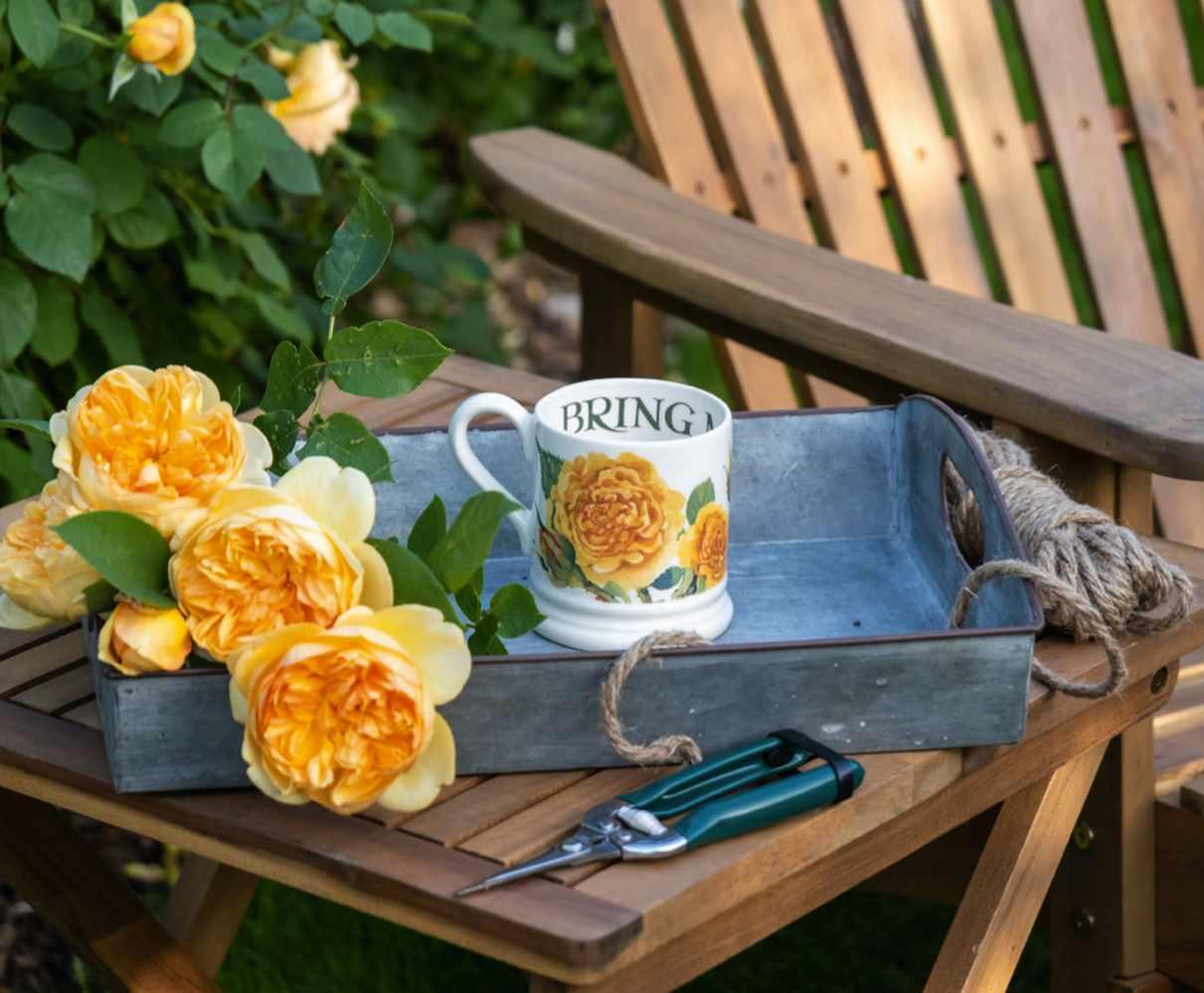
CHARITY
Spread some sunshine
David Austin Roses has teamed up with iconic pottery brand Emma Bridgewater to raise funds for the National Garden Scheme (NGS) with the launch of a colourful new mug. The Emma Bridgewater-designed, half-pint Bring Me Sunshine mug features the sunset-yellow flowers of David Austin’s Rosa Bring Me Sunshine (= ‘Ausernie’), and costs £25, with £5 from every sale going to the NGS. David Austin is also offering a gift set, priced £60, that combines the mug with an NGS notebook and a voucher that can be exchanged for any of its roses. And, as an extra boost for the NGS, David Austin is also opening the Shropshire garden of the late David Austin senior for the first time on the weekend of 15-16 June this year. davidaustinroses.co.uk; emmabridgewater.co.uk; ngs.org.uk

HOUSEPLANTS
OWN A PIECE OF EDEN
You can now buy coffee plants grown from seed harvested from the Eden Project’s Rainforest Biome in Cornwall. The Coffea arabica plants have been grown at Eden’s onsite plant nursery, which uses geothermal heat sourced from deep below the ground. Plants are around 35cm tall and cost £14.95. For more information and to order visit shop.edenproject.com
MEDIA
Virtual gardens
A new game that allows players to create their own digital garden has launched for PlayStation, Xbox and PC. Garden Life: A Cozy Simulator allows players to grow their own plants and tend to a garden, build up a collection of tools and create garden structures to enhance their growing capabilities. Players can also create bouquets of flowers and share them with other villagers. The game costs £34.99 and can be purchased at several online retailers.
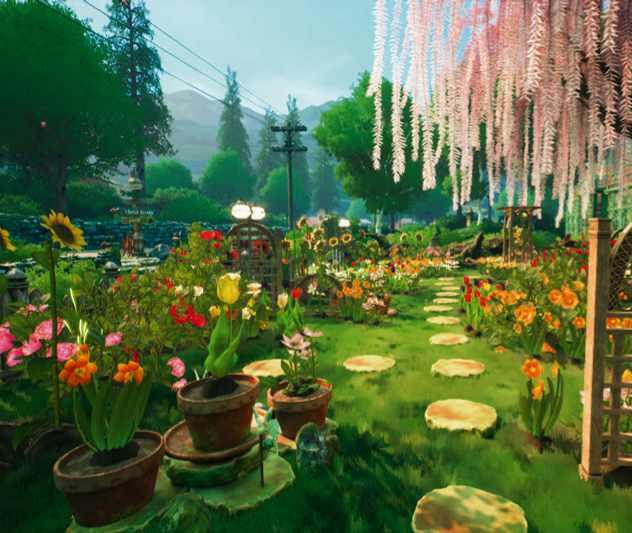
3 FOR THE GARDEN…
POTTING BENCH BRUSHES

HANDY
Table Dustpan & Brush, £8.99, Crocus,

JAPANESE DESIGN
Shuro

HANDCRAFTED
Sorghum

DIG IN NEWS To find a selection of garden brooms, scan the QR code with your phone camera, or visit gardensillustrated.com/ brooms
£30,
toa.st
Stripe Short Handled Brush,
TOAST,
Brush, £9, Niwaki, niwaki.com
crocus.co.uk
14 gardensillustrated.com MARCH 2024
DAVID AUSTIN ROSES



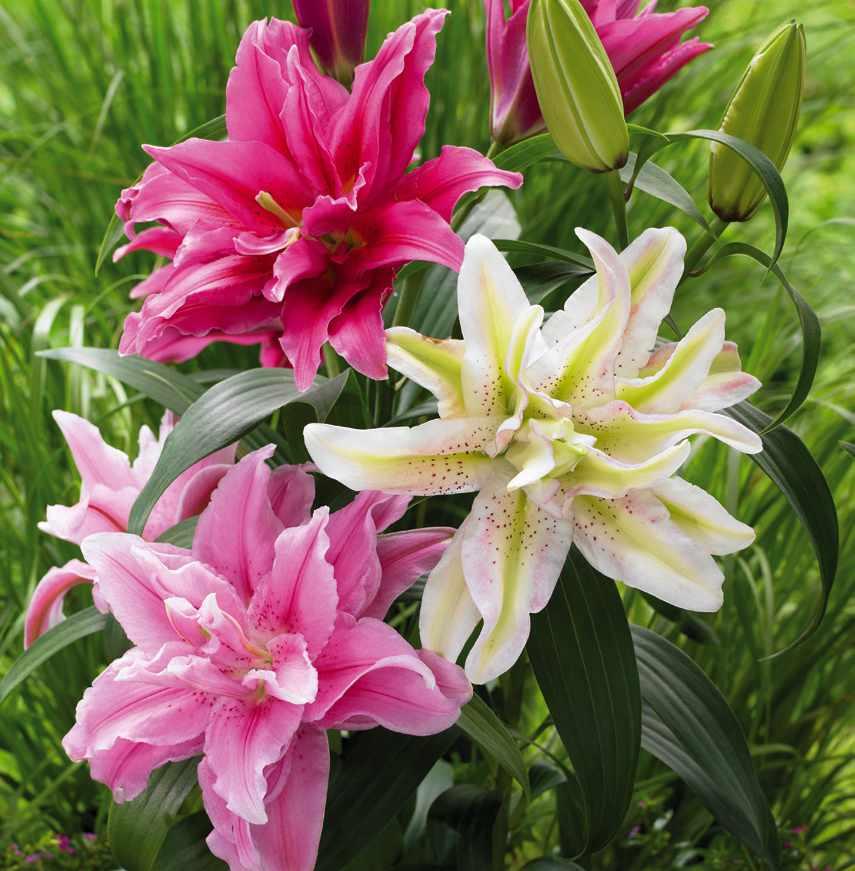
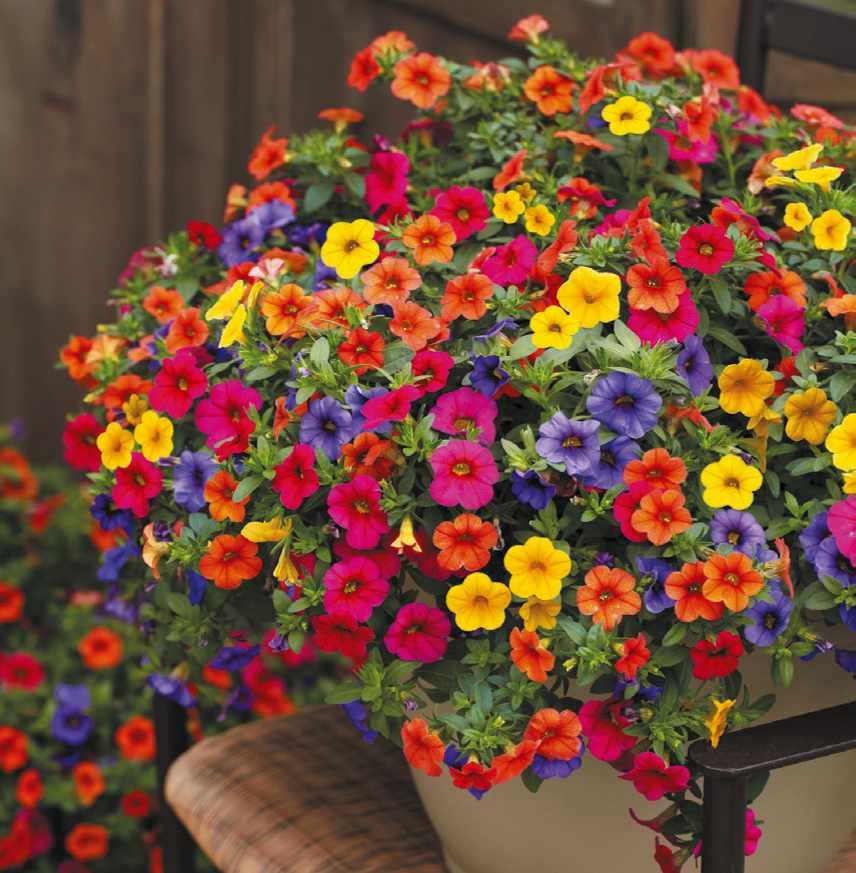







Grow Your Garden for Less with J. Parker’s Keep up to date @jparkersbulbs “As a family-run business, now stretching over three generations of the Duiker-Parker family, our commitment to providing quality and value is as strong as ever.” Paul Duiker-Parker Managing Director To find savings across 1000’s of products online visit: www.jparkers.co.uk Save 15% online now. Enter code GARDEN15 at checkout.* Product varieties featured in imagery are: Begonia Maxima Mix (A8036/A8037), Double Oriental Lilies Mix (L286), Million Bells Mix (M7297/M7298) and Large Flowering Gladioli Mix 8/10cm (A358/A359). *Voucher code vaild until 07/04/24.
Don’t just read Gardens Illustrated…
Listen to it too
All Season 1 & 2 episodes, with top guests describing their dream gardens, are available now wherever you get your podcasts

Arthur Parkinson

Marian Boswall

Isabel Bannerman

Piet Oudolf


Nigel Slater

Tamsin Westhorpe


Arit

Errol Reuben Fernandes
Listen to Talking Gardens
by scanning this QR code with your phone camera link.chtbl.com/TalkingGardens
You can find Talking Gardens on Apple Podcasts, Google, Spotify, Acast and all good podcast providers. Subscribe so you never miss an episode.
Head of horticulture at Horniman Museum and TV presenter
Gardener, writer and RHS Chelsea judge
Cook, food writer and passionate gardener
Horticulturist, container gardener and author
Designer, gardener and author
Landscape designer and sustainable gardening author
Internationally renowned planting designer
Anderson Garden designer, TV presenter and author
KATIE SPICER
CREATE ACADEMY
JASON INGRAM
JENNY ZARINS
CHARLIE HOPKINSON
ANDREW MONTGOMERY

HAMAMELIS X INTERMEDIA ‘JELENA’
This vigorous and deciduous witch hazel hybrid of Japanese and Chinese parentage becomes a wide-spreading, arching shrub with age. Loved for its abundance of orange, coppery flowers, made of narrow, ribbon-like, crinkly petals, and for its subtle citrus fragrance from late winter into early spring. Viewed from a distance, it glows like copper in the wintery sun. Its broad-oval leaves turn a magnificent orange-red in autumn. AGM*.
Height and spread 4m x 4m in ten years. Origin H japonica and H mollis hybrid. Conditions Moist, acid to neutral, organically rich, well-draining soils; full sun to part shade.
Hardiness RHS H5, USDA 5a-8b†
Season of interest Late January – March for flowers; September – October for autumn colour.
*Holds an Award of Garden Merit from the Royal Horticultural Society. † Hardiness ratings given where available.

March plants
In the first of a new monthly series, Lowther Castle’s head gardener Andrea Brunsendorf chooses the ten plants for March that bring her joy
PHOTOGRAPHS
ANDREW MAYBURY

SARCOCOCCA HOOKERIANA VAR. DIGYNA ‘PURPLE STEM’
This evergreen shrub fills Lowther Castle’s ruin with fragrance early in the year, gradually forming a dense thicket. The new shoots are flushed with purple-pink hues, and the tiny scented pink-white flowers are borne in the leaf axils. Sarcococcas are valuable for shade, and also do well in containers, if you annually enrich the compost with organic matter and water well throughout. Long shoots can be pruned straight after flowering to maintain a symmetrical habit. AGM.
Height and spread 1m x 1m.
Origin Western Himalayas and China. Conditions Moist, well-drained, organically rich soil; partial to deep shade; protect from cold winds.
Hardiness RHS H5, USDA 6a-8b. Season of interest December – March.
SORBARIA SORBIFOLIA
A deciduous shrub that rapidly spreads by suckers, forming tall thickets. It leafs out early with attractive pinkish-bronze foliage that gradually becomes deep green in summer. A long-term favourite of mine. I never dared plant it in the ground in any of my previous gardens, although it was always part of large container displays, as drier conditions dwarf it. From July to August, it offers fleecy panicles that are 25cm long and perfect white, turning brown as the flowers senesce, adding interest to its winter structure.
Height and spread 3m x 3m.
Origin Northern Asia from Urals to Japan. Conditions Moist, well-draining and moderately organically rich soil; full sun to part shade.
Hardiness RHS H5, USDA 2a-8b. Season of interest March – April for changing foliage. June – July for flowers.
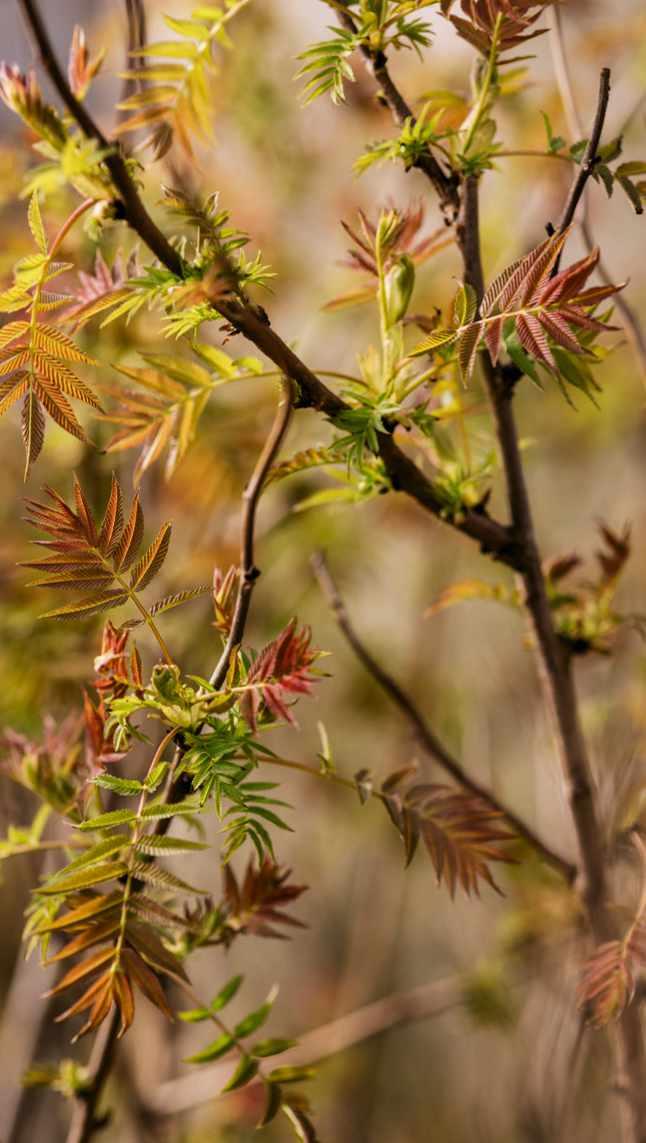

HELLEBORUS X HYBRIDUS ‘YELLOW LADY’
This seed-strain hybrid hellebore is part of the Lady Series, developed by the German plantswoman Gisela Schmiemann. It is noted for its evergreen, leathery, dark-green, glossy leaves and pale-yellow cupped flowers with maroon spots. The foliage can get scorched by cold winter winds if not protected, but cutting the leaves back in late winter will show off the charming flowers even more. It self-seeds happily, but it’s promiscuous, so you may end up with your very own strain of Lady.
Height and spread 35cm x 35cm.
Origin Garden origin.
Conditions Moist, well-draining and moderately organically rich soils, preferably alkaline; part to full shade.
Hardiness RHS H7, USDA 4a-9b. Season of interest February – April.
DIG IN PLANTSPERSON’S FAVOURITES
MARCH 2024 gardensillustrated.com 19
Andrea Brunsendorf is head gardener at Lowther Castle & Gardens in Cumbria lowthercastle.org
The
Lent lily inspired Wordsworth’s famous Daffodils poem; he observed them on the edge of Ullswater, a lake just a stone’s throw away from Lowther
CORYLUS MAXIMA ‘PURPUREA’
A tall, deciduous shrub with luscious, large, dark-purple leaves in the spring that fade to a maroon-green in late summer. The long catkins also retain this purple cast; it is a beautiful show when they blow in a sunny wind. In September, I am always torn. Should I pick the large filberts concealed by a ruffled, elongated purple husk or leave them for our local red squirrel population? I end up leaving them and enjoy finding the nuts on tree stumps across the garden, far from our orchard.
Height and spread 4m x 4m.
Origin Southeast Europe, western Asia. Conditions Moist, organically rich soils, tolerate slightly acid; full sun to part shade.
Hardiness RHS H6, USDA 4a-8b.
Season of interest February – March for catkins, April – July for foliage and September for filberts.
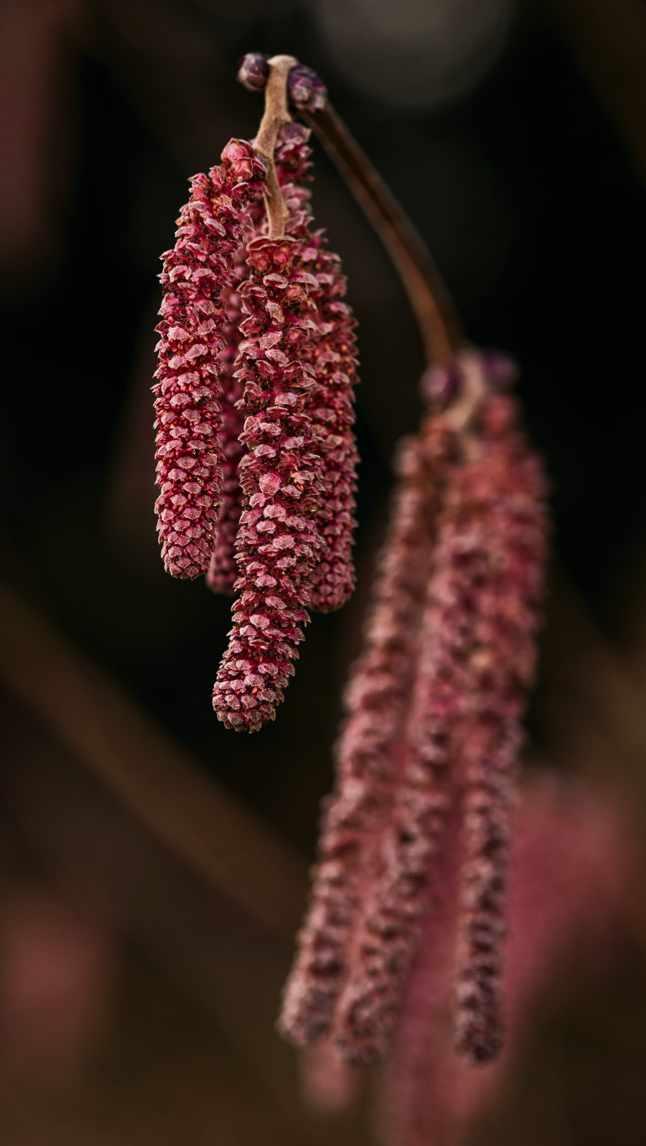

ASPLENIUM SCOLOPENDRIUM
On an early exploration of the expanse of Lowther, I stumbled across the long-lost alpine garden, finding a lush bounty of native hart’s tongue ferns inhabiting the limestone walls. It is an evergreen clump-former with entire, strap-shaped fronds, in contrast to the feathery type of ferns. It thrives best on alkaline soils. Water it moderately when in growth; it becomes more tolerant to drier soils once established. There are many cultivars, but the wild form is my favourite, and it is an ancient woodland indicator plant. AGM.
Height and spread 60cm x 60cm.
Origin North America, North Africa, Europe and western Asia.
Conditions Moist, organically rich soils, preferably neutral to alkaline; full to part shade.
Hardiness RHS H5, USDA 5a-9b. Season of interest Year round.
NARCISSUS PSEUDONARCISSUS
The Lent lily inspired Wordsworth’s famous Daffodils poem; he observed them on the edge of Ullswater, a lake just a stone’s throw away from Lowther. It is a small, variable, wild species, usually with pale-yellow tepals and a long trumpet in a deeper yellow, flaring at the mouth. I adore its simplicity, as it naturalises very well, especially in semi-shaded, long-grass areas; we will divide clumps that have stopped flowering and add more along our deciduous woodland garden edges. Be reassured that deer, squirrels and badgers will leave them alone.
Height and spread 30cm x 5cm.
Origin Western Europe, including Britain.
Conditions Moist soils, but good soil drainage is essential; full sun to part shade.
Hardiness RHS H6, USDA 4a-8b.
Season of interest March – April.
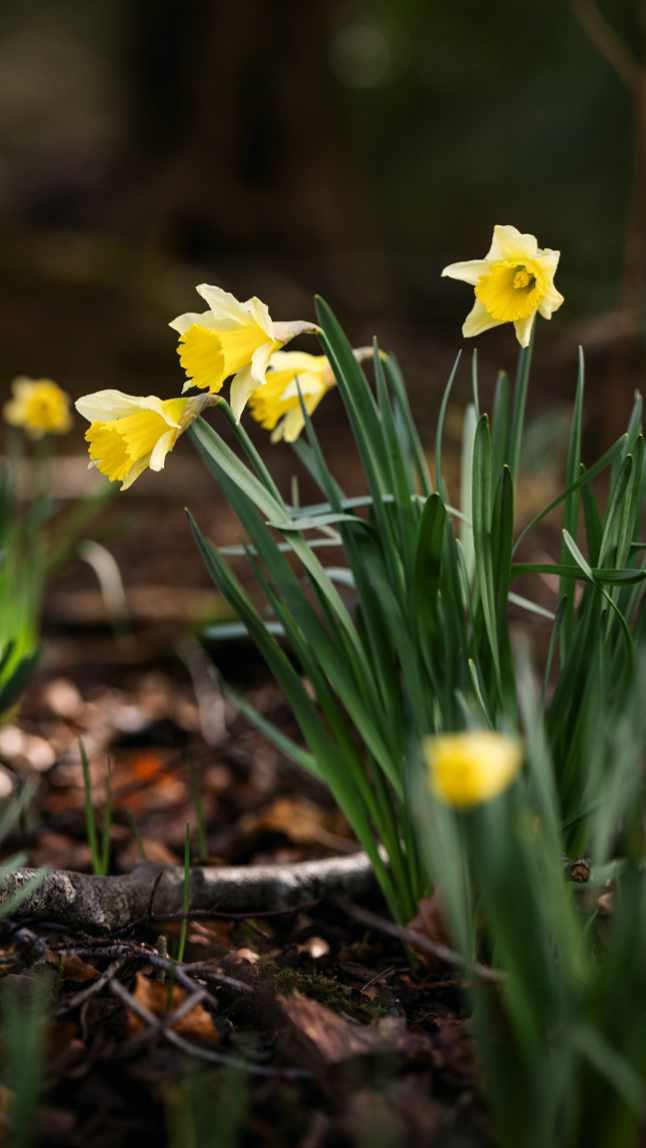
20 gardensillustrated.com MARCH 2024



Your Garden Your Dream Your Elite Garden Studio
At Elite Garden Studios, we believe that your garden is more than just outdoor space; it’s an opportunity to cultivate something extraordinary. Nestled within nature’s embrace, our garden rooms are more than structures; they are the canvas for your imagination, the sanctuary of your dreams, and the embodiment of refined living.
HOME OFFICE SMALL BUSINESS HOME GYM MUSIC STUDIO TEENAGE DEN GAMES ROOM HOME CINEMA ENTERTAINING SPACE www.elitegardenstudios.co.uk Tel: 0333 900 2222 Eton House, Eton Hill Road, Manchester, M26 2ZT
SUPPORTED BY
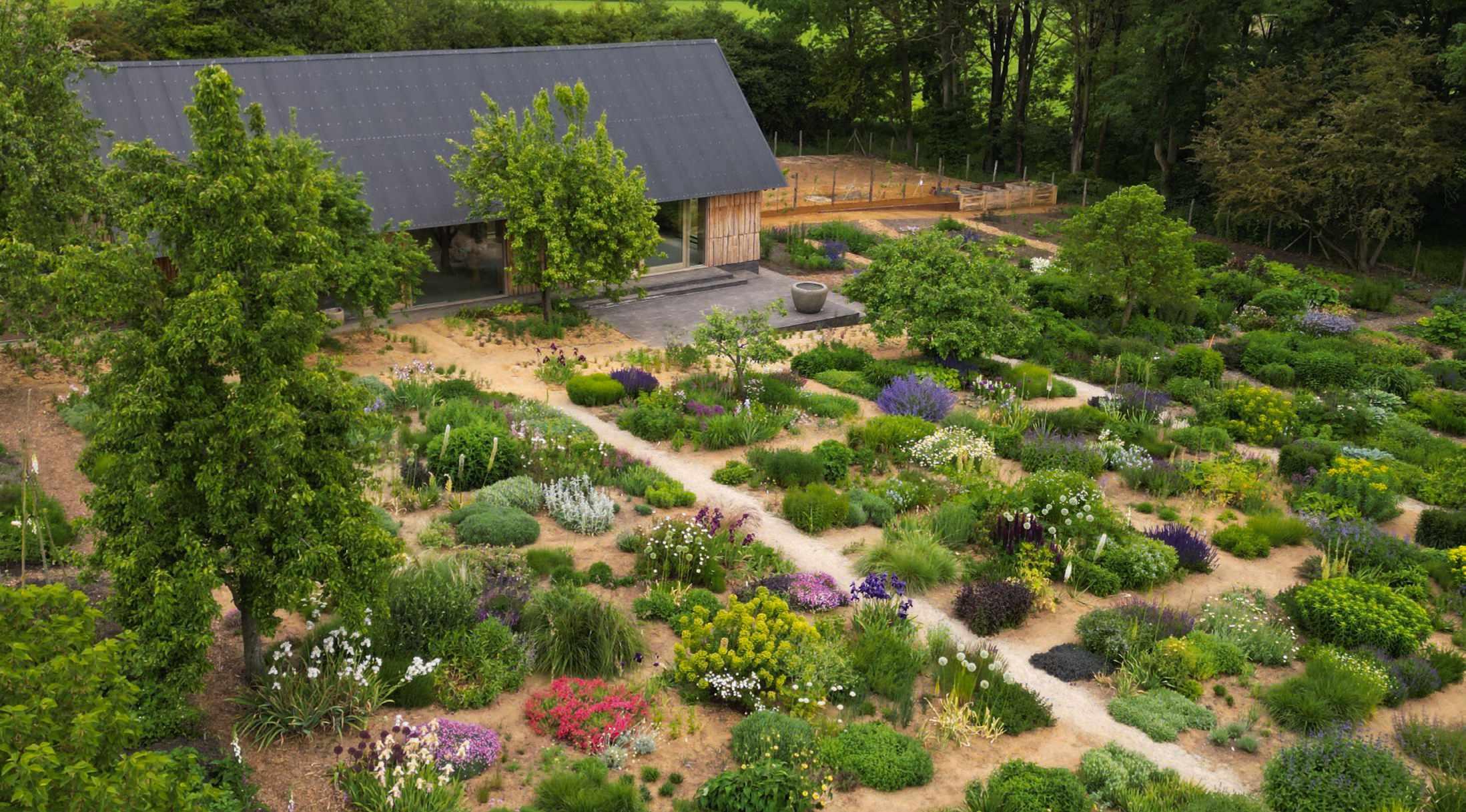
Curated by garden designer Annie Guilfoyle and horticulturalist Noel Kingsbury
Garden Masterclass is a unique education portal for garden and landscape people.
Live events this year include the following inspirational locations: Knepp Walled Garden; The Plant Library at Serge Hill; Caisson Gardens; White House Farm Arboretum; Delos at Sissinghurst; The Hepworth Wakefield; John Little’s garden; Tuinen Mien Ruys; Jo McKerr’s garden and Yeo Valley Organic Garden, along with Bergamo Landscape Festival and northern Sardinia.
Our tutors include: Prof. James Hitchmough; Charlie Harpur; Prof. Nigel Dunnett, Dr. Noel Kingsbury; Tom & Sue Stuart-Smith; Caroline Jackson, Midori Shintani; Annie Guilfoyle; Jason Ingram; John Little; Richard Scott; Marco Scano; Julia Crawford; Maurice Foster; Dan Pearson and Troy Scott-Smith.
We offer an extensive programme of live webinars and recordings available from our online library. We have a friends’ membership scheme offering discounts and a weekly pro bono broadcast.
Come and join us!
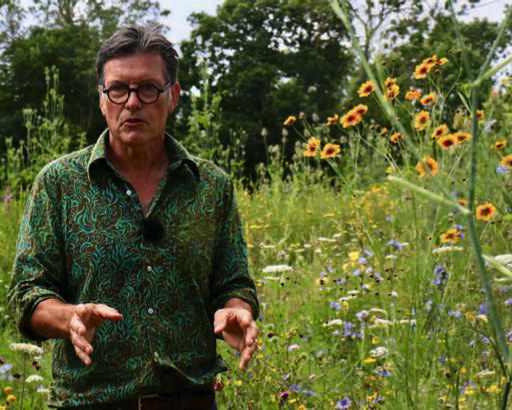
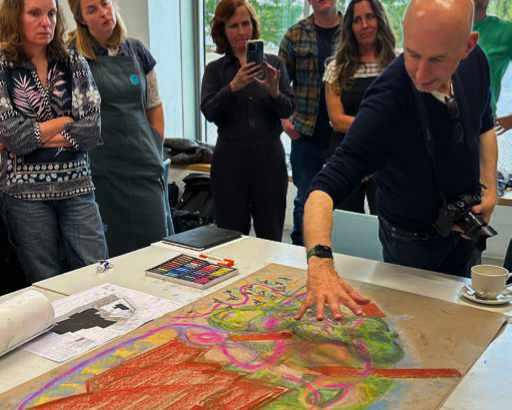
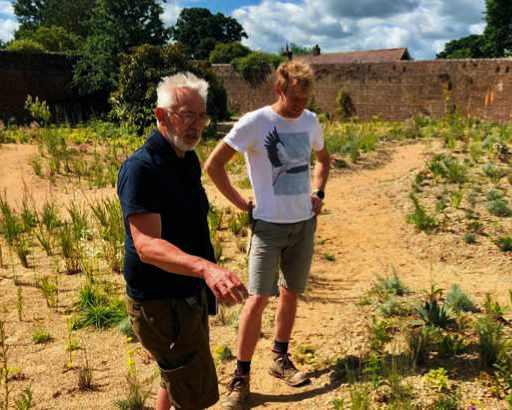
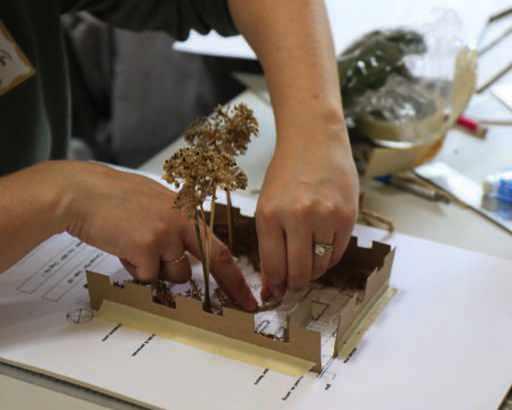
Learn, share and experience knowledge, skills and ideas in horticulture and design. gardenmasterclass.org or email info@gardenmasterclass.org
Snowdrops are among the first flowers to emerge at Lowther in naturalised colonies, telling us that the wintery weather will soon be over

GALANTHUS NIVALIS
Snowdrops are among the first flowers to emerge at Lowther in naturalised colonies below our woody shelter belts, telling us that the wintery weather will soon be over. For me, it is the true herald of spring. To establish this bulbous perennial successfully, plant it ‘in the green’ under deciduous canopies, providing summer shade and a natural topdressing of leafmould later on. Clumps can be divided every three to four years. I enjoy watching the bees on this understated floral elegance that lasts for many weeks in our cool and damp northern climate. AGM.
Height and spread 10cm x 10cm.
Origin Europe, naturalised in Britain.
Conditions Best in organically rich, heavier soils; part shade.
Hardiness RHS H5, USDA 3a-7b.
Season of interest January – March.
CROCUS ‘RUBY GIANT’
This snow crocus is a pumped-up version of C. tommasinianus; its rich elegance comes through its broad and deep violet-purple petals, producing a vivid and profuse display with a delightful fragrance. It is a cormous perennial that happily naturalises; excellent, especially in sunny positions on lighter soils where the sward of grass is thinner. If you don’t have the space to plant en masse and establish sweeping drifts, consider these little beauties for the top layer to some late-flowering tulips in your spring containers. AGM.
Height and spread 6cm x 5cm.
Origin Eastern Europe.
Conditions Moderately rich, well-draining soils; full sun to part shade.
Hardiness RHS H6, USDA 3a-8b. Season of interest March.

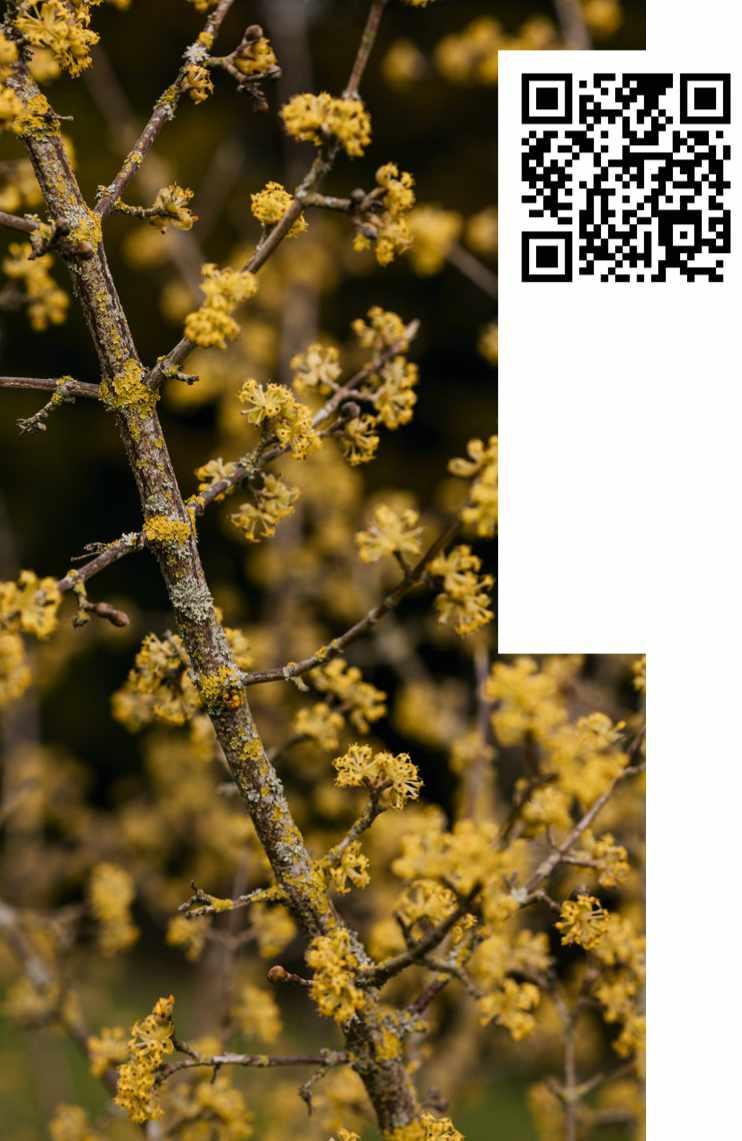
CORNUS MAS
A vigorous, spreading deciduous shrub or small tree with an oval-rounded outline that can branch to the ground. Small clusters of bright-yellow flowers open along the bare branches in late winter. This floral display lasts well throughout the cold, wet and windy springs that are so typical for northern England. The oval leaves turn reddish-purple before shedding to reveal attractive, exfoliating, scaly and flaky, rich-brown bark. It is a remarkably ornamental, multi-seasonal, undemanding and reliable plant. AGM.
Height and spread 4m x 4m.
Origin Central Europe and Western Asia.
Conditions Adaptable, best in moist, well-drained soils; full sun to part shade.
Hardiness RHS H6, USDA 4a-8b.
Season of interest February – March for flowers; September – November for autumn colour.
DIG IN PLANTSPERSON’S FAVOURITES
MARCH 2024 gardensillustrated.com 23
SCAN HERE Scan the QR code with your phone camera to watch our video, and discover why Cornus mas is Andrea’s plant of the month.

KITTED OUT
Get growing this season with our selection of tools and equipment for early spring
COMPILED
BY
MOLLY BLAIR







MARCH 2024 gardensillustrated.com 25
1. Sweet Pea Fibre Pots, £12.95 (set of 48), 0345 092 0283, sarahraven.com 2. Pro-Seeder, £14.95, 0333 777 3936, mr-fothergills.co.uk
3. Rubber Ball Sprayer, 250ml, dark green or terracotta, £11.25, bloomling.uk 4. Super-Birki, apple green, £60, 020 7862 1725, birkenstock.com
DIG IN SHOPPING 2 3 4 5 6 7 8 1
5. Practicool 4-in-1 Stainless Steel Riddle Set, four interchangeable mesh filters plus trowel, £30.95, amazon.co.uk 6. Vitax Perlite Compost Additive, 10L, £8.50, 01609 772422, sam-turner.co.uk 7. Creamore Mill Gardening Dibber, £6.70, 01323 832314, truggery.co.uk, 8. Garden Potting Bench, with hooks, drawer and dry sink, £249.99, 01276 535641, gardenesque.com

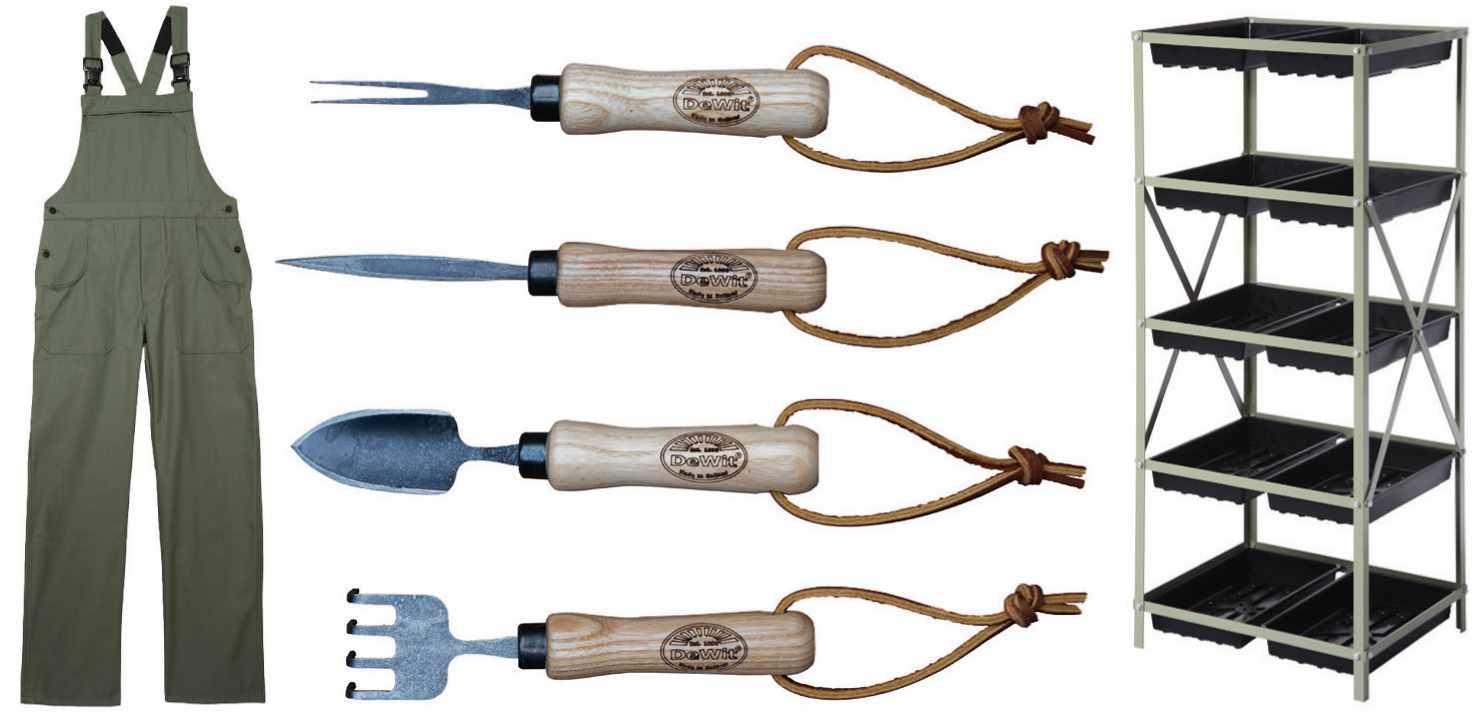

 1. Burgon & Ball Paper Pot Maker, makes three pot sizes, £14.99, 01344 578000, crocus.co.uk 2. Propagator, W 585mm x L 900mm x D 405mm, £975, 01730 826900, alitex.co.uk 3. Bark Garden Apron, olive, £49, fermliving.co.uk 4. Ceramic Vegetable Markers, set of nine, £45, 07881 622825, littlegardenshop.com
1. Burgon & Ball Paper Pot Maker, makes three pot sizes, £14.99, 01344 578000, crocus.co.uk 2. Propagator, W 585mm x L 900mm x D 405mm, £975, 01730 826900, alitex.co.uk 3. Bark Garden Apron, olive, £49, fermliving.co.uk 4. Ceramic Vegetable Markers, set of nine, £45, 07881 622825, littlegardenshop.com
26 gardensillustrated.com MARCH 2024 DIG IN SHOPPING 2 5 4 3 7 6 8 1
5. Original Women’s Gardening Gloves, £22.95, feverfewgarden.co.uk 6. Rhino Seedrack 10 Tray, £65, 0808 149 3421, greenhousesdirect.co.uk 7. DeWit Small Propagating Tools, set of four, £79.99, 01344 578000, crocus.co.uk 8. Le Laboureur For Gardenheir Overalls, olive green, $158, gardenheir.com



If you love your garden, you’ll know it takes time and care to create something truly wonderful. ®The Royal Horticultural Society Trade marks of The Royal Horticultural Society (Registered Charity No 222879/ SC038262) used under licence from RHS Enterprises Limited Feb 2024 in the Made with Pride Cotswolds
RHS Portico
why we put our faith in traditional joinery techniques such as mortise and tenon joints to give our greenhouses strength and integrity. Using only the highest quality Western Red Cedar, handcrafted in our
workshops. No wonder Gabriel Ash are the only timber greenhouses endorsed by the RHS. Our Classic Freestanding Greenhouses, Coldframes & Accessories are available to buy online. See us at selected independent Garden Centres and RHS Gardens. For a Free Brochure call 01242 662926 or visit www.gabrielash.com. New 2024 Brochure now available
The
That’s
Cotswold

Save when you subscribe to the digital edition GA R DENS




A must-have read for passionate gardeners, Gardens Illustrated magazine provides a unique insight into the world’s most beautiful gardens, expert advice and planting ideas. ENJOY OUR PREMIUM APP EXPERIENCE NOW buysubscriptions.com/ gardensillustrated

DIG IN IN THE GARDEN
The iconic Elizabethan Tower at Sissinghurst Castle in Kent overlooks the Victorian Orchard, once the site of a moated Medieval manor house and the courtyard of a grand Elizabethan mansion. Vita found a form of Rosa gallica growing here, which she later named R. ‘Sissinghurst Castle’. It still grows here with other rambling roses and spring bulbs.


The working year at Sissinghurst
In 1930, the writer Vita Sackville-West and her diplomat husband Harold Nicolson bought an old farm in Kent and set about creating a garden that has become one of the best loved and most visited in the world. In this new series, Sissinghurst’s head gardener Troy Scott Smith takes us through what he and his team are doing, and enjoying, each season
WORDS TROY SCOTT SMITH PHOTOGRAPHS JOHN CAMPBELL
MARCH 2024 gardensillustrated.com 31
We hope to bring about a celebration of everything that is good about the garden: rich, lavish, generous, fragrant, optimistic and romantic to the extreme
My first meeting with Sissinghurst was more than 30 years ago. I worked here for five years, honing my craft as a gardener, and taking the time to cultivate what was to become a lifelong relationship with the garden.
In 2013, I returned as head gardener. Along with the immense privilege of gardening within these six acres, I was also immediately aware of the responsibility and huge challenge that goes with it. Immersing myself in the practicality of the garden, I have slowly developed, with my team, a way of gardening that places beauty and romance first.
Vita Sackville-West and Harold Nicolson’s Sissinghurst had an all-over easiness, an ease that comes from nature and gardener working in harmony. The pulse of the garden beat slowly; it was nourished by patience, and rich in emotion
and intimacy. A kind of overblown luxuriance swept around the old brick of the Elizabethan ruins, permeating the entire garden. Its distinctiveness was expressed as much through the plant selection and placement as in its design and layout, the rise and fall of Vita’s planting providing a natural rhythm in tune with the season and with the land.
Sissinghurst is a highly personal and profoundly private garden. Vita put so much of herself into it that it is only my enduring connection with Sissinghurst that allows me to garden here instinctively, and with a freedom and ease that comes with a deep absorption and close affinity with the place.
Over the next few years, leading up to the garden’s centenary in 2030, we hope to bring about a celebration of everything that is good about the garden: rich, lavish, generous, fragrant, optimistic and romantic to the extreme. We want to capture the sense of a garden drawn from the ruins of its abandoned past. Embedded in its setting and its own history, suffused with a thick
To continue turn to page 36
Main image
Sissinghurst’s famous Lime Walk is at its best in spring, when it is carpeted with the spring-flowering summer snowflake Leucojum aestivum alongside a mix of Fritillaria meleagris, Fritillaria meleagris var. unicolor subvar. alba, Anemone apennina, Bellevalia paradoxa and Tulipa saxatilis (Bakeri Group) ‘Lilac Wonder’. At the back, large terracotta pots filled with the bright-yellow Narcissus ‘Martinette’ add to the display. The urn is planted with Clematis alpina
Left row from top Honesty (Lunaria annua) gives early spring colour in this south-facing bed in the Rose Garden, combined with Tulipa ‘Rems Favourite’. Following an outbreak of tulip fire (Botrytis tulipae), a fungal disease that causes brown holes in leaves and distorted growth, Troy and his team made the difficult decision not to plant any new tulips this year, and to dig up all of those already in the garden.
Standing next to a hornbeam hedge at one side of the White Garden, a Vestal Virgin statue is underplanted with Leucojum aestivum, Narcissus ‘Thalia’ and two white tulips, T. ‘Maureen’ and T.‘White Triumphator’. In the foreground are the red-tinted stems of the white-flowered Paeonia lactiflora ‘Duchesse de Nemours’.
Vita and Harold both loved how snake’s head fritillaries can bring a dash of intrigue to spring plantings. Fritillaria meleagris thrives in the clay soil at Sissinghurst and combines well here with Anemone apennina

32 gardensillustrated.com MARCH 2024

DIG IN IN THE GARDEN
SPRING TASKS
March can be unpredictable and cruel. At one moment, the flooding of sap-swelling buds and unfurling leaves feels like spring, and in the next a blanket of snow carried on searing cold winds from the near continent can cover the garden like a duvet, plunging it back into winter. Flexibility is key. I have several tasks ‘on the go’ at any one time and freely switch between them if required to do so by a change in the weather.
Growing plants in paving
Vita dreamed of having a stone-paved courtyard, the cracks colonised by ‘lakes of Aubretia, bumps of thrift, mattresses of yellow stone-crop, hassocks of pinks and rivulets of violets’. Where we can, we try to replicate this philosophy by sowing things, quite recklessly, in even the narrowest of cracks. We try those plants that would naturally self-seed, such as aquilegias and fleabane, which I recently sowed at the garden entrance, but also sometimes bulbous plants, such as miniature Iris pumila or the small narcissi. I say recklessly, as a lot will not strike or be trampled, but those that survive, their roots seeking out the cool reaches of the soil beneath, will live long and be protected from the extremes of heat and wet by the paving.
Planting edits
An essential part of the profusion of Sissinghurst is the carefully contrived yet apparently spontaneous and informal way of growing plants. We continue the planting style of Vita – romantic yet practical, experimental but traditional. Through the year, I continue to cultivate the best of Sissinghurst’s traditions, making comments in a notebook, titled (tongue firmly in cheek) ‘Great Thoughts’. I note what’s looking good, what should be changed, tweaked or removed completely. In autumn, but more often in spring, we refer to this book to make the necessary planting edits for the season ahead.
Pruning tender and wall shrubs
Although much of our pruning, particularly roses, is carried out through winter, we delay pruning tender shrubs or sub-shrubs until the risk of severe frost has passed, usually around mid-March. Most of our tender pruning is on Delos, with lavender, santolina, phlomis, sarcopoterium and salvias all pruned now. Also in mid-March we prune and tie in various wall-trained shrubs such as solanum, myrtle, abutilon and Magnolia grandiflora. Finally, on 1 April we prune our
wall-trained figs, bending the long, oneyear-old shoots into swirls and loops and securing them to wires fixed to the wall.
Sweet pea supports
I love sweet peas – they are so generous in their flowering and keep going (if regularly picked) for such a long time. We sow ours in mid to late October, with the aim of hardening them off and getting them planted by the third week of April. In preparation, we ‘build’ sweet-pea wigwams of hazel, using three well-branched stems around 2m in length to create each wigwam. Prior to planting (six peas per wigwam) we enrich the soil using our home-made bokashi compost. This provides both the nourishment and water-holding capacity that the peas need to keep flowering.
Peony supports
I’m experimenting with a ‘new’ method of peony staking. The idea developed from the way in which we bend down and secure the long, pliable rose shoots on to hazel rods. I wanted to mimic the rotund shape of the rose domes, by creating smaller-scale cages or lattices of hazel around the peony groups, in which we could support the flowering stems as they grow through. In addition to looking good, I hope this method will avoid the delicate peony roots getting damaged by conventional staking, which relies on pushing supports in among the roots.
Rose spraying
With a goal to garden in a more responsible and sustainable way, we decided some years ago to stop using synthetic fertilisers and chemicals. As an alternative to chemical spraying, we now spray our collection of once-flowering, old roses with a mixture of essential oils, including mountain savory (Satureja montana), tea tree (Melaleuca alternifolia), thyme (Thymus serpyllum), clove (Syzygium aromaticum) and orange (Citrus sinensis).
Dilute 0.2ml of each in 10ml of rapeseed oil and 3ml of Castalia black soap. Mix this base in one litre of water with a pH level of 6.5-7. Our first spray is generally in early April as the new foliage begins to break and thereafter we continue twice a month until October.

Planting
Pruning tender shrubs
Sweet pea supports
34 gardensillustrated.com MARCH 2024
Peony supports
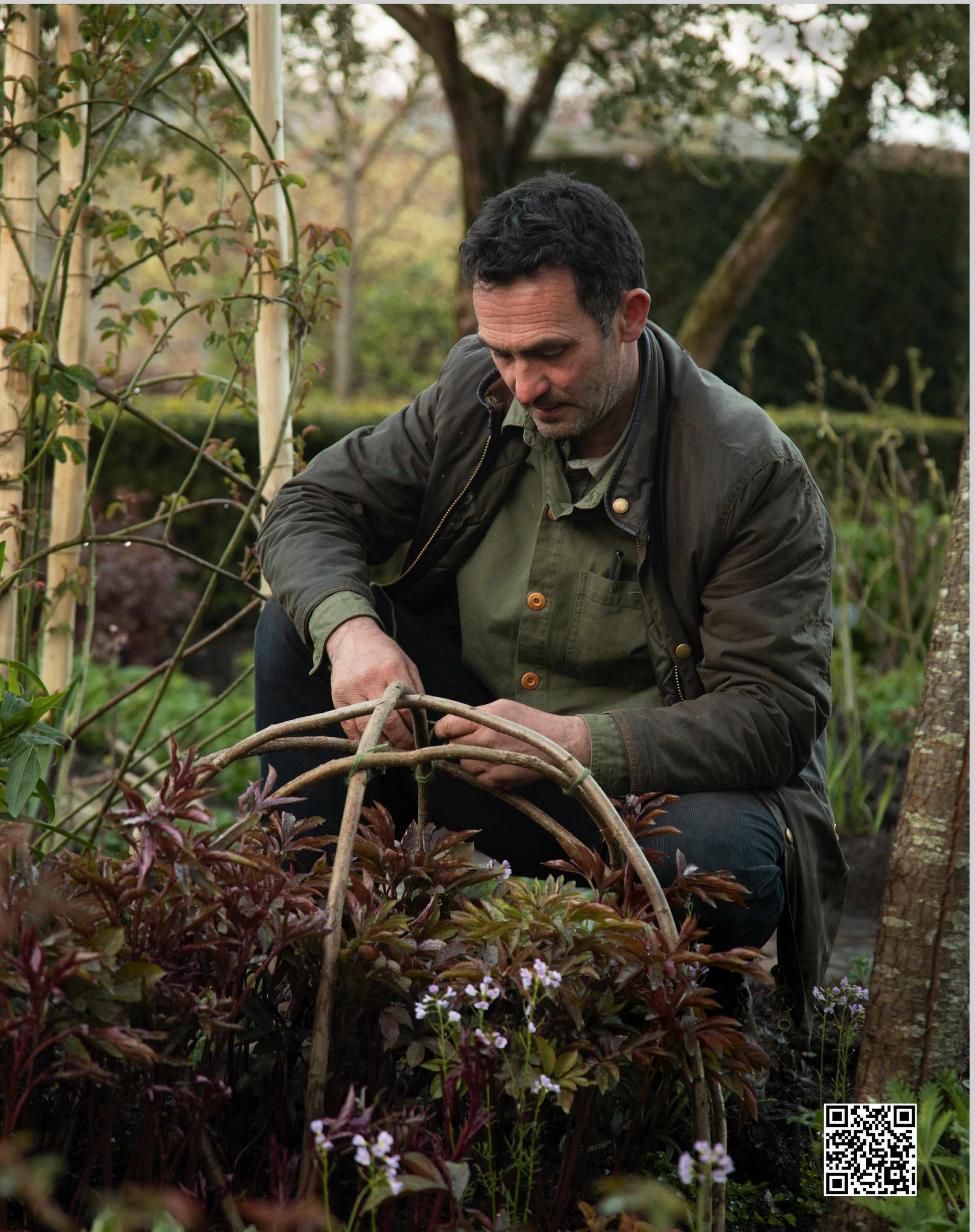
I wanted to mimic the rotund shape of the rose domes, by creating lattices of hazel around the peonies
SCAN HERE
To watch our step-by-step video of Troy creating a peony support, scan the QR code with your phone camera or head to gardensillustrated. com/peonysupport
DIG IN IN THE GARDEN
We want to capture the sense of a garden drawn from the ruins of its abandoned past, suffused with a thick atmosphere of ancientness, where, as Vita put it, ‘everything is hushed and drowsy and silent’
atmosphere of ancientness, where, as Vita put it, ‘everything is hushed and drowsy and silent’. It must also be rooted in the working farm that surrounds it; Vita would not have made a garden here if it was not part of a framework of a larger functioning landscape.
Working with my team and colleagues across the National Trust, we have developed a manifesto for the garden as a whole, and a well-described ideal for each of its rooms. This touchstone seeks to protect the distinctive qualities of Vita and Harold’s Sissinghurst, where flower borders bloom in unorthodox exuberance and roses tumble from the walls in lavish swags, while allowing us to be free to practise the art and craft of responsible flower gardening.
In recent years, the team has embraced a garden that is underpinned by nature and one that sits lightly upon the land. We have encouraged fugitives and ephemerals, such as poppies, ox-eye daisies and red campion, to invade the garden. In addition to them, those plants whose flowers appear to hover, plants with tiny flowers, plants that hold the light and single flowers for pollinating insects
all hit the mark. Don’t mistake this for casual gardening; it is considered and deliberate, a cultivation of fine carelessness where the tipping point is always held in balance. We use these wildflowers as a unifying element to step through the various garden rooms, creating both continuity and a counterpoint to the more traditional ornamental flowers.
Cheek by jowl with these humble wildflowers is woven a thread of the exotic – bulbs from the high lands of Persia and Turkey give a dash of concentrated colour, and the opulence of damask and gallica roses fill the air with an intoxicating fragrance.
How we react to the climate crisis also occupies my mind. There is no doubt that our gardens and the plants we can grow will significantly change because of climate. The question is how they will change, and can we build in resilience to our gardens and our plantings. At Sissinghurst our recent reimagining with Dan Pearson of Harold and Vita’s Delos Garden has provided one option of climate-adaptive planting. I look forward to sharing more about this throughout the year. ■
Main image
Perhaps the most famous of Sissinghurst’s ‘rooms’, the White Garden. Originally laid out as the Rose Garden, but altered (when Vita’s interest in roses grew and the collection moved to the current location in the larger Rose Garden) and planted with a grey, green and white scheme by Vita and Harold in 1951. Traditionally, the garden is at its best in early July when the rambling Rosa ‘Mulliganii’ on the arbor is in flower, but Troy has recently extended the season with spring bulbs and late-summer
Growing spring bulbs in containers gives Troy and
it is needed. Pot displays are also a
and

36 gardensillustrated.com MARCH 2024
flowering plants.
Bottom row, from left Combinations of spring bulbs flood through Sissinghurst from March to May – nowhere more so than in the Spring Garden or Lime Walk. Here Harold amassed a collection of bulbs and grew them en masse under the overhead structure of his pleached limes.
his team the opportunity to set down a splash of colour where
great opportunity to add fragrance
in this respect the two pale, jonquil daffodils in this weathered trough, Narcissus ‘Sailboat’ and N.‘Pueblo’, don’t disappoint. Pear blossom stands out against the blue, spring sky of Sissinghurst’s romantic Orchard.
Turn the page to see more of the spring garden

DIG IN IN THE GARDEN
In early spring, the statue of Bacchus at the centre of Sissinghurst’s Nuttery is underplanted with a carpet of pale-yellow and white anemones woven through with Matteuccia struthiopteris, Epimedium x versicolor ‘Sulphureum’, white Spanish bluebells, veratrums, oxlips and acid-yellow Smyrnium perfoliatum.

USEFUL INFORMATION
Address Sissinghurst Castle Garden, Biddenden Road, nr Cranbrook, Kent TN17 2AB. Tel 01580 710700. Web nationaltrust.org.uk/visit/kent/ sissinghurst-castle-garden Open Gardens open daily, 11am-4pm until 31 March, 11am-5.30pm from 1 April (last entry 45 minutes before closing time). Admission £13.
See more from Troy on Instagram @troyscottsmith1
Spring focus: the Nuttery
Harold Nicolson’s diary records the moment he and Vita decided to buy Sissinghurst, on 6 April 1930.‘We suddenly came upon a nut walk,’ he wrote,‘and that settles it.’
The Sissinghurst Nut Plat, an old Kentish name that Vita and Harold adopted, soon became the spring garden, Vita cramming the ground under the nut trees with coloured primroses and polyanthus.‘This has been a success,’ she wrote in The Garden journal in 1953,‘it really does look like a Persian carpet of many colours in the broken light and shade of the nuts.’ Harold in turn wrote: ‘It is the loveliest planting scheme in the whole world.’ However, by the late 1960s all was not well, as a disease called brown core root rot, a type of Phytophthora, had weakened the polyanthus so much that they had to be removed.
In 1975, head gardeners Pamela Schwerdt and Sibylle Kreutzberger, together with garden advisor Graham Stuart Thomas, devised the planting we see today. A stylised woodland floor, but one that has had magic blown across it. The display begins early with crocuses and scillas, followed by broad carpets of anemones: A nemorosa A. x lipsiensis a beautiful pale-yellow hybrid, and the darker-flowered A ranunculoides. These are soon followed by Euphorbia amygdaloides var. robbiae, the green-leafed form of Lysimachia ciliata, countless cultivars of Epimedium and Smyrnium perfoliatum
DIG IN IN THE GARDEN
38 gardensillustrated.com MARCH 2024
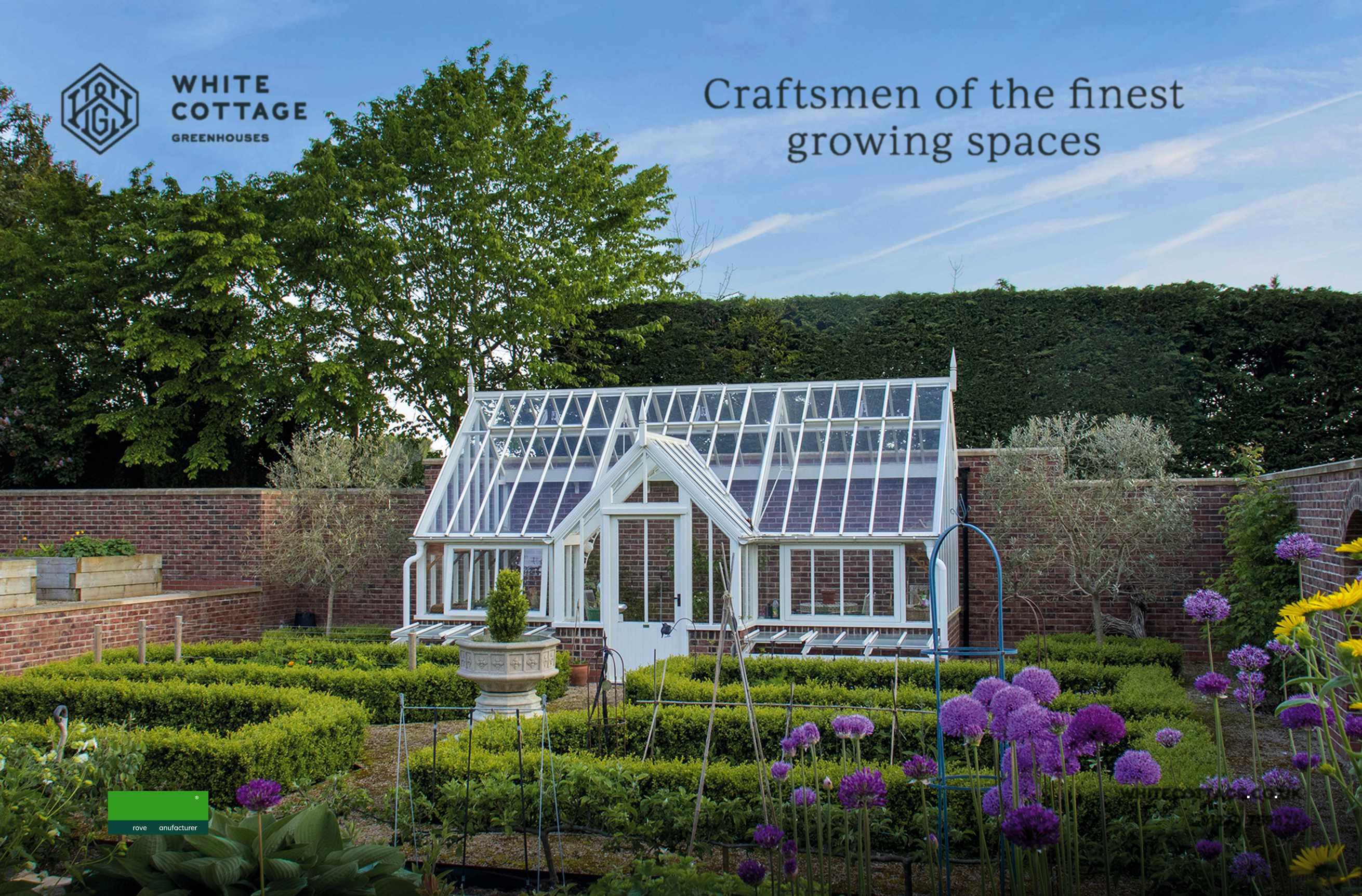

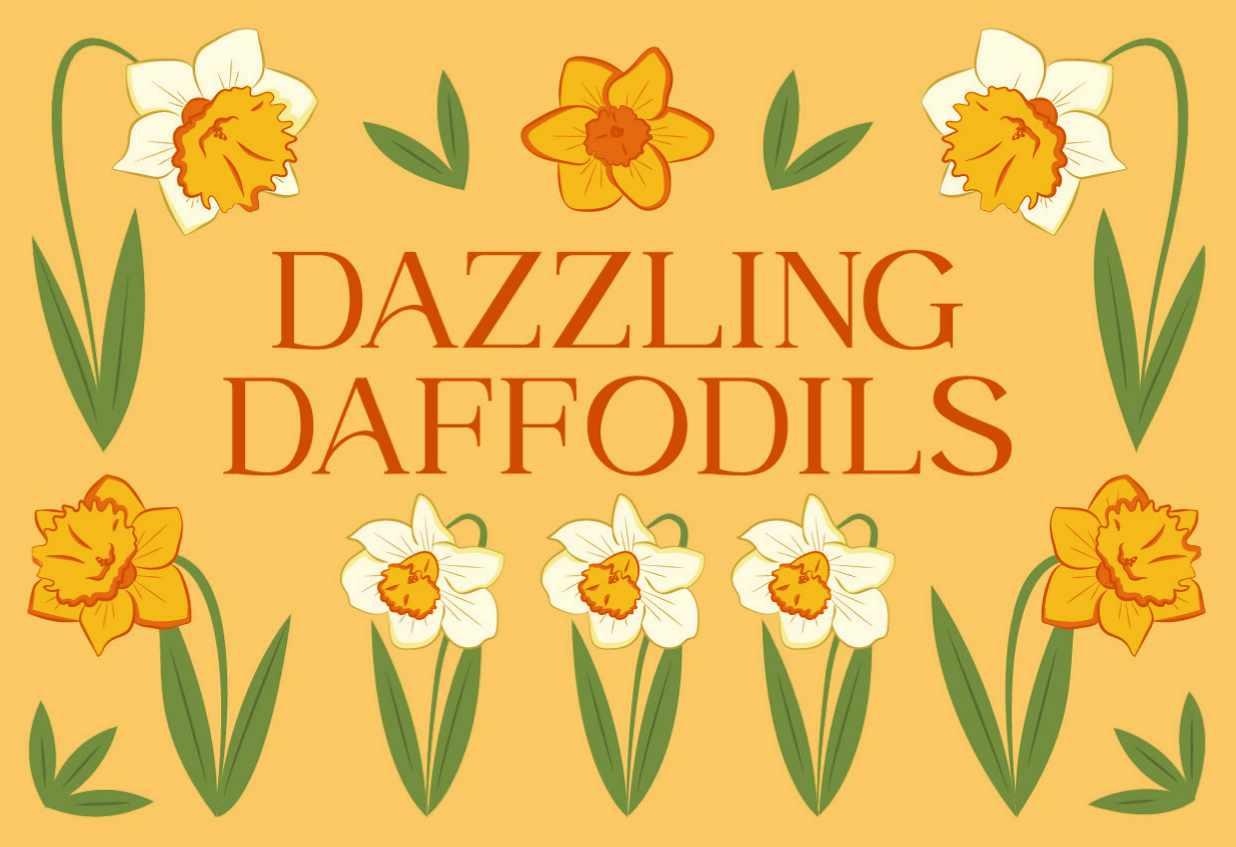


This was Sylvia’s promise to you...

A generation ago, a woman named Sylvia made a promise. As a doctor’s secretary, she’d watched stroke destroy the lives of so many people. She was determined to make sure we could all live in a world where we’re far less likely to lose our lives to stroke.
She kept her promise, and a gift to the Stroke Association was included in her Will. Sylvia’s gift helped fund the work that made sure many more of us survive stroke now than did in her lifetime.
Sylvia changed the story for us all. Now it’s our turn to change the story for those who’ll come after us.
Stroke still shatters lives and tears families apart. And for so many survivors the road to recovery is still long and desperately lonely. If you or someone you love has been affected by stroke – you’ll know just what that means.
Rebuilding lives after stroke
But it doesn’t have to be like this. You can change the story, just like Sylvia did, with a gift in your Will. All it takes is a promise.
You can promise future generations a world where researchers discover new treatments and surgeries and every single stroke survivor has the best care, rehabilitation and support network possible, to help them rebuild their lives.
Will you make that promise to generations to come? Please, leave a gift in your Will to the Stroke Association.
Find out how by calling 020 7566 1505 or email legacy@stroke.org.uk or visit stroke.org.uk/legacy
The Stroke Association is registered as a charity in England and Wales (No 211015) and in Scotland (SC037789). Also registered in the Isle of Man (No. 945) and Jersey (NPO 369), and operating as a charity in Northern Ireland.

GOLDEN WONDERS
Our new columnist Nigel Slater on the amazement he still feels at the arrival of flowering bulbs in spring
ILLUSTRATION PAUL WEARING PORTRAIT JENNY ZARINS
It is half a century since I ran up the path to my father’s greenhouse to tell him that the seeds I had planted in my thin strip of garden were peeping through. I can no longer remember if it was the calendula, cosmos or candytuft (my pocket money obviously hadn’t got me very far through the seed catalogue), but I still remember the excitement with which those shoots were greeted. To be honest, it is no different now: the excitement – no, the amazement – that a seed I have sown or bulb I have planted is poking its green tip through the earth.
Current ‘amazements’ are the collection of narcissi in pots clustered about my long, slim London garden. They announced their presence in December with small upheavals and fissures in the compost that signalled a vernal stirring underneath. There are plenty of snow whites this year: the graceful Narcissus ‘Thalia’, N. ‘Petrel’ and N. ‘Elka’ all growing in pots until I decide if they will naturalise happily in the beds, by which I mean are not too tall and finish tidily. I don’t mind that the varieties I have around this garden are well known; some might say, unadventurous. Familiar faces are reassuring, particularly in spring. “Oh, hello again” has always been an easier greeting for me than “pleased to meet you”.
There will always be a place for the old classics in my pots and window boxes. N. ‘Cheerfulness’, N. ‘Cornish Chuckles’ and the crumpled face of N. ‘Sir Winston Churchill’ are as sure and steady as they come. As much as I look forward to the annual toot-toot of orange trumpets from Narcissus ‘Jetfire’ and N. ‘Itzim’, the majority of early spring joy comes in the faded primrose shades of N. ‘Angel’s Whisper’, N. ‘Silver Chimes’ and – new to me this year – N. ‘Pipit’. Each pot is protected with a witch’s hat of chicken wire, which has worked a treat for the past two years and can be recycled for years to come. The cheery, cheeky N. ‘Tête-à-tête’ is irresistible and I have planted it in abundance around the bare
DIG IN THE GARDEN CHRONICLES MARCH 2024 gardensillustrated.com 41

Thewonderofbothcookingand gardeningneverdims;suchjoys asbunsrisingandbulbsbreaking groundburnevermorebrightly
stems of my Magnolia denudata and Cornus kousa var. chinensis ‘China Girl’ in their oversized pots.
The continual wonder that I can grow things is, I can assure you, echoed in the kitchen. A successful cake taken from the oven today will be met with the same sense of disbelief as that first tray of butterfly cakes I baked aged nine. The wonder of both cooking and gardening never dims; indeed, as life itself becomes more complicated, such small joys as buns rising and bulbs breaking ground seem to burn more brightly than ever.
Despite the encouragement of my father and Mr Ritson, my school rural science teacher, there is still a sense of wonder that the glowing cluster of Crocus ‘Orange Monarch’ around the roots of my old Robinia aren’t just beginner’s luck, or that Rosa Lady Emma Hamilton’s new, wine-red shoots have anything to do with my pruning.
I have no formal gardening training. Everything I know (or think I know) has come from reading and watching and listening, soaking up other gardeners’ experiences like a sponge. As when my first row of carrot seedlings came to naught, I continue to take every failure personally. Why have the mixed colour crocuses, which were such delicate fairy cups in the catalogue, come up the size of small tulips? Each failed snowdrop or misjudged shade of hydrangea feels like a personal insult. It hurt when the hepatica around my artfully rotting tree stump suddenly disappeared, and when the epimediums were not quite the shade of amber I had hoped. I am only grateful that the successes are as enriching as they were all those decades ago.
Early spring is the time I cherish the smallest of garden pleasures. The tufts of palest blue Scilla siberica singing their hearts out in the borders and the sudden, ghostly note of perfume that seems to come from nowhere. Spring is always curiously late in my garden, despite being sheltered and surrounded by other buildings, but there are still small surprises to gasp at, if you look closely. This is the time to smell everything that is good in the garden. Not just the narcissi, but the warm pile of plum and cherry leaves that has already broken down into tilth the colour of chocolate cake; the smell of my old gardening jumper; and the ball of tarred string in the trug (and second only to sweet peas and in particular Lathyrus odoratus ‘Cupani’ in my list of favourite garden smells).
Early spring is also a time full of hope. The hope that muchloved plants will return (I eagerly await news from the Viburnum plicatum f. tomentosum ‘Mariesii’ that tragically lost all its leaves last summer) and that the new additions I planted in autumn, such as an expensive Acer palmatum, have settled in and overwintered safely. Having finally got round to planting primroses, tiny, chubby cushions that went into the ground in late autumn, I long to see those first pointed yellow buds appear among the acid-green rosettes of crinkly leaves. The softest of yellows, they will look good among the moss-covered logs at the top of the garden.
Oh, and look, the emerald green beaks of tulips ‘Brown Sugar’ and ‘Black Parrot’ (a sumptuous combination of faded silk and velvet ballgown) are once again pushing through in the terracotta planters outside the kitchen door. Planted late last November, deeper than a burrowing squirrel should go and guarded throughout the winter by sentries of hazel twigs, the plump shoots are already showing. It is once again time to run excitedly up the garden path. ■
42 gardensillustrated.com MARCH 2024 DIG IN THE GARDEN CHRONICLES

PLANT SUPPORTS & Garden Artefacts
Made in England www.leanderplantsupports.co.uk
Tel. 01773 550495

ONE YEAR GOOD GARDENING DIPLOMA

9 – 12 May 2024
B O O K N OW AT rhsmalvern.co.uk
September 2024 – beginning July 2025 – BOOKING NOW
Covers the best in planting design while training in the more serious aspects of horticultural techniques. Practical sessions held at Arundel Castle under the guidance of head gardener Martin Duncan and at Sandhill Farm House, Rogate. Lectures by many leading gardening personalities and regular visits to outstanding private gardens. Students also learn to draw up planting plans.
(1 day a week (Tues), 10.30am–3.15pm, over three terms)
THE ESSENTIAL GARDEN DESIGN DIPLOMA
January – March 2025 – BOOKING NOW
Based at the Chelsea Physic Garden and led by Rosemary Alexander and architect Catriona Rowbotham, the course is an overview of Garden Design, covering all the elements needed to rethink an average garden.Taking students step by step through site surveying, using the grid, horizontal and vertical features, garden layouts and planting plans, costing and specification, plus drawing tuition and homework on design and plant portfolios.Tutors are well respected in the industry and will guide students on how to succeed in this diverse profession.
(2 days a week (Wed &Thu), 10.30am–3.15pm, plus 2 days homework)
GARDENING FOR BEGINNERS
4 days Wednesday & Thursday 17/18 April & 24/25 April 2024
One of our most popular courses, led by master horticulturist Ben Pope, which aims to take each student through all the practical elements of caring for a garden from soil, tools, maintenance, seed sowing and propagating, weed control and pests and diseases.The first 3 days will be spent with lectures at the Chelsea Physic Garden and the final day will be spent gaining practical experience in Rosemary Alexander’s much praised garden near Petersfield and another private garden nearby, where Ben is in charge. Participants will be given a chance to prune, plant, sow seeds and regular maintenance tasks will be discussed. A light lunch and refreshments will be provided daily.
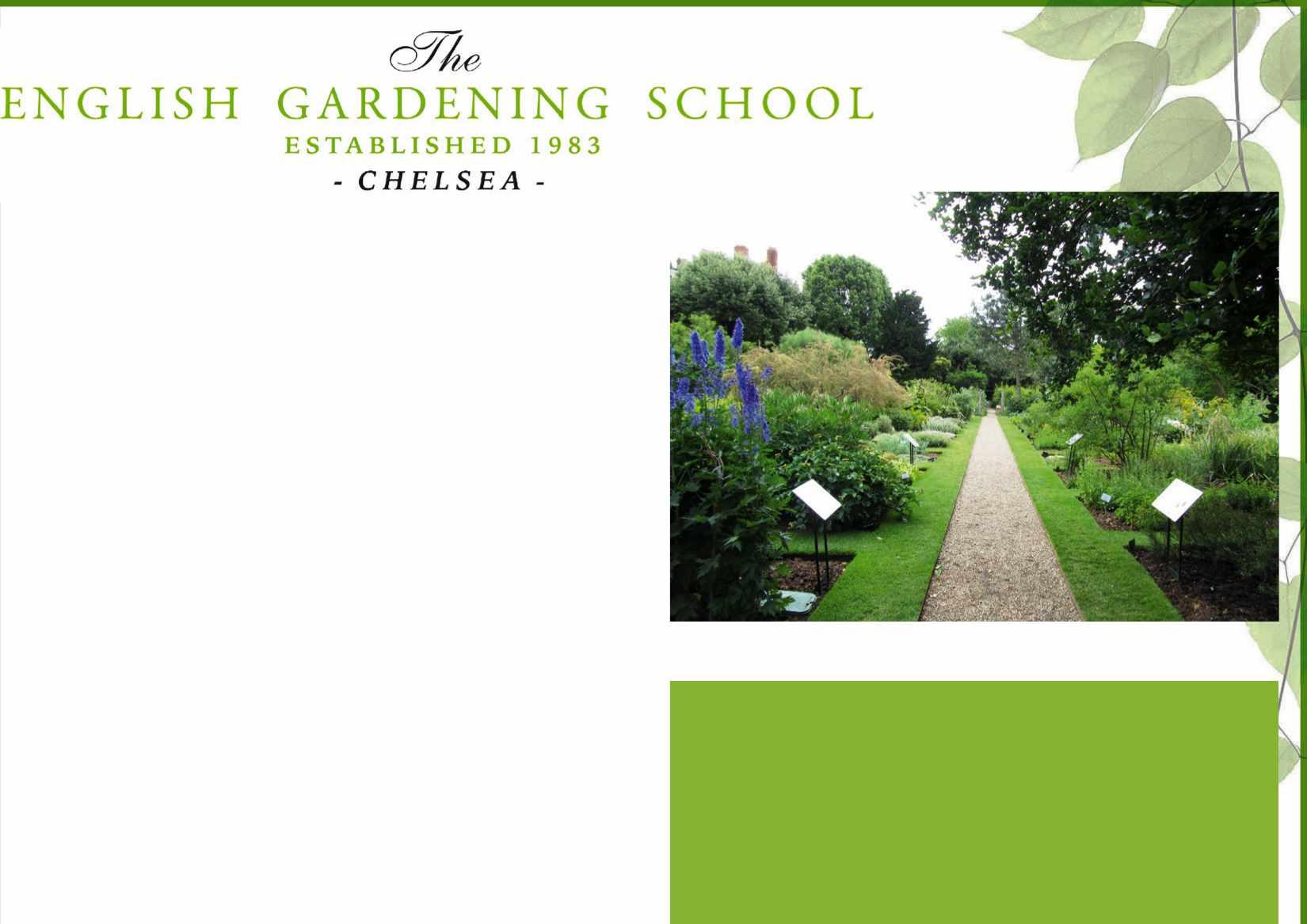
GARDEN DESIGN & CARING FOR YOUR GARDEN
Distance Learning Courses study anytime, anywhere in the world
A stepping stone to a new career.These two correspondence courses are a step by step guide to either designing your own garden or learning how to plant and maintain an existing garden: drawing up plans, hard landscaping, site analysis, planting, month by month tasks etc.Taught through a comprehensive course book, with projects submitted to us. (1-3 years to complete and individual assessment)
Not sure which Diploma course is for you?
We prefer potential students to attend an Information Session when Rosemary explains the course and you can see our work space.
JUST CONTACT US TO SET UP A DATE & TIME
www.englishgardeningschool.co.uk
Email: info@englishgardeningschool.co.uk
Tel: 01730 818373
Long established as the leader in gardening tuition
Based at the unique and historic Chelsea Physic Garden

Beautiful designs for perennials,roses,shrubs & climbers
S PP follow us on Instagram
Garden of Medicinal Plants – Chelsea Physic Garden Photo: R Alexander
I N A S S O C I AT I O N W I T H B R O U G H T T O Y O U B Y

WITHOUTWATER
Jo Wakelin has transformed a dry, rural paddock into an exciting new water-resilient garden with no irrigation and plants from all over the world
44 gardensillustrated.com MARCH 2024
PHOTOGRAPHS CLAIRE TAKACS

IN BRIEF
What A horticulturist’s completely dry gravel garden. Where Central Otago, New Zealand. Size Half an acre. Soil Very light gravelly alkaline soil. Climate Hot dry summers, with cold winters. Hardiness zone USDA 8a.
Jo Wakelin’s windswept garden overlooks Lake Dunstan with views of Mount Koinga and the Bendigo hills clad in the native shrub Kunzea serotina. Close to the house she has created a robust garden combining drought-tolerant planting from around the world along with a small courtyard and kitchen garden.
GARDEN INTERNATIONAL
We all talk about rain – too much or not enough. We are inseparable from our need for water. So, many people thought I was mad to even attempt to create a garden on a completely bare site without any additional water in Central Otago, the driest part of New Zealand.
Having purchased 29 acres of rural pastureland, where sheep had grazed among the stones, I arrived with a degree, a new spade, a deep love of wild places and a strong sense of adventure. Back then, I was on my own, and I think the solitude gave me the creative space to focus deeply on designing the garden.
But soon, the battles with hordes of hungry rabbits, insistent winds, searing dry summer heat and frosty winters, in a garden that had more gravel than soil, had me doubting my resolve. When I discovered that the annual rainfall in my first year there was less than 300mm, it left me with a sinking feeling.
I focused on the process of designing and building a house. The sheer dry austerity of the treeless site prompted me to create a large

A tall, upright stone and an orb formed of two wagon wheel rims create focal points among Jo’s mix of non-native plants, including Euphorbia spinosa, Salvia yangii, Phlomis lanata, Sedum crassularia and Tanacetum densum subsp. amani, that thrive in the harsh conditions of Jo’s garden. Close to the pond where she swims on hot days, Jo has planted swathes of the native tussock grass Poa cita to transition the garden to the wilder areas where it grows naturally.
pond to reflect the sky and serve as a foil to the brownness; a haven to attract birdlife and swim on hot days. Roof water fed the pond, along with a supply from a rural irrigation system, allowing a selection of New Zealand native wetland species including Carex secta, Phormium tenax and Austroderia richardii to flourish around the edges.
As I settled into my house and became familiar with the light and the astonishing landscape, I spent many evenings reading extensively and drawing a garden plan. The biggest challenge was how to blend the planting seamlessly with the surrounding landscape. I surreptitiously stalked past unloved gardens of older houses in the Cromwell township, nine miles away, looking for species that survived well with little care. Forgotten plants around old gold-miners’ cottages provided more inspiration.
Over the next five years, in between working as a lecturer in horticulture and horse-riding trips into the mountains, I crafted the structure of the garden and rock features. My two children, when home from university with their friends, provided young muscle to move large rocks. I started planting, beginning with the courtyard. I planted directly into the derelict pasture, and battled the enormous crops of the weed fat hen that emerged, sucking
GARDEN INTERNATIONAL 46 gardensillustrated.com MARCH 2024

I surreptitiously stalked past unloved gardens of older houses in the Cromwell township, nine miles away, looking for species that survived well with little care
moisture as it grew. I propagated from successful species to plant in drifts, and grew other prospective candidates from seed.
Summers here can involve prolonged rainless periods of eight to ten weeks, and my initial determination to rely totally on rainwater wavered. But I held fast thanks to gardener Bev McConnell, who created Ayrlies, one of New Zealand’s foremost private gardens. She advised me to stick to my vision. I held her words in my mind as I watched, stoically, while plants I had carefully nurtured and propagated shrivelled.
Now, many years later, after an awful lot of research and the anxious testing of many plants – which has inevitably included more than one failure – and a honing of techniques, I am the proud steward of a future-proofed, vibrant garden that sits gently in this dramatic landscape. The curves and mounds of my design distil the features of the garden and echo the colours in the natural surroundings. Rather than borrowing the landscape, the garden is at one with it, and blends seamlessly with the wide sky and soaring
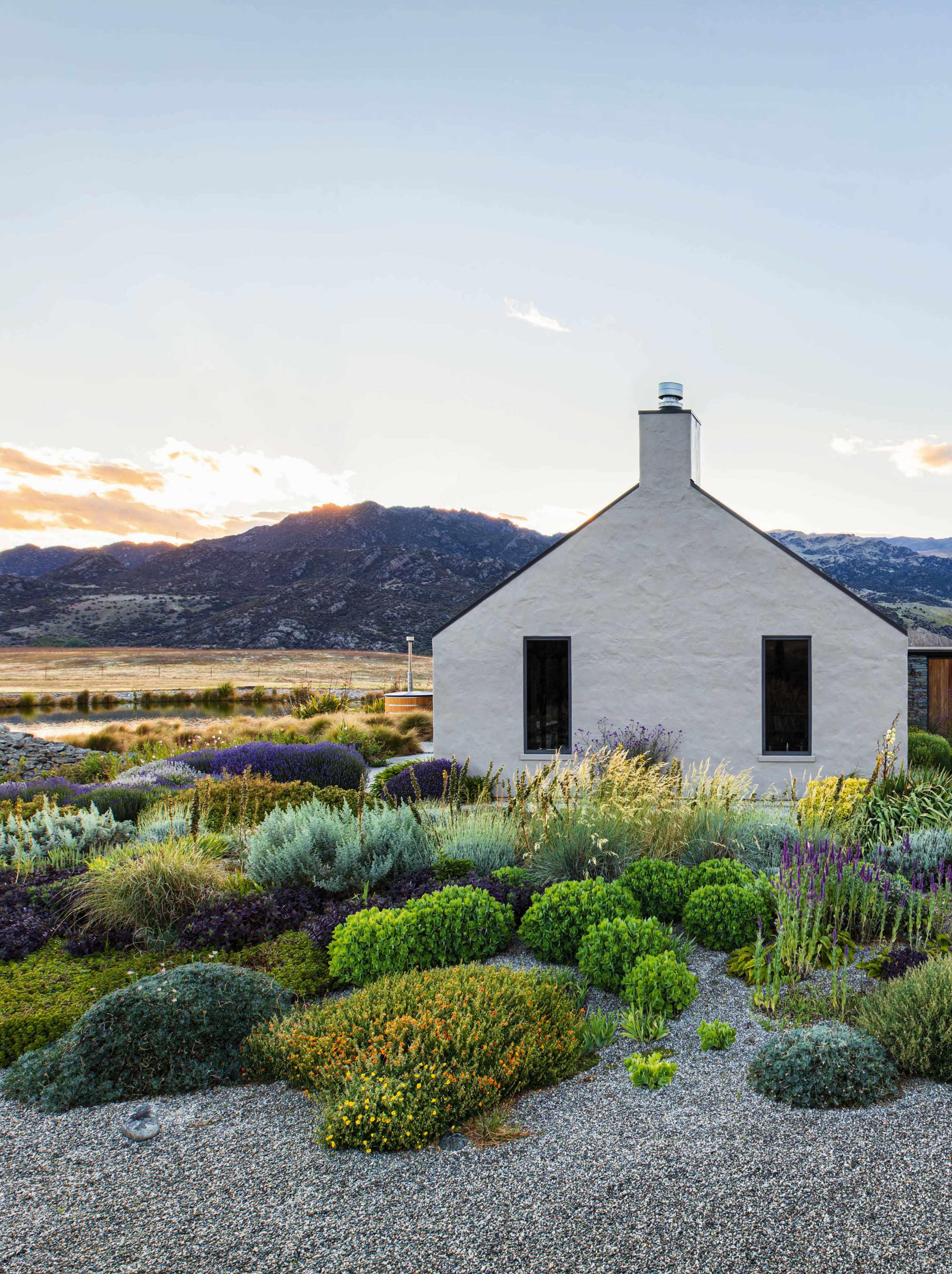
To the side of the house, airy plantings of Miscanthus sinensis ‘Morning Light’, Helictotrichon sempervirens and Artemisia ‘Powis Castle’ surround tight mounds of Hylotelephium spectabile ‘Stardust’, Rhodanthemum hosmariense and Helianthemum ‘Ben Vane’ that echo the surrounding hills. Jo’s carefully built rock pile mirrors the shape of Mount Koinga beyond and provides shelter for native lizards that bask in the sun on the stone ledges.
2,000m-high mountain ranges, snow-covered in winter, that dominate our horizon.
Over that time, I tested many different plants, including echinaceas, which flaunted drought-tolerant reputations but disappointed in reality, drooping and dwindling in the light dry soil; and some plants I tried from Mediterranean zones found the winter minimums of -10ºC to -12ºC too cold. I have been amazed, however, by the huge range of plants that not only tolerate but flourish in the lean conditions. They include sedums, phlomis and euphorbias, along with bearded irises, tanacetums, cistus, ballotas, buckwheats and lavenders, all of which thrive rather than just survive. Without irrigation, plants stay more compact, and sedums certainly don’t need the Chelsea chop.
The garden is split into two halves, each containing a distinct plant group: Central Otago natives, which have grown locally for millennia; and colourful exotic species from dry, winter-cold regions of the globe. Coming from an ecology background, I found myself
GARDEN INTERNATIONAL 48 gardensillustrated.com MARCH 2024
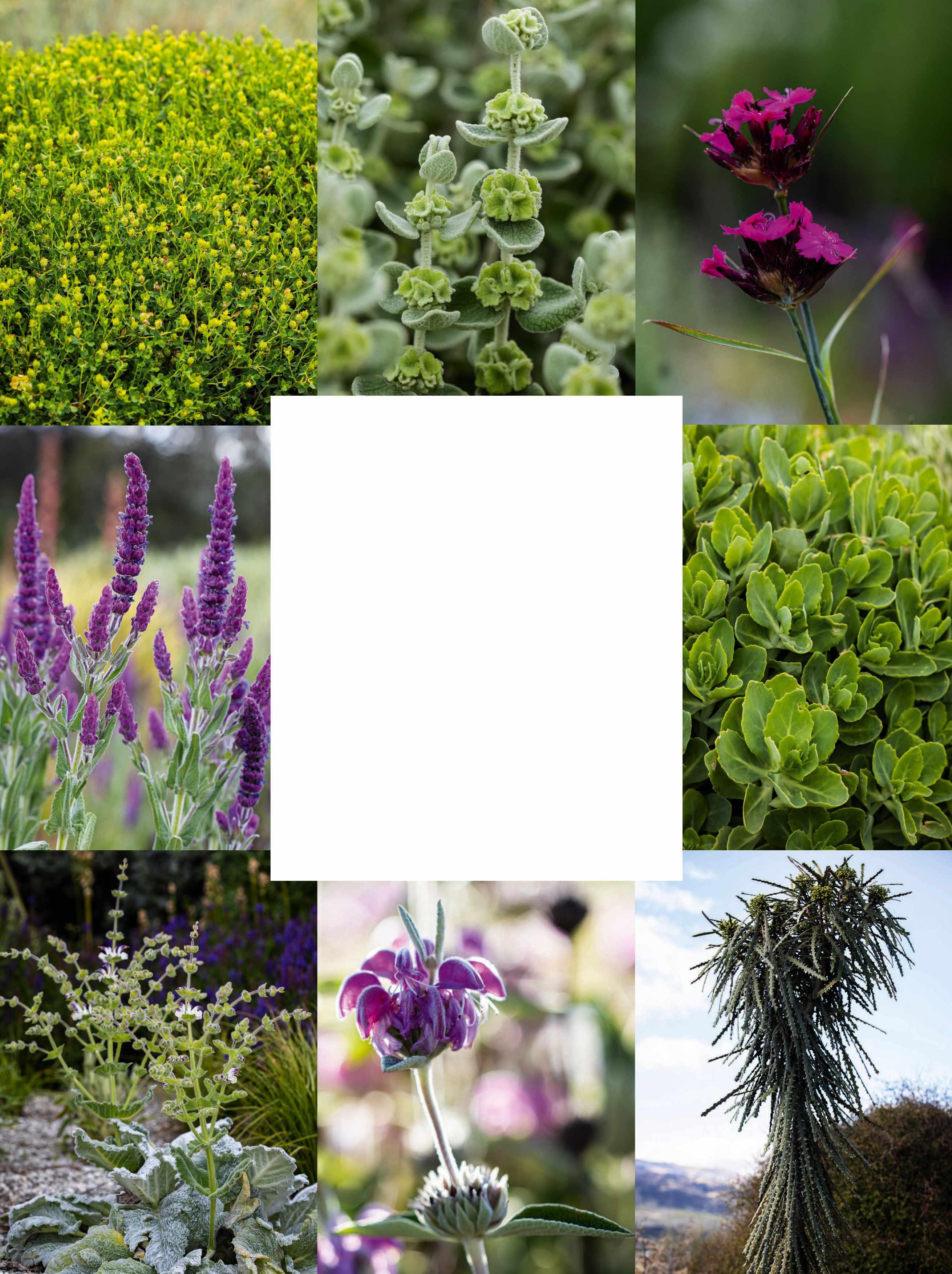
JO’S 8 KEY PLANTS
1 Euphorbia spinosa The perfectly shaped green domes of this Mediterranean species provide a structural element and are often commented on by garden visitors. Height and spread: 40cm x 1m. RHS H4, USDA 8a-9b†
2 Ballota pseudodictamnus I love the soft, lichen-green leaves of this tough sub-shrub, and pollinators of all kinds mass around the tiny lilac flowers.
90cm x 1.6m. AGM*. RHS H4, USDA 8b-10a.
3 Dianthus carthusianorum Light wiry stems topped with magenta flowers over a long period. Given to me by my mother, it is a great performer.
80cm x 40cm. RHS H7, USDA 6a-9b.
4 Nepeta tuberosa A tuberous catmint with strong vertical silvery-green stems topped with purple flowers. Dies back when the dry summer heat intensifies. 80cm x 20cm. RHS H4, USDA 8a-9b.
5 Hylotelephium spectabile ‘Stardust’ The tiny creamy flowers of this sedum form a cauliflower-like mass in summer. A perfect pollinator magnet. 40cm x 40cm. RHS H7, USDA 6a-9b.
6 Salvia argentea The remarkable furry leaves are a frequently touched textural feature. Plants last for years in the lean gravelly soil.
90cm x 50cm. AGM. RHS H5, USDA 5a-8b.
7 Phlomis italica This treasured phlomis flourishes against a sunny stone wall. Felted, ovate-lanceolate leaves and whorls of hooded pink flowers.
1.2m x 1.5m. RHS H4, USDA 7a-10b.
8 Pseudopanax ferox A unique evergreen New Zealand tree, the slow-growing toothed lancewood or horoeka adds a touch of architectural zing. Now self-seeding around the garden much to my delight. 6m x 1m. RHS H4, USDA 8a-9b.
*Holds an Award of Garden Merit from the Royal Horticultural Society. †Hardiness ratings given where available.
1 2 4 5 6 7 3
8
unable to mix olive-toned New Zealand native species, such as the wondrous Pseudopanax ferox, the fierce lancewood, known as horoeka, with vibrantly coloured plants from other parts of the world.
The timing of planting and my establishment techniques have been crucial to my success. The best planting window is in autumn, as the summer heat lessens, the nights cool and rains begin. I planted small-grade plants that were very well hardened, and this allowed the roots to establish before the following summer’s stresses.
I also mulched with pea gravel after planting, which has been the other key to plant survival. There was a ready supply from a quarry nearby where the gravel is an unused waste product from the screening process. My use of fertiliser is restricted to bulbs, and I didn’t amend the light soil in any way with organic matter or compost.
My many hours of local rock collecting have led to the creation of lichen-covered swirls and mounds, which reflect the goldmining history of this area, where miners piled rocks in fevered pursuit of gold. I also introduced old rusting water pipes and ironpointed bridge piles once used in a river, to symbolise the fact that there is no irrigation in the garden.
The garden now swarms with insects, native lizards dart about, and 35 species of birds have visited. The schist rock walls that enclose the courtyard provide crevices for small native bees, and large bumblebees rumble and crowd the scented lemon flowers

Lavenders, including Lavandula angustifolia ‘Pacific Blue’, along with sedums and Oenothera lindheimeri, continue to sparkle through the summer among the pea gravel mulch while many other plants take on tawny hues and settle into a dry summer dormancy. Although this is New Zealand’s driest region a tantalising summer shower moves across the face of the snow-topped Pisa mountains.
of Elaeagnus ‘Quicksilver’. Frogs in the large pond are so loud on summer nights that it is hard to sleep.
The golden flowers of New Zealand native Sophora microphylla, known locally as the small-leaved kōwhai, bring the native bellbirds, or korimako, to feed on the nectar. I grew these trees from seed I collected from relict trees while riding my horse in the hills, and now the exquisitely tuned song of bellbirds brings me a deep satisfaction.
Gardening without irrigation has restored my relationship with rain, and I feel an intensified connection to the sky, mountains and winds around me. But it requires a mindset change. I no longer worry about the deaths of treasured plants during prolonged summer dry periods, as I am confident they will flush into growth again as the cooler, moister autumn returns, much as these species do in their native regions.
Without additional water, the effect of seasonal change in the garden is amplified, and my link to the climate cycle is enhanced. After a long dry summer, the colour spectrum shifts to tawny golds, and many plants enter summer dormancy. There is nothing more joyful than the sight of darkening clouds and that special smell of petrichor that fills the air as autumn rain falls on dry earth. ■
USEFUL INFORMATION
See more of Jo Wakelin’s garden on Instagram @jo.wakelin
GARDEN INTERNATIONAL 50 gardensillustrated.com MARCH 2024
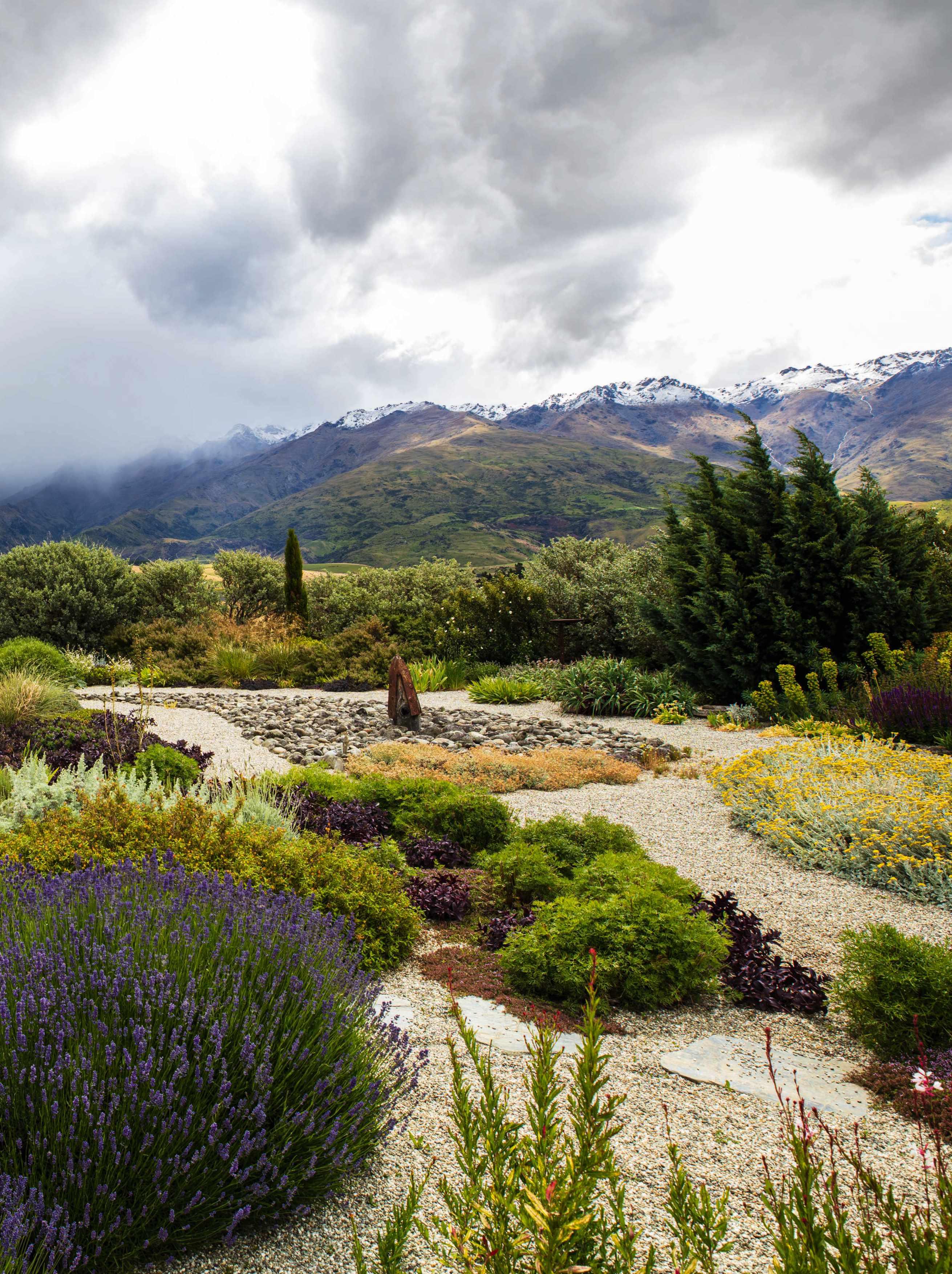
I no longer worry about the deaths of treasured plants during prolonged summer dry periods, as I am confident they will flush into growth again as the cooler, moister autumn returns
The straw mulch for organic gardening
As
used by the RHS
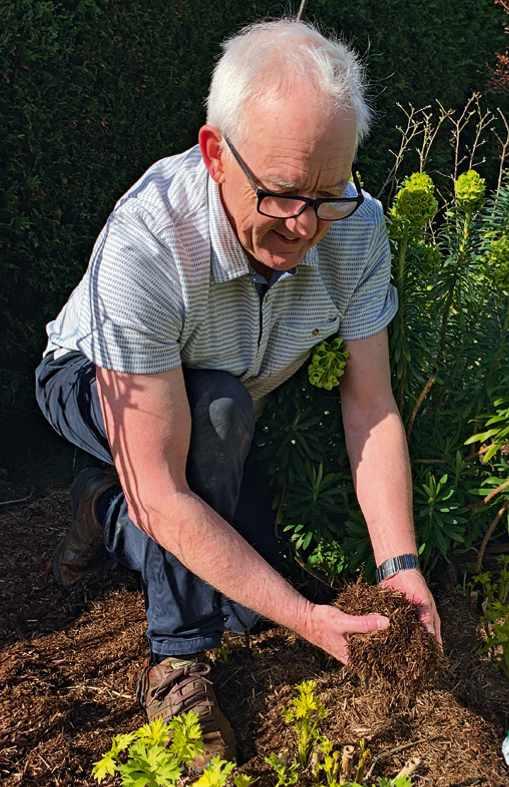
‘Strulch’ is a scientific success story. At Leeds University, Dr Geoff Whiteley found he could replicate a natural process which preserves straw. He and his wife Jackie brought the new environmentally friendly, biodegradable mulch to market . Fast becoming the preferred mulch of professional and amateur gardeners.
Strulch is made from wheat straw and the mineralisation process preserves the straw and turns it dark brown. It has a neutral pH so can be used anywhere in the garden and it lasts for up to two years. Over time, the mulch improves soil structure and adds nutrients. The physical properties of the mulch and the added minerals deter slugs and snails.
Strulch is available in 9kg bags from our stockists. For best value buy direct in bulk on pallets of 12, 25, 40 or 48 x 13.5 kg bags.
Professional gardeners
veg the on it used have “I beds as a heavy mulch and experimenting in some areas as a no dig concept; laid it on cardboard on the beds
seed into it. I have used it on two of the herbaceous borders to keep the weeds down and keep the ground warmer to help protect the crowns.
Head Gardener, Floors Castle Gardens pleased extremely am “I with the product’s ability to suppress weed growth and have noted an observable improvement in overall plant health and soil structure over a wide range of plants with successive applications.
David Redmore, Director Garden and Landscape Design.
“We have been using Strulch for over 20 years, we use different mulches including home produced but Strulch is our ‘go to’ product where we need reliable weed suppression, moisture retention and preservation on the soil surface. Strulch is slow to breakdown, successful where there is competing demand from hedges in herbaceous border designs and nonrotational areas of kitchen/ productive gardens. It is both lightweight and easy to apply and yet doesn’t blow off the bed, is quick to spread, it doesn’t clump or ball either and the depth of application can be varied easily. One can reliably get two years out of an initial application, and this allows us to vary our practices from year to year”
Elizabeth
Balmforth,
Head of Gardens, Mount St John.



TM
Advertisement feature Available in bulk and in small amounts from our stockists visit: www.strulch.co.uk or call Withslug andsnail deterrent
Used by major horticultural gardens
WILL TOMSON
As director at Sheffield-based design studio Creative Cultivation, Will designs and creates sustainably built wildlife gardens and natural swimming ponds
PORTRAIT ANDREW MONTGOMERY
What did you do before gardening? I initially studied ecology, then worked various jobs including being a dog-sledding and whale-watching guide. I then taught song writing to disengaged young people for a charity where I was asked to help design and build a garden. This was a lightbulb moment: realising the creativity of gardening could be combined with helping wildlife and people.
Horticultural heroes I admire those who question everything and challenge old convention. In the past, William Robinson, Christopher Lloyd and Beth Chatto. More recently, Peter Korn, John Little, Keith Wiley and Josh Sparkes. Pam Lewis at Sticky Wicket and her approach to wildlife gardening is a huge inspiration to me. And I wouldn’t be where I am without friend and designer Tracy McQue. Favourite landscape that has influenced you Ponds, scrubland and woodland edges, due to the diversity they support. Also brownfield sites where the resilience of nature against human development can be observed.
Three most worthwhile tips Think of plants that are perfect for caterpillars, as they crucially support the entire food web. Gardening for wildlife doesn’t have to mean untidy. Neat stone walls and dead wood can be artfully incorporated into a design to provide habitat. Add water bodies of any size; the more, the better.
Most valuable training Finding spaces to garden, then observing how plants grow, die and interact with each other and wildlife. Working in Japan also helped me appreciate wabi-sabi, the beauty in decay. Favourite planting style Naturalistic with some formal elements, with the plants being selected for their ecosystem function as well as aesthetic beauty. Biggest challenge facing gardeners today How we build and plant resilient gardens that have longevity. It’s so important we share information about what has worked and what hasn’t, to help inform plant choices in the future.
In what direction do you see horticulture heading? Hopefully a wider acceptance of gardening sensitively for wildlife. We are in a biodiversity crisis, and as gardeners we are custodians of spaces that can provide a sanctuary.

Next big project Building more ponds of varying sizes to create a wide range of interlinked habitats and plants. I built my own natural swimming pool in my garden and now have commissions to build more.
Do you have a particular aim in your gardening career? To create landscapes for people, food and wildlife that last for future generations to enjoy and to inspire a new generation of gardeners. We run a social night called Talking Plants in Sheffield (@talking_plants_sheffield) for gardeners and plant lovers to get together and share information. Contact willtomsondesign@gmail.com; @creativecultivation; creativecultivation.co.uk
Gardening for wildlife doesn’t have to mean untidy. Neat stone walls can be artfully incorporated into a design to provide habitat
MARCH 2024 gardensillustrated.com 53 PEOPLE GARDENING TALENT

54 gardensillustrated.com MARCH 2024
Bergenia ‘Schneekoenigin’
A popular cultivar with large white flowers that change to pale pink as they age. The tall, reddish flower stems reach over 40cm tall and hold the blooms well above the broad leaves.
Height and spread: 50cm x 40cm. RHS H6, USDA 6b-7b†
PLANT PROFILE BERGENIA
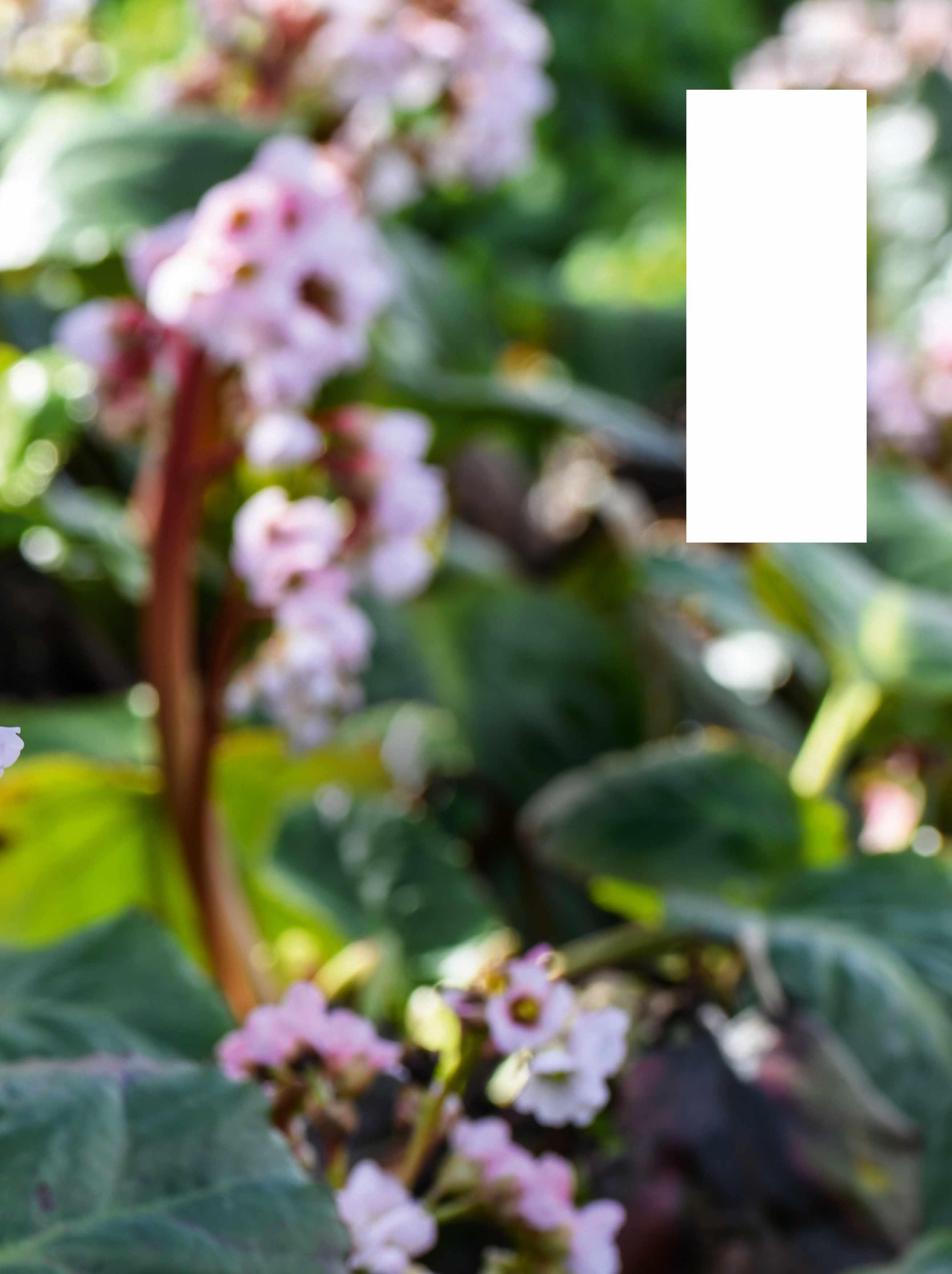
FACT FILE
What A genus of around ten species of tough, evergreen perennials with early spring flowers. They’re commonly known as elephant’s ears.
Season Early to mid-spring.
Size 20-50cm tall.
Conditions Moist but well-drained soil in sun or part shade.
Origins Cool temperate regions and mountains of Asia, from Kazakhstan in the west, through Russia, the Himalayas and China, to South Korea. Hardiness Hardy throughout most of the UK with an RHS hardiness rating of H5 to H7 and suitable for gardens in USDA hardiness zones 3a to 9b.
*Holds an Award of Garden Merit from the Royal Horticultural Society.
†Hardiness ratings given where available.
BERGENIA
Elephant’s ears are low-maintenance, easy-going evergreen perennials that will brighten up the early spring garden with their colourful booms
WORDS RICHARD WILFORD PHOTOGRAPHS JASON INGRAM
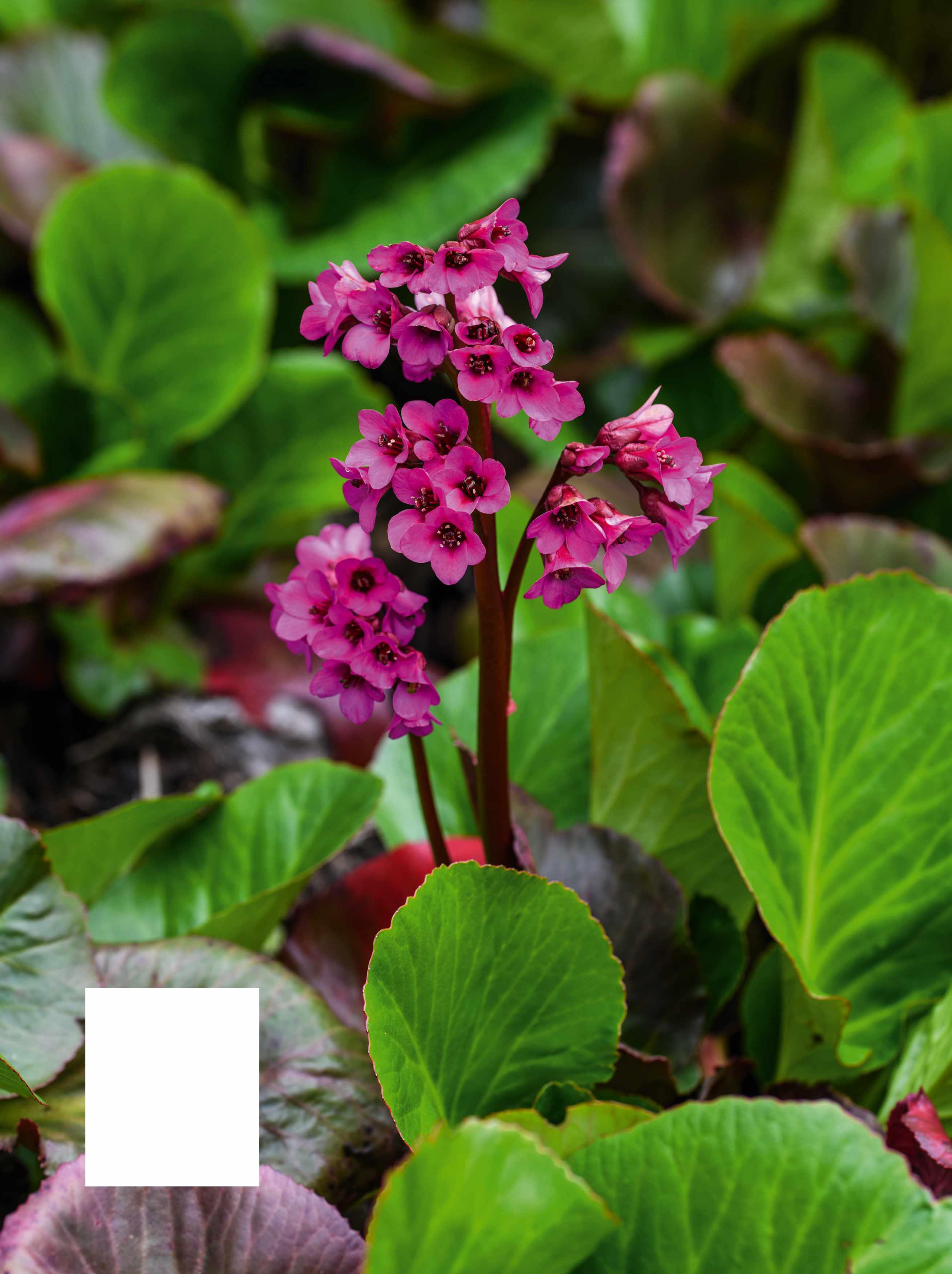 Bergenia ‘Bressingham Ruby’
Great for winter foliage and spring flowers, this striking cultivar was raised at Bressingham Gardens and introduced in 1984. Deep red-magenta blooms rise above rounded leaves that turn purple in winter. 60cm x 30cm. RHS H5, USDA 4a-9b.
Bergenia ‘Bressingham Ruby’
Great for winter foliage and spring flowers, this striking cultivar was raised at Bressingham Gardens and introduced in 1984. Deep red-magenta blooms rise above rounded leaves that turn purple in winter. 60cm x 30cm. RHS H5, USDA 4a-9b.
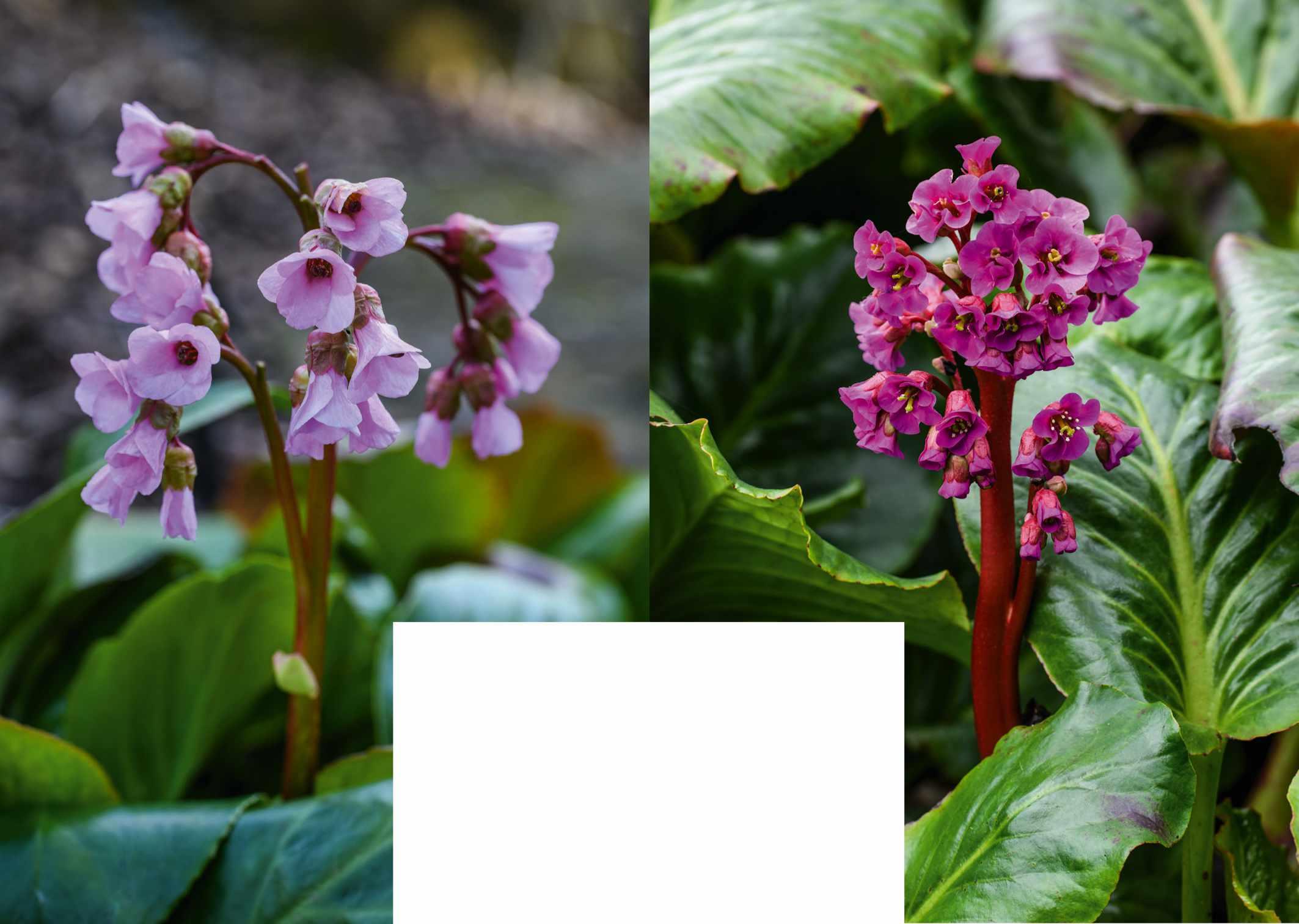
Bergenia crassifolia
var. pacifica
This variety is found along the eastern coast of Russia where it survives freezing winter conditions. The flowers are among the earliest to appear and are a rich cyclamen pink. 35cm x 35cm. RHS H7.
With their early spring flowers and sculptural foliage, together with their ability to survive neglect and tolerate a range of conditions, you would think bergenias would be hugely popular plants. Unfortunately, many gardeners turn their noses up at them, probably because too often they are planted in uninspiring displays or abandoned corners, their leaves left to become ragged and untidy. The common name of elephant’s ears doesn’t help. Give them a little care, however, and the right mix of companion plants, and they can compete with the best spring bulbs for early colour in the garden.
The genus Bergenia is named after German botanist and physician Karl August von Bergen (1704-1759) and there are currently ten recognised species, found from Kazakhstan to South Korea, around half of which are commonly grown in gardens.
Bergenia is in the same family as saxifrages and plants have similar, but larger, flowers, with five white, pink, magenta or reddish-purple petals forming a cup or bell that either hangs down or is held erect. The flowers first appear close to the ground in late winter, tightly packed in a coiled inflorescence, but as spring progresses the flower stem elongates, holding the flowers above the leaves, reaching up to 50cm tall.
These are mostly evergreen plants that grow from a tough, thick rhizome. New
Bergenia cordifolia
‘Purpurea’
A hardy species from Siberia that was introduced to cultivation in England in the 1760s. This cultivar has magentapink flowers above large, broadly ovate leaves that become purplish in winter. 60cm x 75cm.
leaves appear at the same time as the flowers and, like the flower stems, they gradually grow larger. By the end of the summer, the leaves of some bergenias can become huge and unkempt but when young and fresh, they complement the flowers perfectly.
Some bergenias have richly coloured foliage, mostly derived from the Himalayan and Chinese species Bergenia purpurascens. The leaves are shiny and a dark, reddish-purple, a colour that is at its strongest in the cold days of winter. Cultivars such as ‘Eroica’ and ‘Overture’ have inherited this characteristic and, like the species, make great foliage plants for a winter garden. In summer, the leaves are more bronzy green but maintain their smooth, glossy surface.
The leaves of B ciliata are covered in short, silvery hairs that are especially obvious along the margins. This is one of the smaller bergenias, but the leaves can still grow very large, to more than 20cm across by the summer. The white flowers, sometimes flushed with pale pink, appear in early spring near ground level alongside the small, rounded, hairy new leaves, making this one of the most attractive species.
Some bergenias have richly coloured foliage that is at its strongest in the cold days of winter
Most elegant of all is B. emeiensis, named after Mount Emei in China. Pure-white, pendent blooms are held on pink-flushed stems above smooth, oval leaves that never reach an ungainly size. The flowers are more spread out along the inflorescence than most species, giving this plant a look of restraint. This is the most recent species to arrive in our
To continue turn to page 61 MARCH 2024 gardensillustrated.com 57 PLANT PROFILE BERGENIA
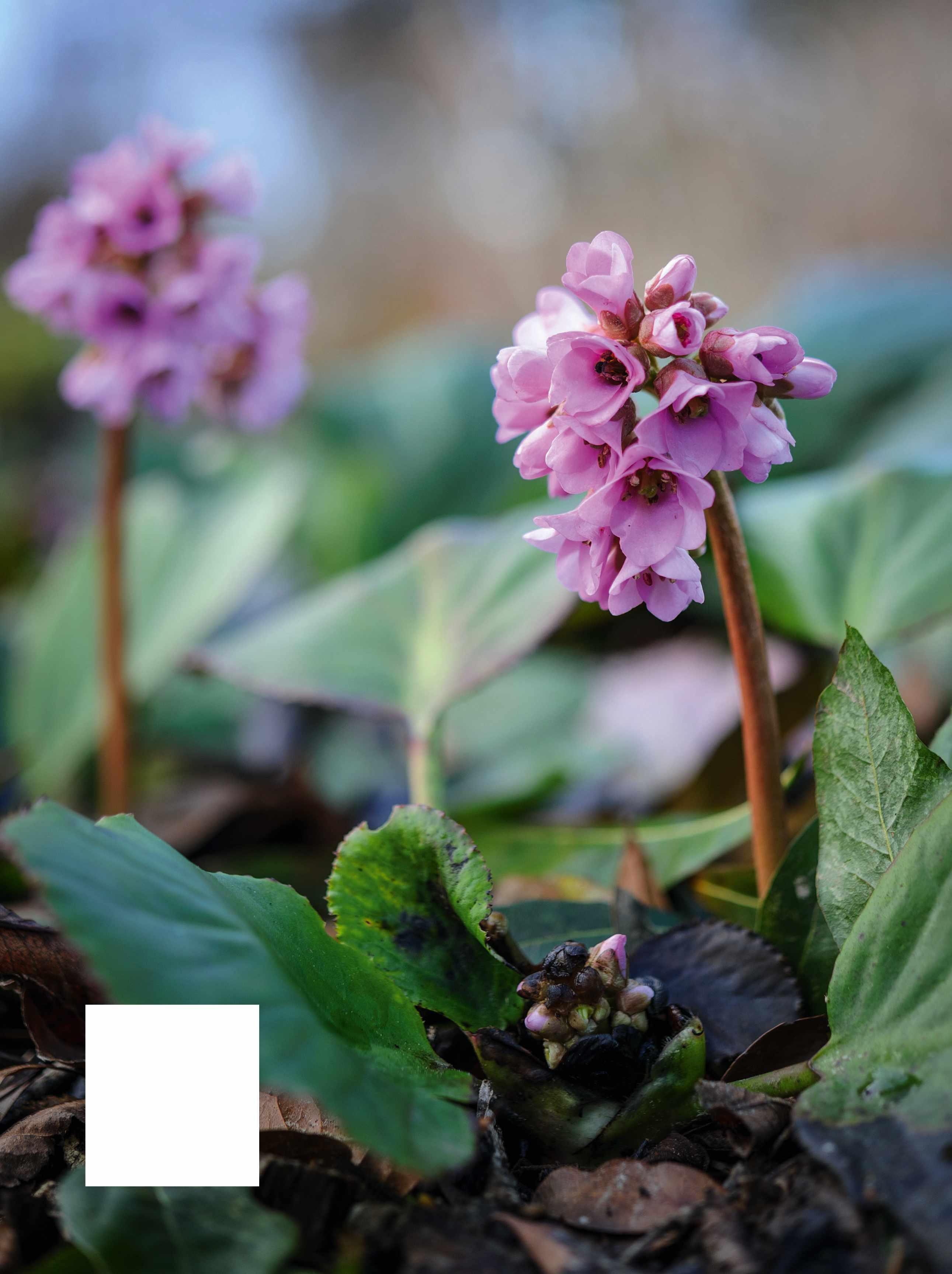
Probably the most common Bergenia in cultivation, this vigorous, leafy hybrid has pink flowers on a short stem. It is most likely responsible for bergenias’ poor reputation but has its uses for covering untended ground. 20-50cm x 50cm.
Bergenia x schmidtii

Bergenia purpurascens
A Chinese clump-forming species that is grown primarily for its winter foliage. The oval-shaped leaves have a glossy surface and turn a deep reddish purple in winter, making it perfect for a winter garden. 30-40cm x 50cm. AGM*. RHS H5.
Bergenia ‘Pink Dragonfly’
A compact form displaying bright, vivid pink flowers in early to mid spring. Noted for its neat, oval, deep-green leaves that turn deep purple-red in winter. Perfect for brightening up a shady spot. 30cm x 30cm.
How to grow Bergenia
• Bergenias are tough plants that can be grown in sun or partial shade. Most are fully hardy but in some, the leaves can be damaged by frost. They will survive drought, but will do best if the soil retains a little moisture in summer. Other than in deep shade or waterlogged soil, bergenias will thrive almost anywhere, but perform best in full sun. Their thick rhizomes should be planted at, or just under, the soil surface. They don’t want to be buried, as this can cause them to rot.
• Generally, bergenias are evergreen plants but leaves that are damaged by frost or slugs are best removed to make way for the new foliage to appear in spring. This also makes them look a lot neater. The purple-leaved cultivars that have wonderful winter foliage benefit from some tidying in autumn but make sure plenty of foliage remains to ensure a good display. For all bergenias, it is a good idea
to remove any torn or marked leaves in summer, to keep them looking good. Bergenias will survive neglect but their poor reputation is down to them too often being left to look untidy.
• The rhizomes will slowly spread to form a dense mat so if your plants are growing beyond their allotted spot, or are dying out in the centre, you can dig them up and cut the rhizomes into pieces to replant. They root as they grow so you can cut pieces a few centimetres long with roots already attached, as long as they have at least one leaf rosette or bud. Replant them in small groups or even as individual pieces among your favoured companion plants.
• Division by cutting the rhizomes is the easiest way to propagate bergenias but you can also grow them from seed. The seeds need a period of cold before they germinate, and they also need light. Once
they have had their cold spell, either naturally outside or by keeping them in a fridge for a couple of weeks, sow them on to the soil surface in a seed tray and keep them warm. Germination can be slow but once they start to grow, they should flower in two years. You can also sow the seed directly on to raked garden soil in spring.
• If you buy a new Bergenia, the best time to plant is in autumn so the plant will have time to become established before the winter. If you plant in summer, make sure you water plants well during dry periods, to allow them to grow their roots into the soil. They will benefit from some organic matter in the soil too, such as compost or leafmould, to encourage good root growth. A light mulch of garden compost every winter will feed them and keep them healthy. They won’t need any other feeding apart from this.
PLANT PROFILE BERGENIA MARCH 2024 gardensillustrated.com 59
Bergenia ‘Bressingham White’
A free-flowering form. Its pure-white flowers, which become tinted with palest pink as they age, are held on red stems. Leaves remain green throughout winter. 30cm x 45cm. AGM. RHS H6, USDA 4a-9b.
Bergenia ciliata
A small, variable, Himalayan species that grows to 30cm tall, with finely hairy, round leaves. The old leaves may be damaged by frost but as the pale-pink flowers appear, new leaves begin to grow. 30cm x 40cm.

Bergenia ‘Mrs Crawford’
Pure-white flowers with green calyces are held on green stems. Unlike most white forms, the flowers do not become pink as they age. The leaves are neat and turn reddish purple in winter. 30cm x 30cm. RHS H7.
Bergenia ‘Angel Kiss’
One of the Dragonfly Series, which is a range of compact, floriferous bergenias that are suitable for both for the border or for growing in containers. Its snowwhite flowers age to pale pink. 25cm x 30cm.

Bergenia stracheyi
This thoroughly hardy species comes from high mountains in central Asia. The leaves have toothed margins but need tidying to keep this plant looking good. The flowers are pink, or white tinged with pink. 20cm x 30cm. RHS H6.
Bergenia emeiensis
The loose panicles of this elegant species hold pure-white flowers that face downwards, above oval, dark-green leaves. Pink forms are also available. Although hardy, the leaves may be damaged by frost. 30cm x 30cm. RHS H7.
gardens, only named in 1988, but it is slowly becoming more widely available. If there is one plant that will save the reputation of bergenias, this is it.
The most commonly grown species, B. crassifolia, has large, coarse leaves. It makes good groundcover and can form impenetrable mats if allowed to spread. In B crassifolia var. pacifica the flowers are deeper pink. These flowers create a colourful display, but if the leaves are not kept tidy, the effect is ruined. The same can be said of some of the hybrids, such as the vigorous B. x schmidtii (B ciliata x B crassifolia) but there are some wonderful cultivars that deserve more attention, such as those in the compact Dragonfly Series.
Planted as individuals in combination with other spring flowers, they can look stunning
Where to see and buy
As they naturally form a dense mat and are tolerant of poor soils in sun or partial shade, bergenias are often used to fill awkward gaps or to suppress weeds under a shrub or tree. Neglected because they can cope with it, they end up as large, untidy blocks that no amount of flower can redeem. But, planted as individuals in combination with other spring flowers or the fresh foliage of perennials, they can look stunning. The rich magenta flowers of B. ‘Bressingham Ruby’ pushing through the lime-green leaves of fringe cups, Tellima grandiflora, for example, or alongside new unfurling fern fronds, can make a delightful spring display, or plant them with bulbs such as daffodils that will flower at the same time. Spread your bergenias
out and surround them with other plants to really appreciate how beautiful they can be. Keep the leaves tidy and if the plants spread too much, lift and divide them to give them some space. They may be low maintenance, but bergenias still need a little care to look their best. ■
Richard Wilford is head of garden design and collection support at the Royal Botanic Gardens, Kew.
• Ballyrobert Gardens 154 Ballyrobert Road, Ballyclare, Co. Antrim, BT39 9RT. Tel 028 9344 0101, ballyrobertgardens.com
• Beth Chatto’s Plants & Gardens Clacton Road, Elmstead Market, Elmstead, Colchester, Essex CO7 7DB.
Tel 01206 822007, bethchatto.co.uk
• The Bressingham Gardens Low Road, Diss, Norfolk IP22 2AA. Tel 01379 686900, thebressinghamgardens.com
• Claire Austin Hardy Plants White Hopton Farm, Wern Lane, Sarn, Newtown, Powys SY16 4EN. Tel 01686 670342, claireaustin-hardyplants.co.uk
• RHS Garden Rosemoor Great Torrington, Devon EX38 8PH. Tel 01805 62406, rhs.org.uk/gardens/rosemoor
• Royal Botanic Gardens, Kew Richmond, London TW9 3AE.
Tel 020 8332 5655, kew.org
MARCH 2024 gardensillustrated.com 61 PLANT PROFILE BERGENIA
GARDENS, KEW, WHERE THESE IMAGES WERE
MANY THANKS TO THE ROYAL BOTANIC
TAKEN
VÉRONIQUE MURE
The French botanist who is championing naturalistic gardening, on the importance of preserving ecosystems and ensuring plants have a living soil
WORDS LOUISA JONES PORTRAIT SABRINA ROTHE
Gardeners today sometimes think saving the planet means sacrificing pleasure for duty. Even with our swing towards naturalistic gardening, it seems that ecologists and gardeners are often opposed in their approach, with each side picking art or ethics. French botanist-gardener Véronique Mure insists you can have both, and enjoy every minute of it.
Véronique grew up in the Mediterranean region of southern France, spending weekends in the garrigue landscape, which supports many of the tough, drought-resistant plants that are becoming increasingly familiar to UK gardeners adapting to climate change. She went on to study ecology and botany at the University of Montpellier, where she was taught by Francis Hallé, the botanist and biologist known for his innovative research on the architecture of trees.
After graduating, she worked briefly as a garden consultant, before being elected to deputy mayor of Nîmes for seven years, during which time she was responsible for public gardens, forest and environment.
Today, she divides her time between teaching botany at Marseille’s prestigious École Nationale Supérieure du Paysage de Versailles-Marseille, with running her Nîmes-based consultancy, Botanique-JardinsPaysages, where she is pioneering a new professional role for botanists in the design of large-scale public projects. When ancient plane trees along the 240km of the Canal du Midi needed replacing, Véronique was asked to advise on appropriate species. She’s also worked with dry-gardening guru Olivier Filippi and with landscape architects APS to plant the dramatic hilltop Jardin des Migrations around Marseille’s Mediterranean museum, Mucem.
timid, and selecting and spreading favoured seeds, may not be part of ordinary horticulture, they are undeniably gardening. “It’s not plagiarising nature to draw inspiration from it and take advantage of its processes rather than fight against them,” she says.
Early on she abandoned what she describes as the “extravagant idea” of keeping things clean, and made the colourful wildflowers growing in nearby meadows and verges central to the planting. “We wanted to make the most of their appeal,” she says. “We tested sweet peas, yarrow and fennel seed harvested along the road, producing mixes easily adapted to the soil and climate of our site.”
The result was meadows that produced an explosion of flowers, including ox-eye daisies, field scabious, viper’s bugloss, greater knapweed, common yarrow, wild carrot, native vetch and patches of wild orchids, all allowed to spread freely.
Unlike other naturalistic designers, who often recommend starting from a weed-free site even if that needs to be chemically obtained, Véronique’s approach is to explore what is already there, and how it works – or doesn’t – to establish a solid, realistic base for resistant, long-lasting design. Ongoing change is part of the plan, so she works with evolving communities, not fixed lists of individual species. “All their lives, plants progress in the soil as well as in the air,” she says, “endlessly reinventing their relationship with others.” In her view, “the gardener must be both a naturalist who knows the plants, their needs and their dynamics, and an artist who chooses acceptable forms.”
THE GARDENER MUST BE BOTH A NATURALIST, AND AN ARTIST WHO CHOOSES ACCEPTABLE FORMS
Alongside her many public projects, there have been personal ones too. For 11 years, from 2003, Véronique and her late husband took on 12 acres of former agricultural land, known as La Bigotie, in the Dordogne, where Véronique set about creating her ideal garden, restoring the small ecosystems she observed. In her 2010 book, Les jardins de la Bigotie: petit traité de biodiversité appliquée, she wrote of the garden: ‘Every plot, every hedge, every pond… is a great reservoir of biodiversity. From the wetlands at the bottom of the valley, populated by horsetails, up to the dry hills where sedum, oregano and salad burnet flourish, passing through a small forest of black oaks growing in a joyful disarray.’
Whether what she created is technically a garden may be a moot point but Véronique argues that while tasks such as reconstituting plant groups, gradually normalising the nitrogen content of too-rich soils, removing the most invasive plants for the benefit of the most
Last year, Véronique gave a captivating talk at the Dynamic Vision symposium in Mannheim, Germany, where she drew attention to the underestimated wonders of plants’ root systems. “The main objective of any gardening practice should be to help the roots achieve a certain degree of autonomy, particularly with regard to water, but also to provide them with a living soil and thus encourage symbiotic associations that enable them to live together as a community,” she says. “Of course, gardeners are reassured to see that the plants they look after are growing well, flowering and bearing fruit. But unconsciously, by spending time improving the soil, decompacting or watering it, they are gardening the roots.”
For Véronique, such ecological balance is not added on, but built in from the start. The pleasures are those of co-operation and community, not control; not so much the wow factor perhaps, but gentle, everyday and ever-changing wonderment. ■
USEFUL INFORMATION
Find out more about Véronique Mure’s work at botanique-jardins-paysages.com
62 gardensillustrated.com MARCH 2024 PEOPLE WHO’S WHO

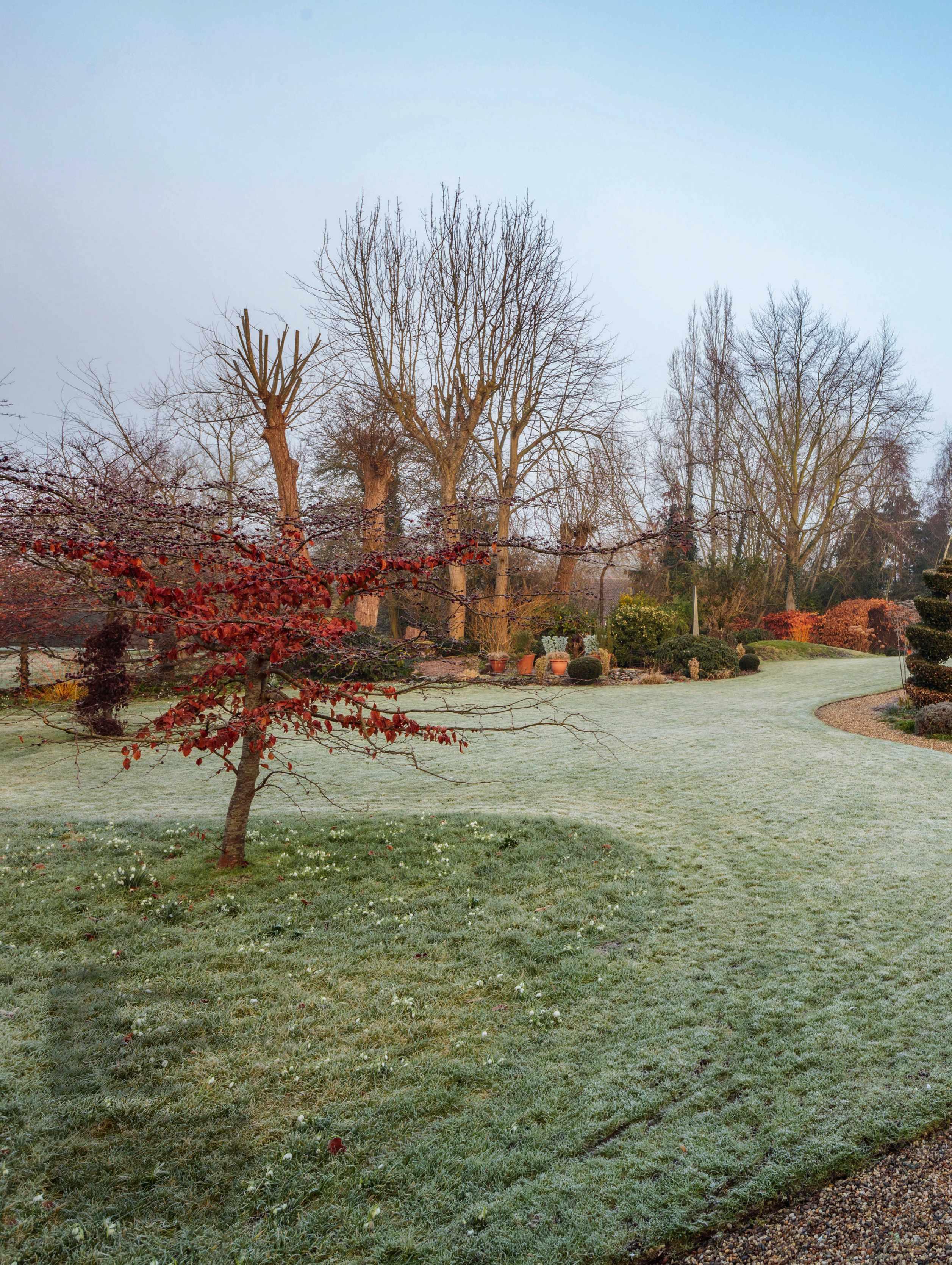
IN BRIEF
What Eclectic cottage garden.
Where Essex.
Size Three-quarters of an acre.
Soil Loam improved with 30 years of home-made compost.
Climate Temperate.
Hardiness zone USDA 8.
The undulations and curves of the frosty lawn offer several pathways to explore the garden in early spring. A trio of spiral, topiary Laurus nobilis trees stand sentinel alongside the Coppings’ 16th-century cottage. A Parrotia persica tree in the lawn is underplanted with snowdrops.
GARDEN COUNTRY 64 gardensillustrated.com MARCH 2024

DOWN THE GARDEN PATH
Journeys both physical and metaphorical are at the heart of Jackie and John Copping’s Essex garden
WORDS JANE PERRONE PHOTOGRAPHS CLIVE NICHOLS
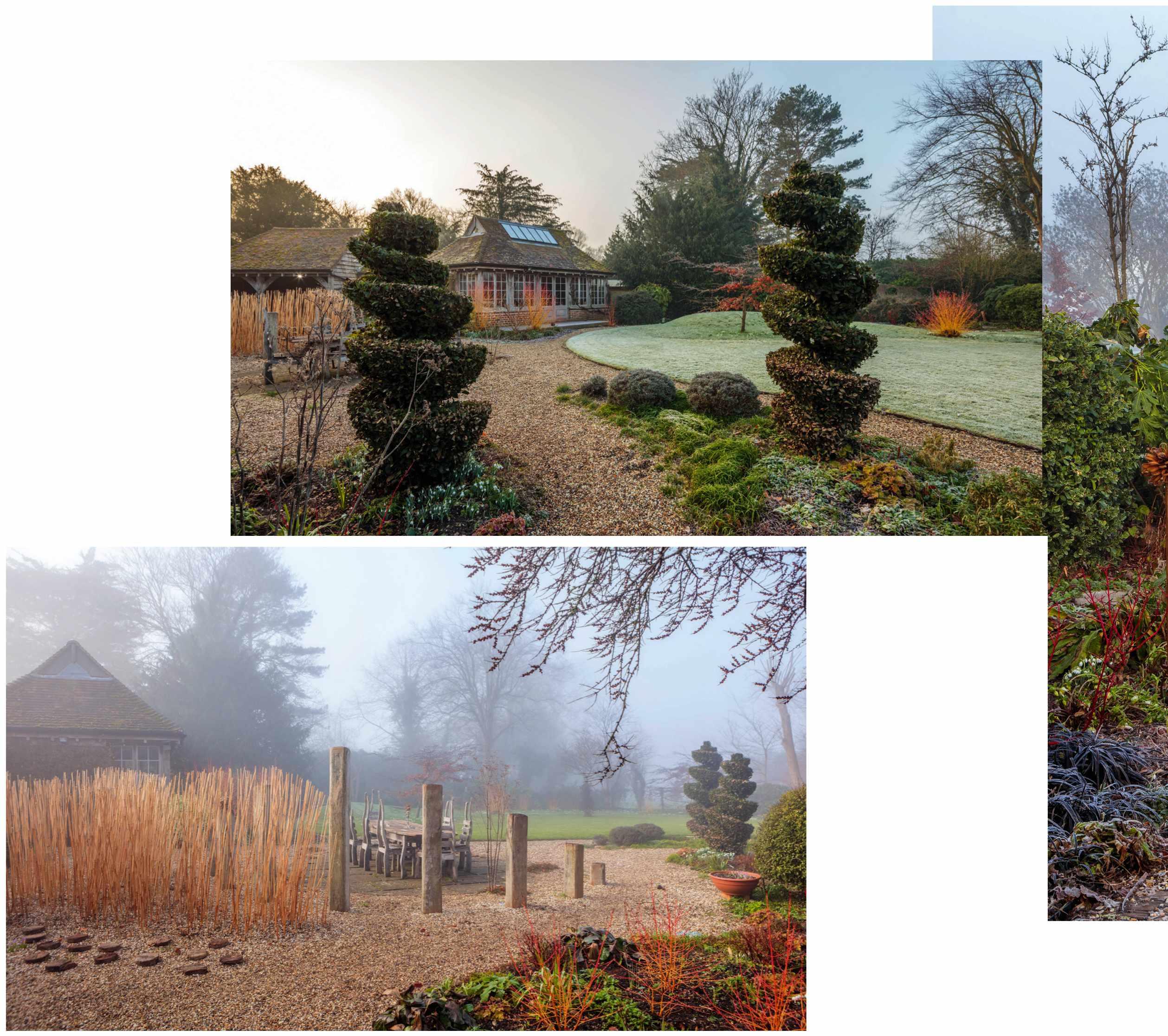
Above Wonderfully twisted topiary bay trees (Laurus nobilis) frame the view from the cottage towards the summer house and beyond that to the garage, both built by the owners to match the architecture of their historic house.
Left At the centre of the garden, between the house and summer house, the Coppings’ dining area, with its distinctive oak ladderback dining table and chairs, is given a sense of seclusion by the giant grass Miscanthus x giganteus with stalks cut into a striking stand of waves.
Below Mature birch trees and a cloud-pruned mixed hedge lie either side of the curved gate at the entrance to the cottage.
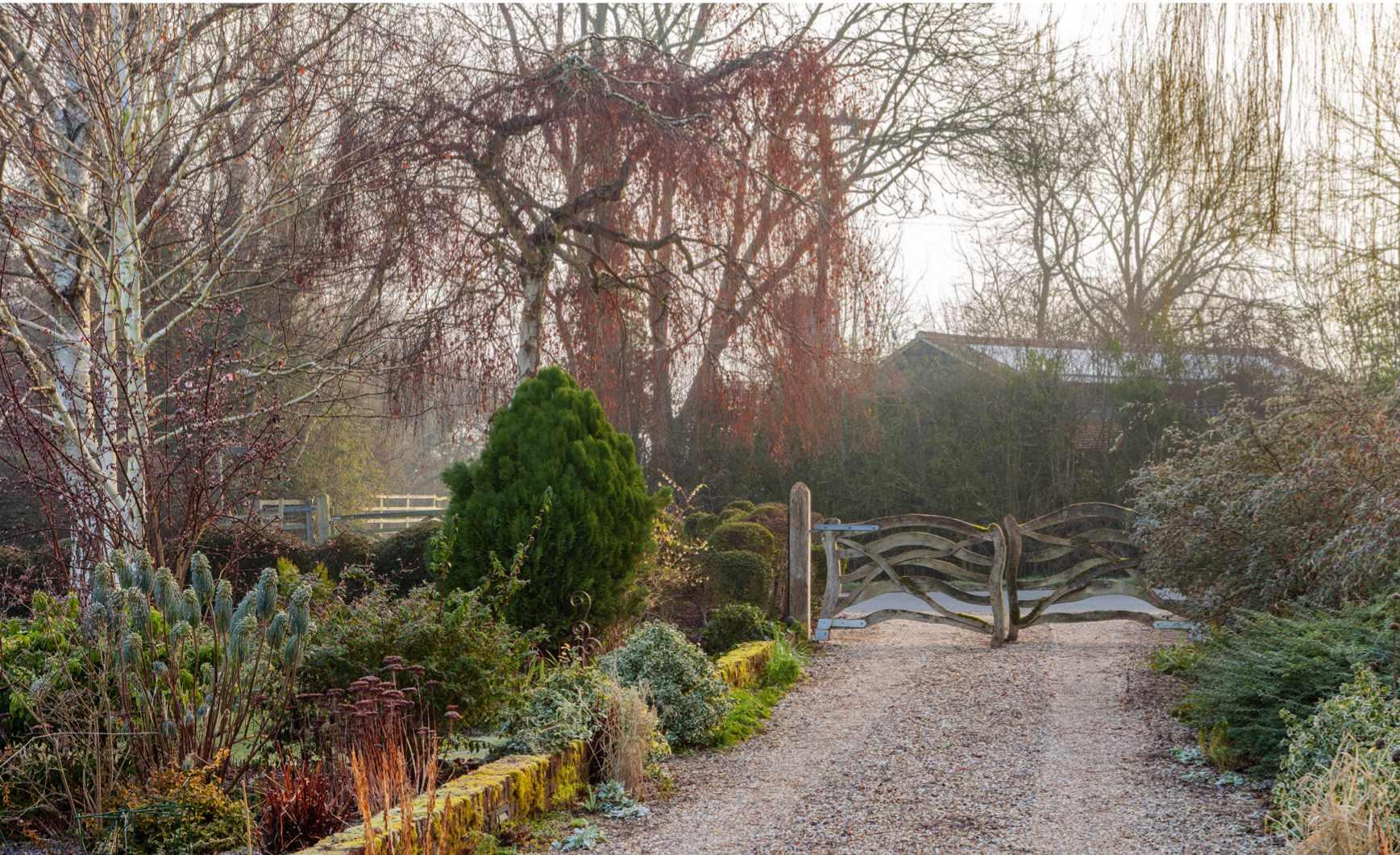
GARDEN COUNTRY
Moving through the garden on its array of paths, the texture underfoot is constantly changing, from neatly clipped grass embedded with oak sleepers to gravel. The bright-orange stems of Cornus sanguinea ‘Midwinter Fire’ add striking focal points in early spring.

The undulating double gates that lead into Longyard Cottage garden offer a first hint that harsh geometry will be in short supply here.
This initial clue is amply confirmed by the meanderings of a cloud-pruned boundary hedge that borders the entrance, and the twisted tracery of three huge weeping willows rising up from the lawn beyond.
This is a garden dedicated to journeys, in the form of a delightfully complex network of paths – after all, journeys rarely head in a straight line. When owners Jackie and John Copping moved to Longyard Cottage in the Essex village of Nazeing three decades ago, it was this structure that went in first.
There are numerous paths weaving through the three-quarters of an acre around the 16th-century cottage, and each is different – some are wide and clearly delineated, others windy and semi-obscure. Every path has its own texture too. Some are made from woodchip, others gravel, others grass; some are set with wooden sleepers. “The garden is a conceptual garden. That was really important to me,” says Jackie. “If you were on a train journey, or a holiday, you’d go past different environments. The paths are semi-hidden but they will lead you – visitors tend not to walk across the lawn, they tend to follow the path, although they may not know they are doing that.”
This tracery of paths has the effect of making the garden feel much larger than it is. There’s a division into three distinct areas:
lawned areas to either side of the front driveway, and another to the rear of the house. The Coppings bought the property with a view to their retirement, so they removed steps between these zones to make the space as accessible as possible.
The garden was largely a blank canvas when they arrived, aside from three large weeping willows (Salix alba ‘Tristis’) that were planted in the 1950s. “The first thing we did when we moved here was to create the paths and restructure it. So as we walk around the paths will lead you on to another area,” Jackie says. “There’s even a path to the compost heap.”
The only hard landscaping in the garden is found at the point where three areas converge, between the cottage and the summer house: a circular stone patio, home to an oak table and ladder-back chairs, which offers a space for people to gather and eat.
For the first few years of their time at Longyard Cottage, the Coppings worked on the overall architecture of the garden with the help of Alistair Bayford, then an early career designer; these days he is a Chelsea Gold medal-winning landscape architect. The couple did not specifically envision a winter garden, but it is during the colder months that the space is stripped back to its bare, beautiful essentials.
The Coppings are in their eighties, so their garden journey is now entering a new stage. They are focusing on what Jackie refers to as “shrubbing out” – reducing their workload by introducing
MARCH 2024 gardensillustrated.com 67

Above The garden was designed as a place for children to have fun, so playing with levels offers the promise of adventure, while a cloud-pruned hedge is a safe boundary from the road. A playful ridge in the lawn is crested with emerging crocuses.
Left The textured bark of mature birch trees (Betula pendula and Betula utilis subsp. jacquemontii) add winter interest in the front garden.
Below Cyclamen coum and Galanthus nivalis snowdrops fill a circular bed in the front garden, and a smattering of snowdrops planted into the neighbouring beds and naturalised into the lawn knit the scene together. The twisted skeleton of Corylus avellana ‘Contorta’ behind adds structure.
GARDEN COUNTRY
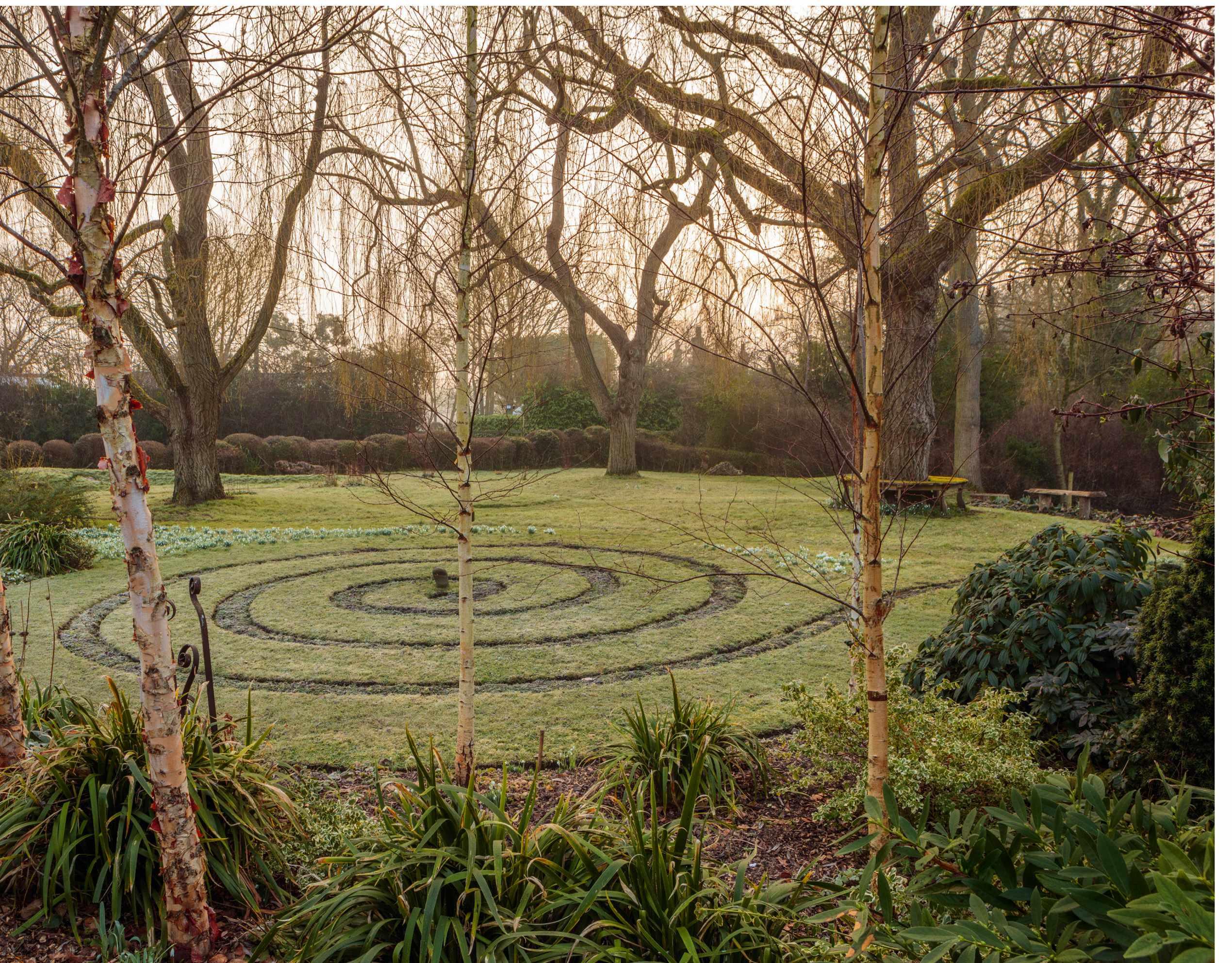
more low-maintenance planting selections. Colour blazes from the fiery stems of dogwood (Cornus sanguinea ‘Midwinter Fire’) and the retained winter foliage of three Persian ironwood trees (Parrotia persica) and beech hedges (Fagus sylvatica), while the peeling bark of silver birches (Betula utilis subsp. jacquemontii and Betula pendula) and a Tibetan cherry (Prunus serrula) add further interest for early spring.
The garden has a wild edge – plants are purposely permitted to encroach on the edges of paths, while the blues and purples of dwarf Iris reticulata blooms bristle amid the gravel. When a large mature walnut tree came down in high winds a few years ago, they left the resulting piles of wood around the garden as features and wildlife habitats.
The Coppings are not afraid to manipulate plants in interesting ways to add drama. Jackie’s career as a textile artist is clear from her clever use of natural materials as a form of sculpture in the garden, from globes made of seedheads harvested from the abundant opium poppies (Papaver somniferum) that flower in summer, to a living sculpture made from giant miscanthus (Miscanthus x giganteus).
A large swathe of this huge grass punctuates the pea gravel alongside the dining area. It grows to 3m tall or more through the summer, and then, at the end of every year, it gets a hedge trimmer haircut to craft the stems into architectural shapes that
change each time: sometimes a pyramid, or this year, waves. Wooden rounds placed in front of this stand of sculpted grass add another dimension to the scene.
These playful elements also reflect the owners’ other aim: making a place their seven grandchildren can play in and explore. The lawned areas gently undulate to create mounds and banks, and are mowed at different heights throughout the year to sculpt the scape in different ways. One bank is draped with a snake-like bed filled simply with the bronzed evergreen foliage of bugle (Ajuga reptans); another is peppered with crocuses naturalised in the grass.
Jackie’s favourite spot in the garden, though, is an intimate brickwork folly where you can pause for a moment. “The path leads you round to a full stop, like a turning point or junction. This is a waiting place, a place of reflection,” she explains. Corsican mint (Mentha requienii) carpets the floor, wafting scent when it is walked upon; hart’s tongue ferns (Asplenium scolopendrium) decorate nooks and crannies; and there’s a gnarled wooden ball sculpture adorning the stone bench. It’s the perfect waypoint for a journey through this richly rewarding garden. ■
USEFUL INFORMATION
Address Longyard Cottage, Betts Lane, Nazeing, Waltham Abbey, Essex EN9 2DA. Open For the National Gardens Scheme on 19 May 2024, 11am-4pm. Admission £5. ngs.org.uk
MARCH 2024 gardensillustrated.com 69 GARDEN COUNTRY
Swathes of Galanthus nivalis subtly direct visitors to enter the spiral path, and a stone at the centre acts as a turning point. Silver birch trees (Betula ‘Fascination’), underplanted with Iris foetidissima and Phlomis russeliana, mark the births of the owners’ grandchildren.
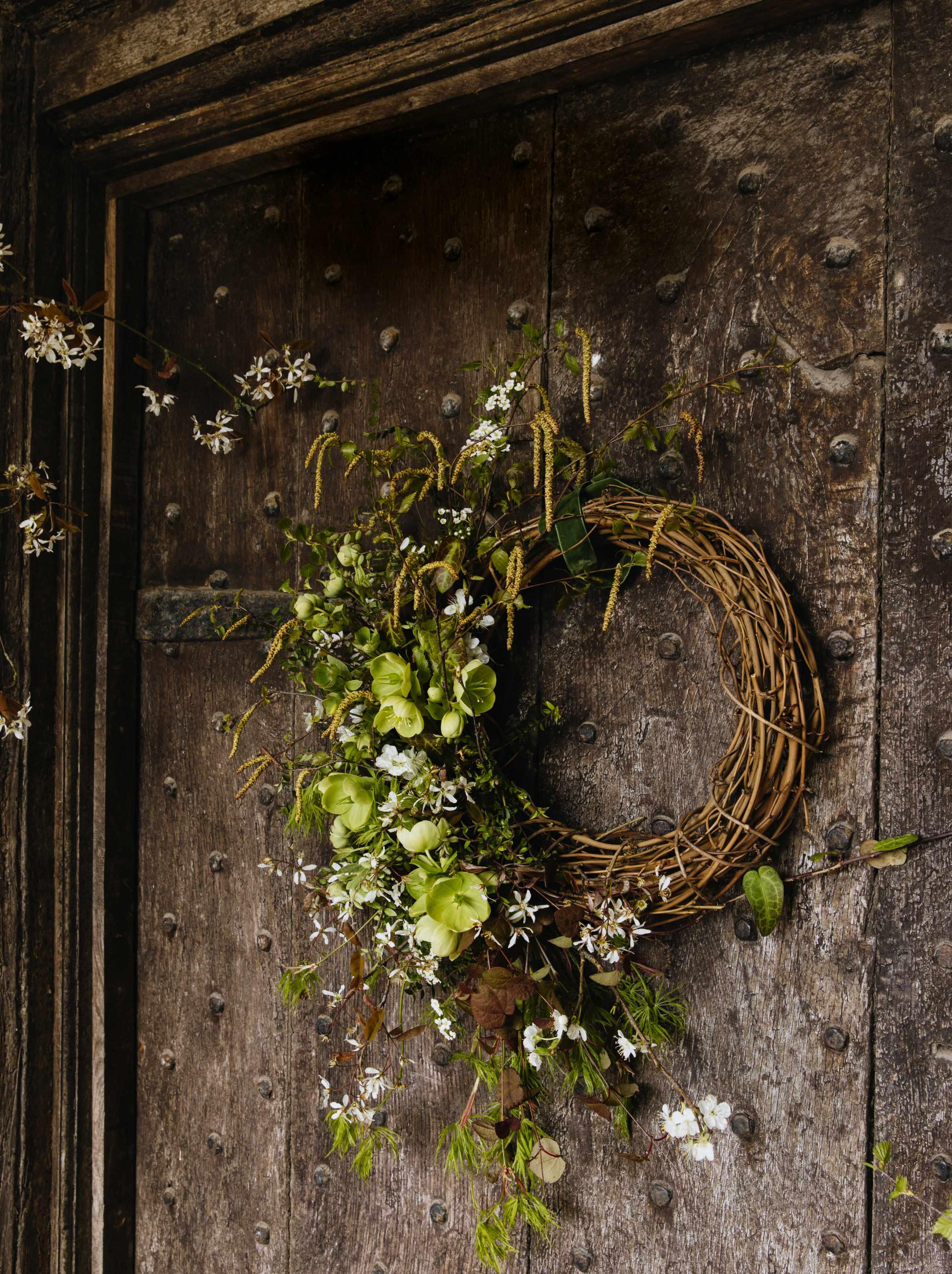
Seasonal flair
Try your hand at these three fresh designs with flowers and foliage to celebrate the arrival of spring
WORDS AND STYLING JACKY MILLS PHOTOGRAPHS ÉVA NÉMETH
MAKES SPRING
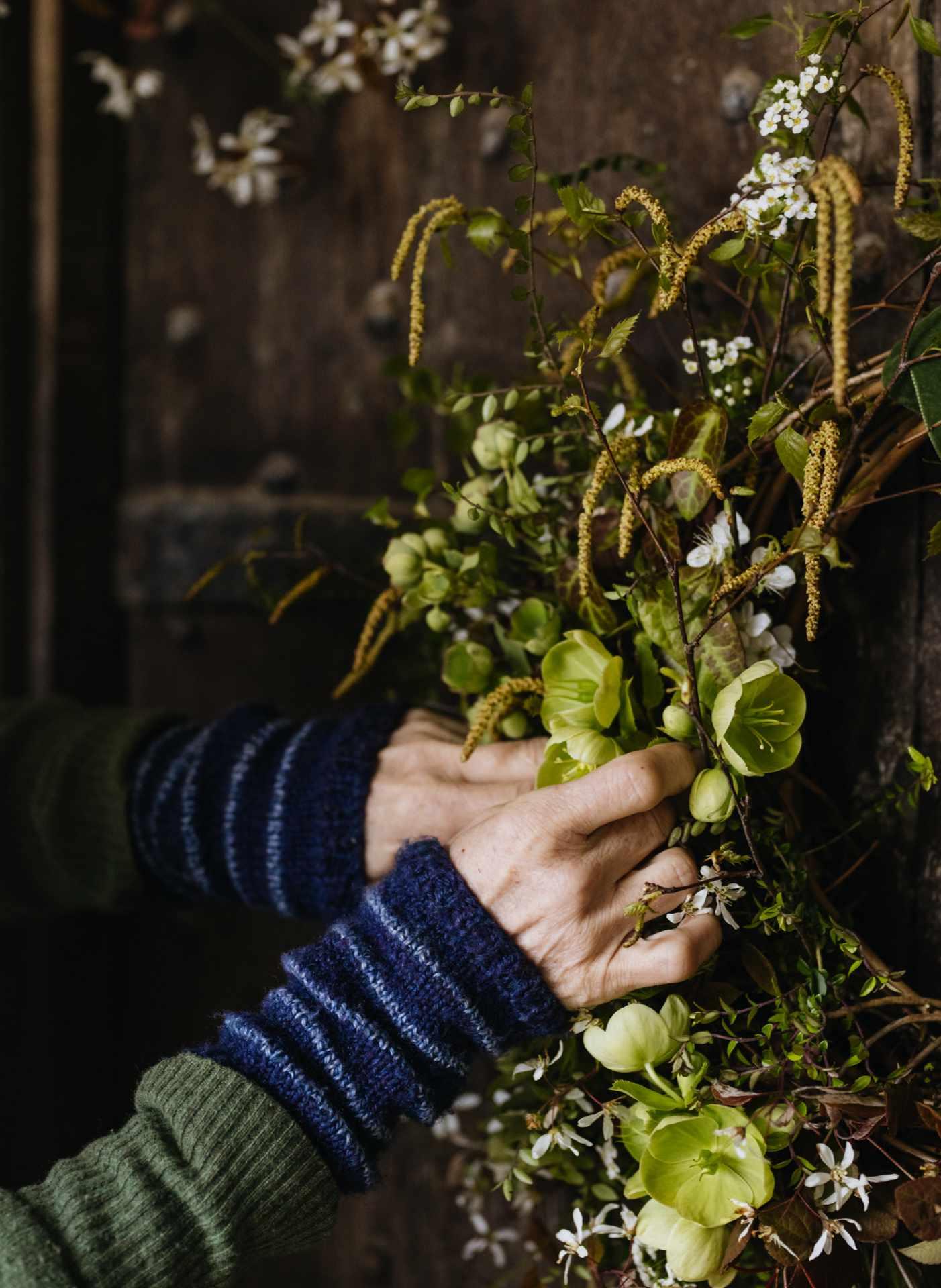
Easter wreath
Wreaths are not just for Christmas – they are a fantastic way to celebrate the changing seasons throughout the year. This one uses a palette of bronze foliage nestled amid swirling stems of ivy reddened by winter cold, fresh spring greens of unfurling maple leaves and vibrant hellebore flowers intermingled with white and plum highlights.
Many green-leaved deciduous trees exhibit coppery new growth in spring thanks to red-pigmented anthocyanins. When this tender growth sits against the sparkling white blossom of a cherry, spirea or amelanchier, it makes a beautiful, shimmering combination fit for any celebration.
At this time of year, new deciduous growth can be sappy and won’t last as long out of water as evergreen branches do. It needs to be really well conditioned and the finished piece may not last as long as
a winter wreath, but its ephemerality is part of its charm. It will dry out but still look stunning for months afterwards. If you want to prolong the life of any flower use flower tubes, securely wired and discreetly hidden among the foliage.
How to make
I wanted a loose, twiggy structure reminiscent of a bird’s nest for the base, so I used several long lengths of Virginia creeper (Parthenocissus quinquefolia) with its knobbly texture and wandering tendrils eased and twisted into a circle, held with a turn of wire. Alternatively, use winter prunings from grapevines or honeysuckle.
I have chosen to cover just half of the base, gradually building up layers to create a focal point around the fullest area. I start with the base foliage, heading upwards and
Plants to use
• Acer palmatum Use any green-leaved Japanese maple
• Amelanchier x lamarckii In March snowy mespilus offers both beautiful spring foliage and blossom.
• Betula pendula Use silver birch when tight in bud and strewn with catkins
• Cercidiphyllum japonicum Use the copper-toned green foliage of katsura
• Hedera helix Common ivy
• Helleborus argutifolius Holly-leaved hellebore. Flowers January to April.
• Helleborus x hybridus Try Harvington hybrid cultivars, such as ‘Harvington Single Lime’ or ‘Harvington Shades of the Night’. Flowers February to April
• Lonicera ligustrina var. yunnanensis Shrubby, evergreen honeysuckle.
• Parthenocissus quinquefolia Virginia creeper used for the base
• Prunus Any species, such as cherry or plum, with good blossom
• Spiraea ‘Arguta’ Bridal wreath with pretty white flowers from April to May
You can substitute any flowers and foliage that work well together. Alternative coppery spring foliage includes beech, hornbeam or oak. Rosemary works well for greenery, and you can use the white blossom of blackthorn (but be careful of its thorns)
You will need
• Wreath base
• Reel wire or twine
• Snips and secateurs
• Foliage and flowers
• Ribbon for hanging
• Flower tubes if required
• Lichen and moss to cover tubes
downwards from my chosen focal point using branches with a natural curve to direct the viewer’s eye – straight branches won’t hold the gaze as long as those with some movement. Poke the stems through the wreath base so they sit securely and tie in with spool wire or twine if needed.
I place the twiggy birch branches first, followed by curvaceous stems of ivy before adding the coppery tones of amelanchier, katsura and linear sprigs of evergreen honeysuckle. Arching sprays of bridal wreath and cherry follow before finishing with the faded, pollinated flowers of hellebores in delicious hues of green and plum. Keep standing back throughout the construction to make sure it’s doing what you want it to.
Once completed, add a ribbon to complement your chosen colours. Try silk or velvet or a lavish combination of the two.
MARCH 2024 gardensillustrated.com 71
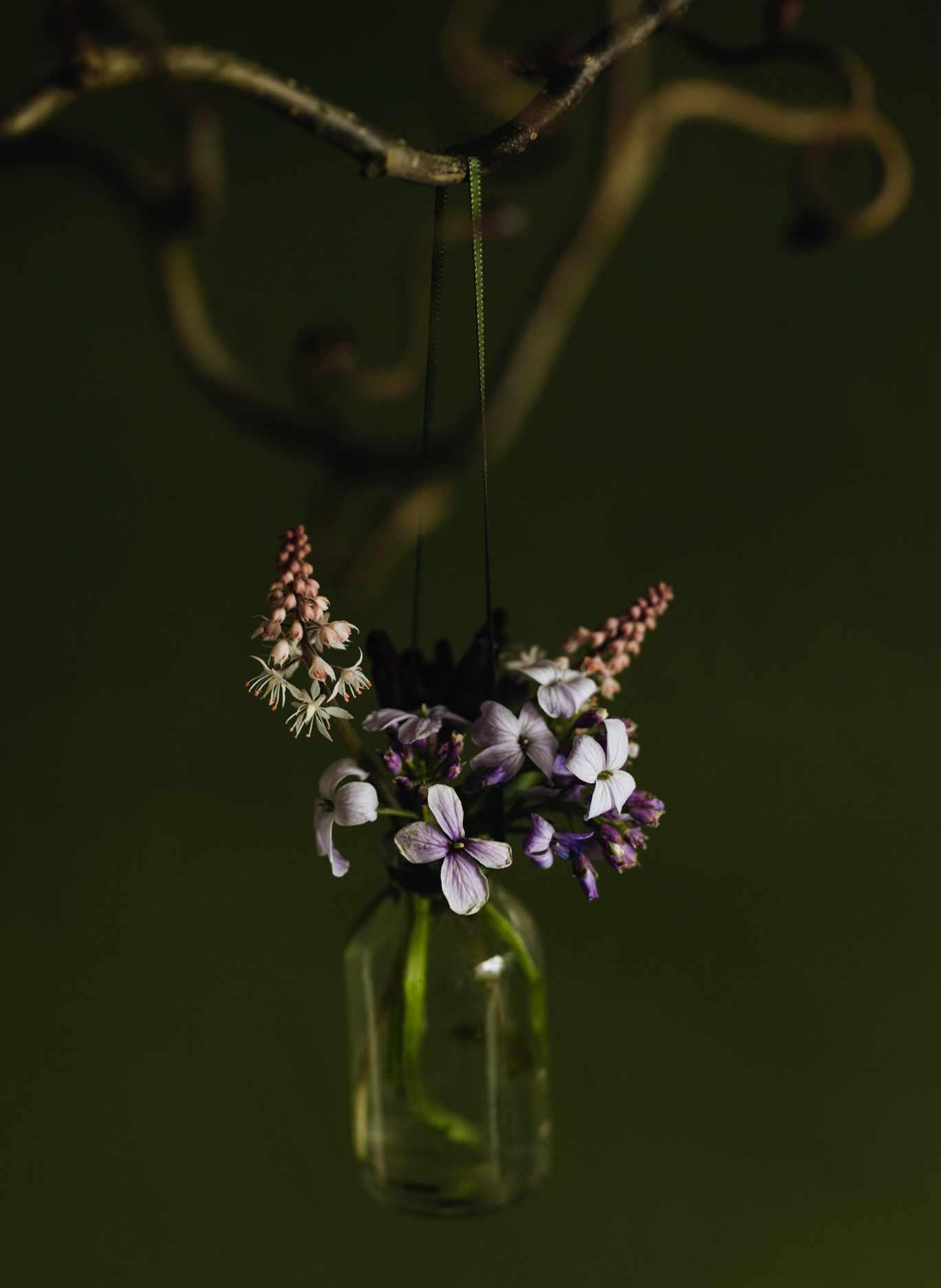
Branching out
My mother’s exquisitely embroidered canvas of spring flowers was the inspiration for this miniature hanging garden display. I chose a horizontal branch of red twisted corkscrew hazel, festooned with beautiful maroon catkins, to complement the verticality of hanging bottles filled with spring garden flowers, and a clutch of wooden eggs to create a perfect Easter arrangement.
There are countless ways to personalise this arrangement, from the choice of branch, which can be upright or suspended, to the selection and colour scheme of the flowers and ribbons, which can be matching or contrasting, and choice of decorative eggs.
How to make
Choose a sturdy, deciduous bough that will bear the weight of decorations and ideally explode into leaf and blossom when
brought indoors – contorted hazel, pear or cherry branches are ideal. I chose one large horizontal branch, supported in a decorative, waterproof metal bucket packed with large stones to stabilise it. Whether it is vertical or leaning to the left or right, it’s important to get the mechanics right to prevent the whole thing toppling over. Multiple smaller branches would also work well.
Use bottles with a recessed neck for the ribbon attachment (the craft bottles used to hold wedding gift favours are ideal). Make a loop at the ends of two pieces of ribbon and securely place these around the bottle’s neck on opposite sides and tighten. The ribbons need to be long enough to allow sufficient room above the top of the flowers to tie the two ends to the branch.
Fill the bottles three-quarters full of water and arrange the contents before hanging. The
Plants to use
• Anthriscus sylvestris Cow parsley or other soft foliage such as fennel
• Corylus avellana ‘Red Majestic’ corkscrew hazel, or other sturdy deciduous branch
• Small flowers of your choice I’ve used a combination of Tiarella ‘Pink Skyrocket’, wallflowers, saxifrage, cuckoo flower (Cardamine pratensis), honesty (Lunaria annua and L. rediviva), grape hyacinths (Muscari), forget-me-nots (Myosotis), squill (Scilla), lilac (Syringa) and periwinkle (Vinca), and balanced with a small hellebore in an ink bottle on the table
You will need
• A watertight metal bucket or vase
• Stones and/or sand
• Miniature bottles (roughly 20mm x 40mm) with a recessed neck
• Scissors
• Secateurs
• Ribbons
• Wooden eggs
• Auger or pointed screwdriver
• Metal eyelets
flowers need to be in scale with the bottles, so take time to experiment with different combinations. Look at all parts of a plant – a single leaf may not look much on its own but combined with a tiny floret from another plant may just sing. The mini arrangements can be changed as often as you like. Use one mix of flowers repeated or a celebration of all you can find in your garden.
Vary the heights of the hanging bottles to fill any voids. Finally, add the wooden eggs, screwing an eyelet into the top of each one using an auger to make the initial hole and threading with a length of ribbon. I liked the natural wood of these eggs, but they could be painted. You could also use ready blown quail’s eggs or make paper eggs from multiple egg-shaped discs of plain card slotted together. Never take eggs from the wild.
72 gardensillustrated.com MARCH 2024
MAKES SPRING


MAKES SPRING
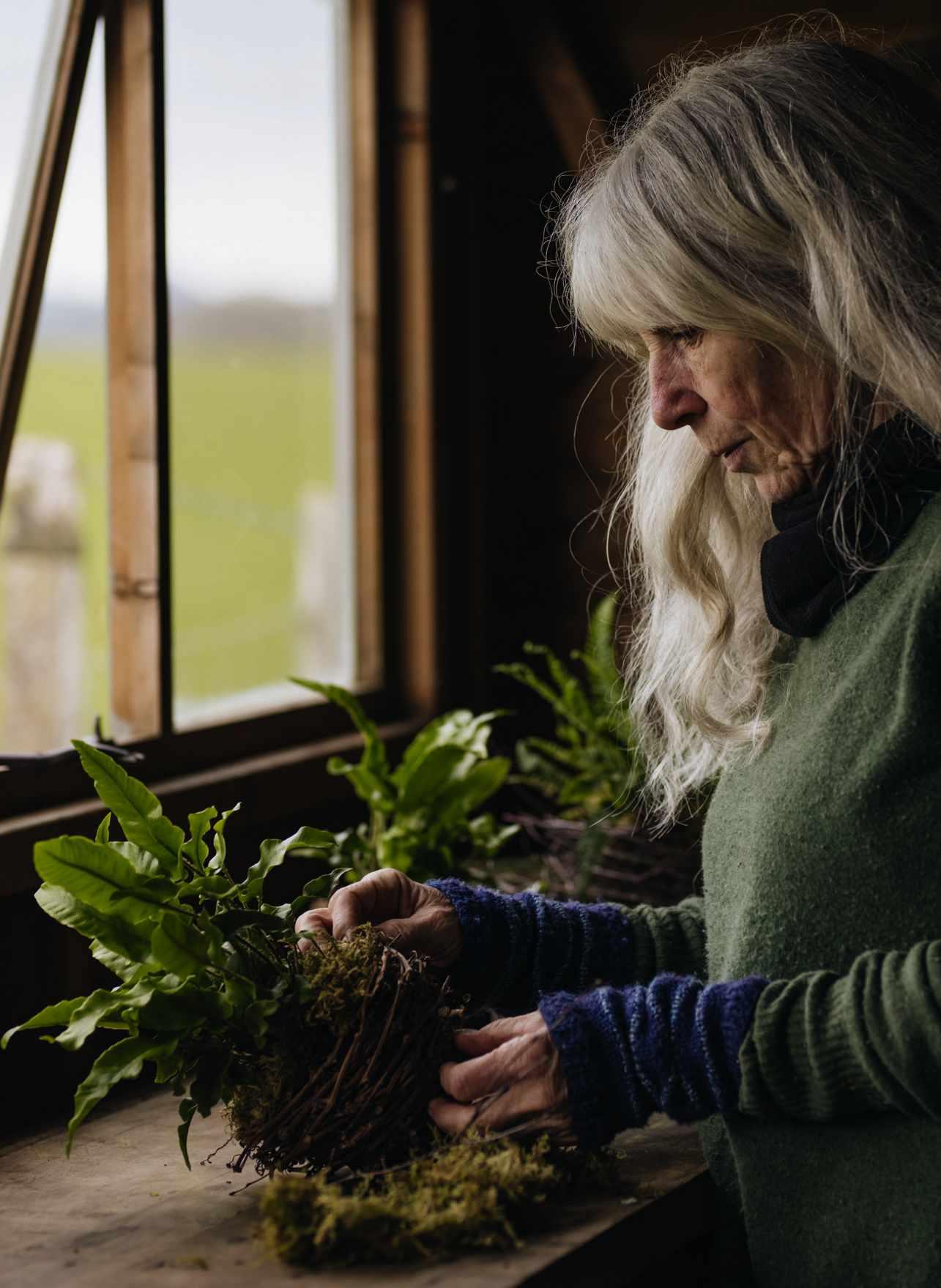
A green obsession
I adore ferns, moss and trees, so this was a dream build inspired by my indoor bird’s nest fern. I wanted to create a mews of nests from garden material to display my outdoor ferns and had great fun weaving these structures among the crevices of a gnarly, old tree stump. I added extra branches bearing a collection of mossy kokedama, arranged against the weathered, moss-covered wooden lids of our compost bins, creating a verdant spring display.
How to make
If you’ve ever really looked at the intricate architecture of a bird’s nest you will know they are sublime works of art. To make my simplified versions, I started with a wire frame, bending three pieces of wire into semicircles, twisted around each other at their midpoints to make a bowl shape with
six equal portions. I then wove 90cm lengths of pre-soaked brown willow strands in and out of the wire shell, working from the base up in concentric circles. I filled any gaps with extra willow and lined with moss before placing the fern inside with a mantle of compost. Alternatively, a coir pot wrapped in willow or flexible garden prunings held in place with a little wire would suffice.
To make the egg-shaped kokedama, I removed the plants from their pots, and moulded a little clay soil around their rootballs before wrapping in moss, secured with dark cotton. I soaked them well to hydrate them, patting them dry before hanging from the slimmer branches. I used a variety of green ferns and houseplants, but a selection of wildflower plugs, violas, primroses or even muehlenbeckia would look fantastic.
Plants to use
• Asplenium scolopendrium Hart’s tongue fern, producing an evergreen rosette of arching, undulating fronds
• Asplenium trichomanes Maidenhair fern
• Blechnum spicant Hard fern or deer fern
• Peperomia rotundifolia Trailing jade, houseplant
• Pilea depressa Trailing baby’s tears, houseplant
You will need
• Large, weathered log
• Branches
• Wire and wire cutters
• 90cm-1.2m lengths of brown willow Salix triandra ‘Black Maul’, for the nests or you could use prunings of birch, Virginia creeper or vine
• Moss
• Clay soil
• Scissors
• Cotton thread
• Ribbon
• Paper towel for drying
Recommended suppliers
• Musgrove Willows Willow Fields, Lakewall, Westonzoyland, Bridgwater, Somerset TA7 0LP. Tel 01278 691105, musgrovewillows.co.uk
• Twelve Nunns 16 Carisbrook Grove, Stamford, Lincolnshire PE9 2GF. Tel 012778 59045, twelvenunns.co.uk
Breeder and online supplier of Harvington hellebores.
• Welsh Organic Wildflowers, Llantilio Crossenny, Abergavenny NP7 8TH. welshorganicwildflowers.com
• Find wooden eggs, eyelets, floristry kit, ribbons etc on online craft stores.

SCAN HERE
To watch our video of Jacky creating her spring wreath, scan the QR code with your phone camera or head to gardens illustrated.com/springwreath
MARCH 2024 gardensillustrated.com 75
Magnolia cylindrica ‘Bjuv’
This is a Karl Flinck introduction, upright in growth, from his garden in Bjuv, Sweden. The relatively small flowers are highly marked with dark reddish purple at the base, narrowing to a stripe up the tepals. Height and spread: 10m x 3m.

Bowls of beauty
Magnolias are the show stoppers of early spring and there is nowhere better to see them than Borde Hill in West Sussex
WORDS PAULA McWATERS PHOTOGRAPHS CLIVE NICHOLS
Magnolia Black Tulip (= ‘Jurmag1’)
This makes an elegant feature tree, perfect for a medium-sized garden. Before the leaves appear it produces a generous show of dark burgundypurple, tulip-shaped flowers. 8m x 5m.
RHS H5, USDA 7a-9b†

Before spring visitors even step through the gates of Borde Hill in West Sussex, they are greeted by the soaring branches of magnolias; their blooms standing out like lanterns against a clear blue sky.
“You can literally be enveloped by magnolias here,” says Harry Baldwin, Borde Hill’s head of horticulture. “We surprise visitors with an incredible amount of diversity in terms of their flowers, leaves, scent and habit.”
Colonel Stephenson Robert Clarke bought Borde Hill House in 1893 with 610
acres of land, and began his collection of ‘new and uncommon trees’ ten years later. “The colonel – or ‘Stephie’ as he was known to family and friends – was well connected with other important garden owners, such as JC Williams of Caerhays, the de Rothschilds of Exbury, the Messels at nearby Nymans and Henry Elwes at Colesbourne Park, and he helped sponsor the great plant hunters of the day,” explains Harry. “These included George Forrest, Ernest Henry Wilson, Harold Comber, Reginald Farrer and Frank Kingdon-Ward. He also made expeditions himself in America, Africa and India.”
These connections gave the colonel access to seeds and plant material that was
new to cultivation in this country, and since there was no template to tell him and his contemporaries how or where to plant them, they had to experiment. “Luckily, we have many different environments and microclimates here,” says Harry. “The estate runs roughly east to west on three ridges, with several different soil types from clays and sands to rich loam, so these present lots of opportunities.”
Thirty-one of the magnolias in Borde Hill’s collection – including a 22m-high Magnolia campbellii by the Azalea Ring, which was planted in the 1920s – are officially designated as National or County Champions; that is to say, exceptional
MARCH 2024 gardensillustrated.com 77
PLANTS MAGNOLIAS

examples of their species, either because of their height, girth, age or rarity.
In a peaceful semi-wooded area of the grounds, known as the Garden of Allah, stand two rare, late-flowering trees planted in the early 1930s: the ‘fishtail’ M. fraseri from the south Appalachians in the US, with impressive cream flowers, and white-flowered M. officinalis from China, collected by Ernest Wilson and given to the colonel by Leonard Messel. Along with the large-leaved and highly fragrant M obovata from Japan, they form an impressive trio known as the Three Sisters, all champions by girth. Flowering earlier, in mid-March, is pinky-white
M campbellii subsp. mollicomata, and a more recent addition, the rich purple hybrid M. Black Tulip (= ‘Jurmag1’).
Harry explains that species trees, the ones that were wild-collected by plant hunters and grown from seed, could take up to 30 years to flower. “They were such an investment for the future – something for the next generation, effectively.”
In contrast, more recently introduced cultivars, including hybrids of M sprengeri, M acuminata and M liliiflora, will flower from an earlier age.
To continue the colonel’s legacy, his greatgrandson Andrewjohn Stephenson Clarke and his wife Eleni invited Jim Gardiner, vice
1 Magnolia x soulangeana ‘Brozzonii’ Known as the saucer magnolia, this long-flowering tree is large and spreading, with candle-like blooms opening to a cup-and-saucer shape – white, tinged purple at the base. It flowers late so often escapes frost damage. 5-15m x 6m.
AGM*. RHS H6, USDA 4a-9b.
2 Magnolia ‘Lemon Star’
A Magnolia acuminata hybrid, this is a cross that is tipped for increasing popularity on account of its pure-yellow flowers. These emerge as greenish-yellow and eventually fade to cream. Good autumn colour. 5-15m x 5m.
RHS H6, USDA 3a-8b.
3 Magnolia obovata Japanese tree with huge obovate leaves and large, highly scented, creamy-white flowers that have crimson stamens. In late summer it produces the most striking bright-red seedpods. 15m x 8m.
RHS H6, USDA 5a-7b.
4 Magnolia ‘Butterflies’ This charming hybrid is named because its rich-yellow flowers, which are freely produced, resemble butterflies sitting in the branches. It grows into an upright tree and flowers at an early age. 5-9m x 4m. RHS H6, USDA 5a-7b.
president of the Royal Horticultural Society and a long-term director of Borde Hill Garden Charity, to design and plant the Gardiner Grove in 2018.
Jim has selected 50 American and Asiatic hybrids and planted them in a series of tight circles. “The idea is that with careful pruning over a ten-year period, the crown size will be restricted, the trees will branch and flowering will be promoted,” explains Jim. “In this way, visitors will be able to compare the flowers much nearer to eye height, and observe their similarities and differences without the need for binoculars.”
At the entrance to the grove is a tree that bears his name: M. ‘Jim Gardiner’. During
78 gardensillustrated.com MARCH 2024
1 2
3 4
More than 48 per cent of magnolia species are threatened with extinction in the wild, so we recognise that our 120-year-old cultivated specimens hold vital genetic material for scientific study
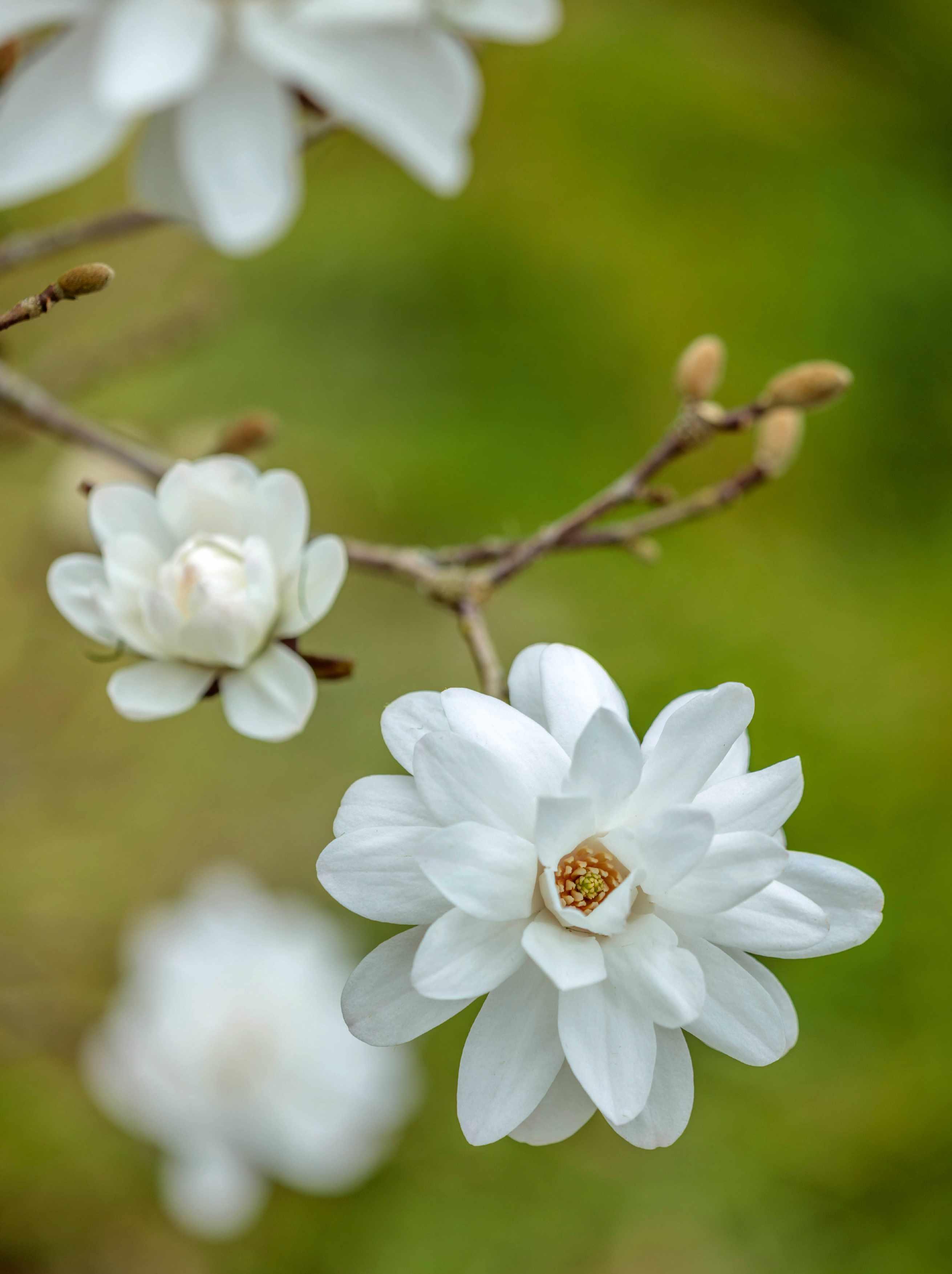
PLANTS MAGNOLIAS
Magnolia x loebneri
‘Mag’s Pirouette’
A seedling of M. x loebneri
‘Ballerina’, this compact, eye-catching shrub is perfect for a small garden. It has gardenialike, double-white flowers with a delicate citrus scent. The flowers are rounded in shape with the outer tepals shorter than the inner ones. 1.5-3m x 3m.
AGM. RHS H5, USDA 5a-9b.
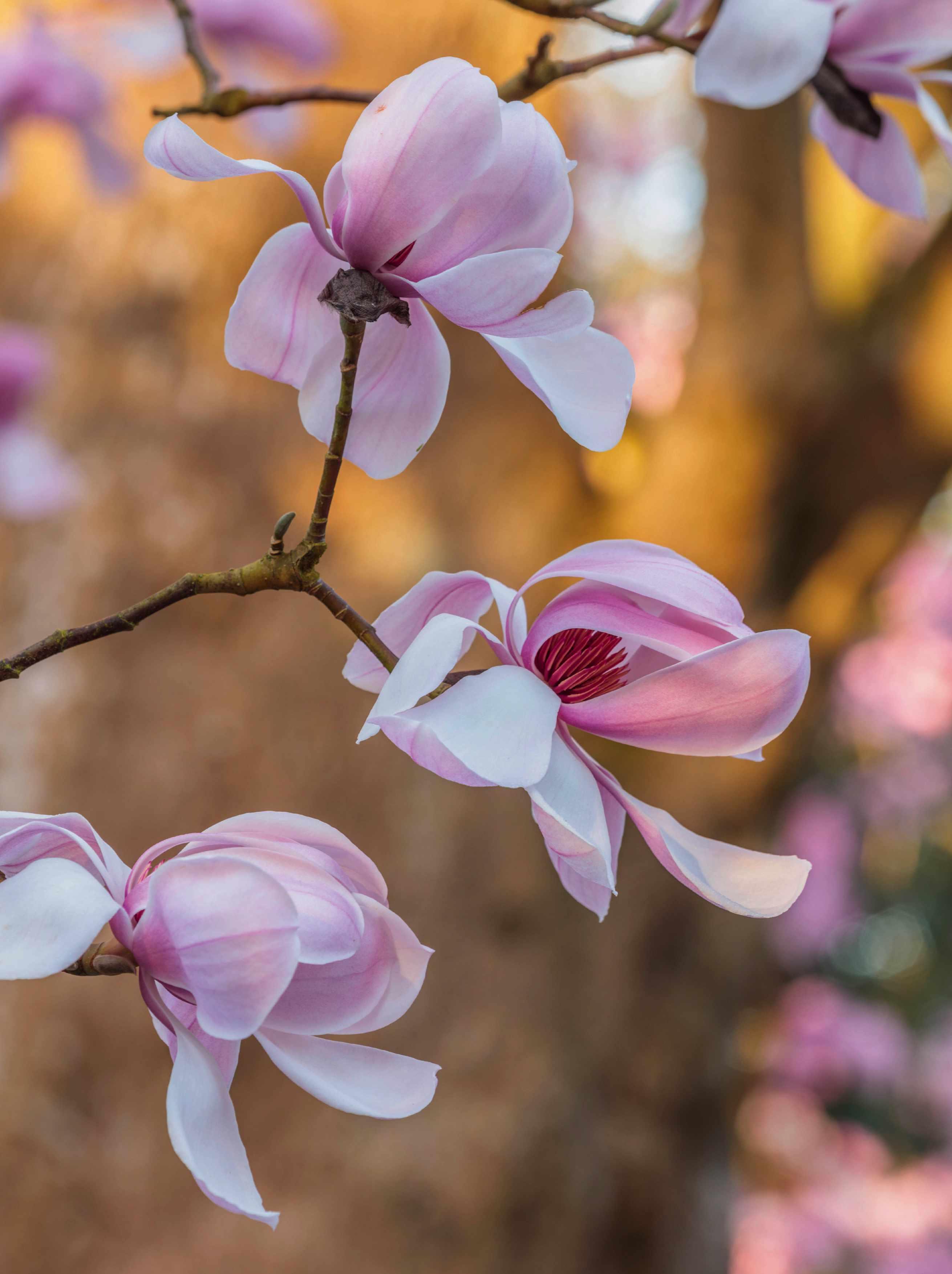
This magnificent wild variety of the Chinese tree species is known for its rich-pink flowers that appear in very early spring ahead of its leaves. They open to a paler pink in a waterlily shape.
Magnolia sprengeri var. diva
15m x 8m.
RHS H4, USDA 8a-10b.
5 Magnolia Shirazz (= ‘Vulden’) Bred in New Zealand, this is a splendid tree for a smaller garden. As the name suggests, the goblet-shaped flowers are a rich, red-wine pink, and these gradually open out and flatten to reveal a paler pink interior. 5-9m x 2.5m.
6 Magnolia ‘Big Dude’ This upright spreading US-bred tree is an M. x soulangeana x M sprengeri cross. It bears huge, nodding cup-shaped flowers – up to 35cm across – that are rosepink on the outside and white within, followed by distinctive seedpods. 5-18m x 5m.
7 Magnolia sargentiana var. robusta Collected in western China by plant hunter Ernest Wilson, this is an impressively large and spreading tree. Its showy rose-pink flowers appear in early spring and are followed by pendulous pink seedpods in autumn. 10m x 8m. RHS H5.
8 Magnolia ‘Galaxy’ A wellregarded Asian hybrid with a relatively narrow, conical outline, this is a good choice for a small- to medium-sized garden. Its deep purple-pink buds open to upright flowers that are pale rose-pink inside. 10-18m x 6m.
AGM. RHS H6, USDA 5a-9b.
*Holds an Award of Garden Merit from the Royal Horticultural Society. †Hardiness ratings given where available.
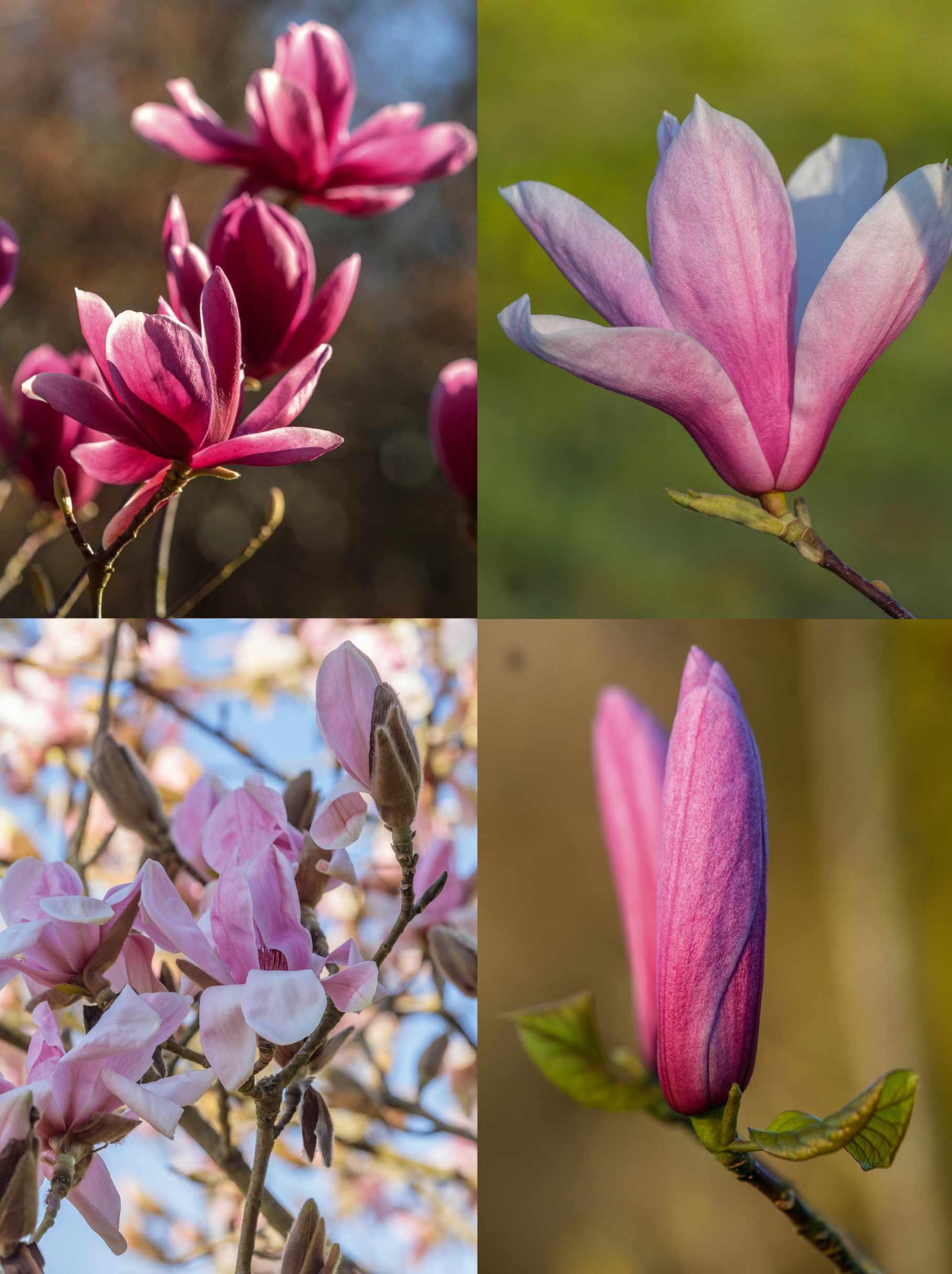
a visit to the garden in 2014, Jim came across a double-flowering magnolia that he hadn’t seen before, which was almost certainly a seedling of M campbellii subsp. mollicomata. After a lengthy but fruitless search for this cultivar, the Stephenson Clarkes proposed that it be named as a thank you for his long association with the garden.
‘Borde Hill’ is another Magnolia campbellii subsp. mollicomata cultivar; one of three mollicomata seedlings raised at Werrington Park in Cornwall from seed collected by George Forrest’s sixth expedition to China in the 1920s. Although it was subsequently lost, in the early 1950s, Trewithen garden in Cornwall also had it,
so Borde Hill gardeners were able to get a new plant back.
Well aware of the importance of keeping the historic trees going, Harry is making an inventory of all trees and shrubs across the estate to document what they have, note their health and decide what needs propagating. “More than 48 per cent of magnolia species are threatened with extinction in the wild, so we recognise that our 120-year-old cultivated specimens hold vital genetic material for scientific study,” he says. Fortunately, the historic importance of this garden has been recognised by subsequent generations of the Stephenson Clarkes. The colonel’s great-great-grandchildren Jay and
Harry took over its management in 2023 with sustainability at the heart of their programme. Happily, there are plans to plant many more trees in the future. ■
USEFUL INFORMATION
Address Borde Hill Garden, Borde Hill Lane, Haywards Heath, West Sussex RH16 1XP. Tel 01444 450326. Web bordehill.co.uk
Open Daily, 10 February – 22 December 2024, 10am-5pm.
Booking is now open for the Borde Hill Garden Festival, 22-23 June, 10am-5pm, and Gardens Illustrated Members can receive a 20 per cent discount on tickets. See website for details.
MARCH 2024 gardensillustrated.com 81 PLANTS MAGNOLIAS
5 6 7 8

GARDEN CITY

Green power
Three new rooftop gardens designed by
Andy Sturgeon
have transformed one of London’s most iconic buildings
WORDS JODIE JONES PHOTOGRAPHS RACHEL WARNE
Everything about Battersea Power Station is on an astonishing scale. This iconic London building, begun in 1929, is still the largest brick-built structure in Europe. You could fit St Paul’s Cathedral inside the central boiler house structure. Its exterior is clad in six million bricks to a decorative design by celebrated architect Sir Giles Gilbert Scott (the man behind the red London telephone box), and the original Art Deco interiors were sumptuously decorated with Italian marble-lined walls, parquet floors, and doors sculpted from bronze.
Yet despite the lavish details, it was very much a working power station. At its peak it produced one fifth of all London’s electricity, and continued to generate power until 1983.
Thereafter, a series of developers attempted to reinvent the Grade II*-listed building, but their plans all failed to get off the ground. That is, until 2012, when the entire 42-acre brownfield site was bought by a consortium of Malaysian investors, and work began on an ambitious eightphase masterplan to create a new residential, business and leisure district, and award-winning garden designer Andy Sturgeon was invited to get involved. He first visited the site ten years ago. “The whole roof had been removed from the central structure decades before, and it was really just a monumental pile of bricks when I started work,” he recalls.“We were brought in by landscape architects LDA, who own the overall site masterplan, to devise a series of gardens on the roofs of the central building. We have had a lot of experience creating roof gardens over the years, but this was our biggest challenge by a long way.”
As well as all the usual complexities of load bearing, drainage and extreme elements that any
MARCH 2024 gardensillustrated.com 83
Left Andy Sturgeon’s ambitious design for Battersea Power Station recently won The Grand Award at the Society of Garden Designers Awards 2024, having previously won the BALI National Landscape Awards Grand Award in 2023. Seen from above, you get some idea of the extraordinary scale of this project. Even so, when looking down on to the Fire Garden, it is still hard to comprehend that the expansive Air Garden sits high above you, hidden from sight by the towering glass-fronted Sky apartments and framed by the building’s four iconic chimneys.
GARDEN CITY
podium landscape design presents, Andy had to work with two historic roofs (one nearly 100 years old), which were constantly being modified to accommodate various complicated infrastructure requirements within the buildings beneath them. “We made a scale model out of balsa wood, which ended up being a couple of metres long, and literally every week we had to chop a bit out here or stick a bit on there as the mechanical and structural engineers made their changes.”
Andy’s brief, however, remained the same.
“Our job was to make three separate gardens, for the residents of three separate residential zones, on three separate roofs. Each one needed to work in its own right, with spaces where people could enjoy sitting alone or gathering in groups, and they had to look good all through the year.”
Taking his cue from the functions of a power station, Andy developed the themes of Air, Fire and Water for the three gardens. Cloud-pruned beech and parrotia articulate the highest of these gardens, on the central Boiler House roof, where 18 ultraprime duplexes each have their own private terrace leading out into a ribbon of communal space running around an enormous central skylight.
“That glass acts rather like a body of water, reflecting the passing clouds and changing quality of the light to introduce a really dynamic element into the heart of this Air Garden,” says Andy. For privacy and permanent structure, the planting here was heavily weighted towards evergreens, but these were threaded through with grasses, and lovely things such as Selinum wallichianum and Oenothera lindheimeri ‘Whirling Butterflies’ that sway in a suitably airy fashion.
The other two gardens are on top of the two switch house buildings flanking the Boiler House and, being set on a lower level, are dominated by its soaring brick walls and the chimneys. “There is no getting away from a building on this scale, and I felt there was no point making a garden here if it didn’t constantly remind you about where you were,” says Andy, while acknowledging that the chimneys and walls are such imposing features they could have felt oppressive. “We needed trees to introduce a human scale, and conjure a sense of place through the rhythm of alternating tree canopy and open space, shade and sun.”
The Switch House East garden presented Andy the most space to play with, but also a number of vents up to 3m high that pushed out masses of heat and had to be screened with a combination of laurel hedges and ornamental grilles. He planted a glade of birches at one end of the garden, and a mixture of heptacodium, osmanthus, Pinus nigra and the

The glass acts rather like a body of water, reflecting the passing clouds and changing light to introduce a dynamic element into the heart of this Air Garden
84 gardensillustrated.com MARCH 2024
JOHN STURROCK
Right The highest of all the gardens that Andy has created here is the Air Garden, which is enclosed by the ultraprime Sky duplex apartments and frames two enormous glass roofs that allow light into the building below. To give these residents their privacy, Andy built his planting plan around structural plants, using masses of Veronica rakaiensis Phillyrea angustifolia Osmanthus x burkwoodii and Fagus sylvatica, and a small forest of clipped and feathered Carpinus betulus ‘Frans Fontaine’ and cloudpruned Parrotia persica
Boiler House Square: Air

Switch House East: Fire

We needed trees to introduce a human scale, and conjure a sense of place through the rhythm of alternating tree canopy and open space, shade and sun
gorgeous Arbutus unedo at the other, linked by winding paths and secluded seating areas.
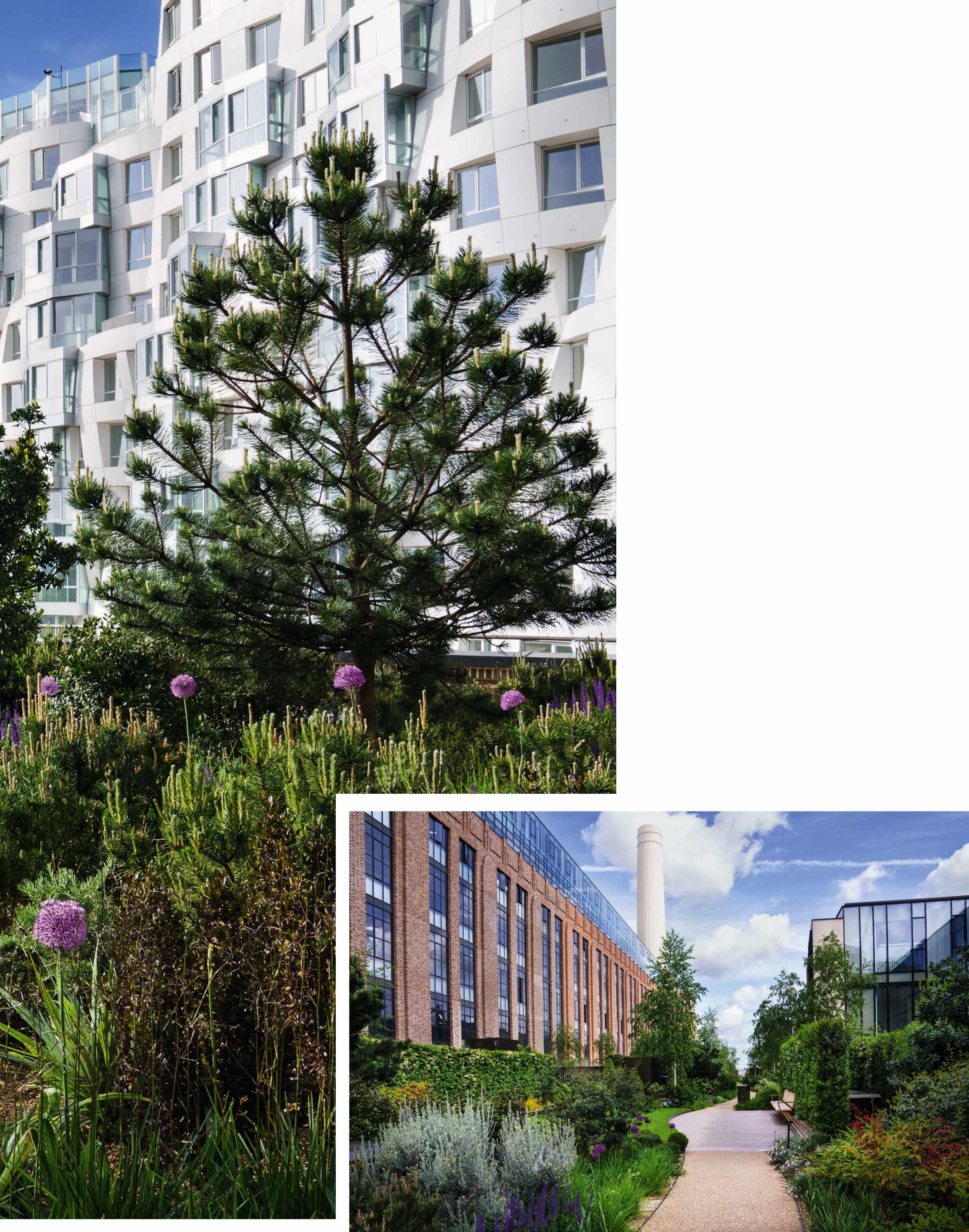
It is, says Andy, London’s largest rooftop forest, and he has underplanted it with another creative combination of shrubs, perennials and bulbs, and enough rich, seasonal colour from early mahonias, grevillea and nandinas, through to salvias, Sesleria autumnalis and the late berries and bronze foliage of aronias to justify its Fire Garden name.
Switch House West follows the theme of Water, and proved a particularly slippery challenge, with a long, narrow footprint and an undulating surface that pushed the team to the limits of their ingenuity. “There were inspection chambers, heat vents and all sorts getting in the way. It ended up being a dance with the structural engineers. We did manage to include seven lovely multi-stemmed Crataegus persimilis ‘Prunifolia’, but only by using every trick we knew. Some of the bigger planters are half filled with lightweight packing, and in places the beds are only 20cm deep, but hopefully you aren’t aware of any of that as you walk around.”
Andy’s team certainly deployed their smoke and mirrors cleverly. The whole artifice feels entirely believable and the planting is genuinely interesting. Evergreen elements include mounds of Baccharis patagonica and lovely huddles of Pinus mugo ‘Mops’, with select rosemaries, cistus and the unbeatable Miscanthus sinensis ‘Silberfeder’.
Around this run various colour-themed plant mixes, including the dark-pink Geranium
Left The Fire Garden is the largest of all the roof gardens, and the style and character of the planting subtly modulates as you walk along its winding paths. At one end, pines, including Pinus nigra and the low-growing Pinus mugo, help to filter the powerful winds that blow at this altitude, while Allium hollandicum ‘Purple Sensation’ and Salvia nemorosa ‘Caradonna’ add some rich colour. Below Andy worked hard to balance the towering building with a garden on a more human scale. Benches sheltered by tall Prunus lusitanica hedges bring residents close to the textured planting, including Santolina chamaecyparissus
GARDEN CITY
MARCH 2024 gardensillustrated.com 87
‘Ballerina’, with Gypsophila repens, Helictotrichon sempervirens, Hesperaloe parviflora, Hylotelephium ‘Matrona’, Melica ciliata, Origanum laevigatum ‘Herrenhausen’, Pulsatilla vulgaris ‘Alba’ and Stachys byzantina. It is truly impressive.
As if the technical challenges weren’t already complex enough, construction of the gardens had to begin while major building work was still going on, and the project was in full flow when the Covid pandemic hit. On the day the UK went into lockdown, there were 4,000 construction workers on site.
“A massive one-way system was put in place, and everyone ended doing about 20,000 steps just to get to where they were supposed to be working,” says Andy. “We are very fortunate to have had Willerby, a fantastic landscape contractor, working with us throughout. Constructing these gardens was arguably more difficult than designing them, and maintaining them is also a huge ongoing challenge in this ultra-premium development, where you can’t have a leaf out of place.
“A project on this scale needs so many people investing their time, money and talent if it is going to work, but here it all came together. I think that we have created something we can all be really proud of.” ■
USEFUL INFORMATION
Find out more about Andy Sturgeon’s work at andysturgeon.com

We did manage to include seven lovely multi-stemmed Crataegus persimilis ‘Prunifolia’, but only by using every trick we knew
GARDEN CITY 88 gardensillustrated.com MARCH 2024
Right A rich mix of perennials, including Phlomis fruticosa, Euphorbia mellifera Armeria maritima and Stachys byzantina help hide heat vents in the Water Garden. Although the smallest of the main gardens, it gave Andy his biggest structural headache. He was only able to include hawthorn trees by using technical trickery, including hiding void spaces in some of the surrounding raised beds, to offset their weight. Below As well as the main gardens, Andy created several tiny courtyard gardens in lightwells. Here, a green tapestry of tree ferns and understorey foliage plants create an urban jungle vibe around pieces of the original power station machinery.
Switch House West: Water


Growing for gold
Drawing on a long heritage of daffodil breeding in Northern Ireland, Esker Farm Daffodils now finds its bulbs are in demand from Narcissus obsessives from around the world
WORDS FIONNUALA FALLON PHOTOGRAPHS CLIVE NICHOLS
From small beginnings Esker Farm Daffodils has become one of the most respected daffodil growers in Europe. Now incorporating Ringhaddy Daffodils, the nursery grows more than 200,000 daffodils on its two-acre farm.
Like buried treasure, the 200,000 or so daffodils growing in the two acres of bulb fields and glasshouses surrounding the home and nursery of Dave and Jules Hardy in rural Omagh, Co. Tyrone, represent a distinguished horticultural bloodline that encompasses the work of many of Northern Ireland’s greatest breeders and exhibitors.
Established in 2016, the couple’s small specialist bulb business, Esker Farm Daffodils, incorporates the ‘stable’ of Nial and Hilary Watson of Ringhaddy Daffodils, Newtownards, Co. Down, whose stock they acquired in 2017. That acquisition included the Watsons’ own award-winning daffodil breeding work as well as the work of hugely respected Omagh-based hybridiser Brian Duncan and his wife Betty, and Sir Frank Harrison of Ballydorn Bulb Farm in Killinchy, Co. Down. Peel it back another layer and

the same bloodline includes contributions from the Duncans’ long-time mentor, the late Tom Bloomer, founder of Rathowen Daffodils in Ballymena, Co. Antrim, as well as celebrated breeder Guy Wilson of Broughshane, Co. Antrim, best known for his work with ‘white’ daffodils. For the Hardys, it’s a remarkable horticultural legacy they’re determined to preserve and add to.
The couple’s own fascination with the Narcissus genus began in 2009, when they moved into their new home, built on land that was once part of Jules’ parent’s family farm. Their jobs as primary school teachers gave them both free time to garden during the summer. Soon Dave had joined Fermanagh Garden Society. In 2011 he attended a lecture on daffodils by the Latvian breeder Jānis Rukšāns, an event that left him completely smitten with this vast and complex genus of mainly spring-flowering bulbs.
Shortly afterwards, he contacted Nial Watson to purchase one of Ringhaddy’s ‘starter bags’. But the discovery that Brian
MARCH 2024 gardensillustrated.com 91 NURSERY DAFFODILS

17 daffodils from Esker Farm
1 Narcissus ‘Anna Panna’ Bred by Ringhaddy Daffodils’ Nial Watson, this 2007 cross between Ballydorn-bred N.‘Moon Tide’ and N.‘Archduart’ (from breeder John Lea) is a small-cupped daffodil with yellow petals and an orange cup.
2 Narcissus ‘Picket Post’ A pretty, sweetly scented and small-cupped, mid season, hybrid cultivar with snow-white petals and a delicately frilled, brilliantorange cup from British breeder John Blanchard.
3 Narcissus ‘Editor’ An outstanding, large-cupped show-bench cultivar, this 2007 Brian Duncan hybrid has snow-white petals and a yellow trumpet fringed with pink.
4 Narcissus ‘Pooka’ Its golden-yellow petals and red-rimmed cup are clear clues to the bloodline of this handsome, small-cupped, late-season hybrid registered by Brian Duncan in 2000.
5 Narcissus ‘Chortle’ The work of renowned Australian hybridiser David Jackson, this tall, small-cupped 1993 hybrid stands out for its pale green-yellow flowers that slowly fade to yellow-white. Mid to late-season flowerer.
6 Narcissus ‘Montroig’ A multi-award-winning, large-cupped hybrid from Brian Duncan with smooth, pure-white petals and a pink-rimmed yellow cup, this 2009 hybrid is a cross between N.‘Soprano’ and N.‘June Lake’.
7 Narcissus ‘Hot Date’ A small-cupped dwarf 2013 hybrid from Nial Watson with snow-white petals forming a double triangle and a brilliant orange, decoratively ribbed and frilled cup. Mid-season flowerer.
8 Narcissus ‘Kathy A’ Named after Kathy Andersen, past president of the American Daffodil Society, this graceful dwarf hybrid is a winning cross between the angel’s tears narcissus, N triandrus, which is found wild in Spain and Portugal, and the Tom Bloomer-bred cultivar, N.‘Golden Jewel’.
Key daffodils continue on page 94
6 7 8
1 2 4 5
3
and Betty Duncan lived just a short drive away was the biggest game-changer. “From teaching the art of hybridising to providing bulbs, pollen and seedlings for our breeding work, Brian has been hugely supportive and encouraging from the beginning,” says Dave. By 2012, the couple had already begun their own hybridising programme, a process that takes a minimum of five to six years to bear fruit. Encouraged by the Duncans, in early 2016 the couple published their very first catalogue, a modest affair listing just 12 cultivars.
“Our initial ten-year plan,” explains Jules, “was to slowly build it into a viable business. But all that suddenly changed in 2016 with the Watsons’ proposal that we consider taking over Ringhaddy Daffodils.”
Eight years, several rookie mistakes, countless hybridising experiments and a degree in horticulture (Dave recently graduated from Greenmount College in Co. Antrim) later, the Hardys have honed their skills to be counted among Europe’s

most respected producers, with their bulbs sent to gardeners, exhibitors and narcissus obsessives all over the world.
Esker Farm Daffodils’ nursery is now set up for maximum efficiency and productivity in terms of land use, preservation of distinct varieties, and management of the threat of pests and diseases. Bulbs are hot-water treated for three hours at a very precise temperature of 44.4 C before being densely planted in autumn into freshly ploughed and rotovated soil, in 1m-wide, gently raised ridges designed for ease of maintenance and accessibility, as well as to ensure that the nursery’s clay soil drains freely in this area of high annual rainfall. They remain there for almost two years, before being harvested by hand in early summer and prepared for sale.
The process of hybridising, where the pollen-bearing anthers from the flowers of a parent variety are deliberately transferred by hand on to the stigmas of the flowers of a seedbearing parent variety, takes place from December to April in
Jules and Dave Hardy with their dog Ollie selecting daffodils from the densely planted fields around their nursery in rural Omagh.
MARCH 2024 gardensillustrated.com 93 NURSERY DAFFODILS
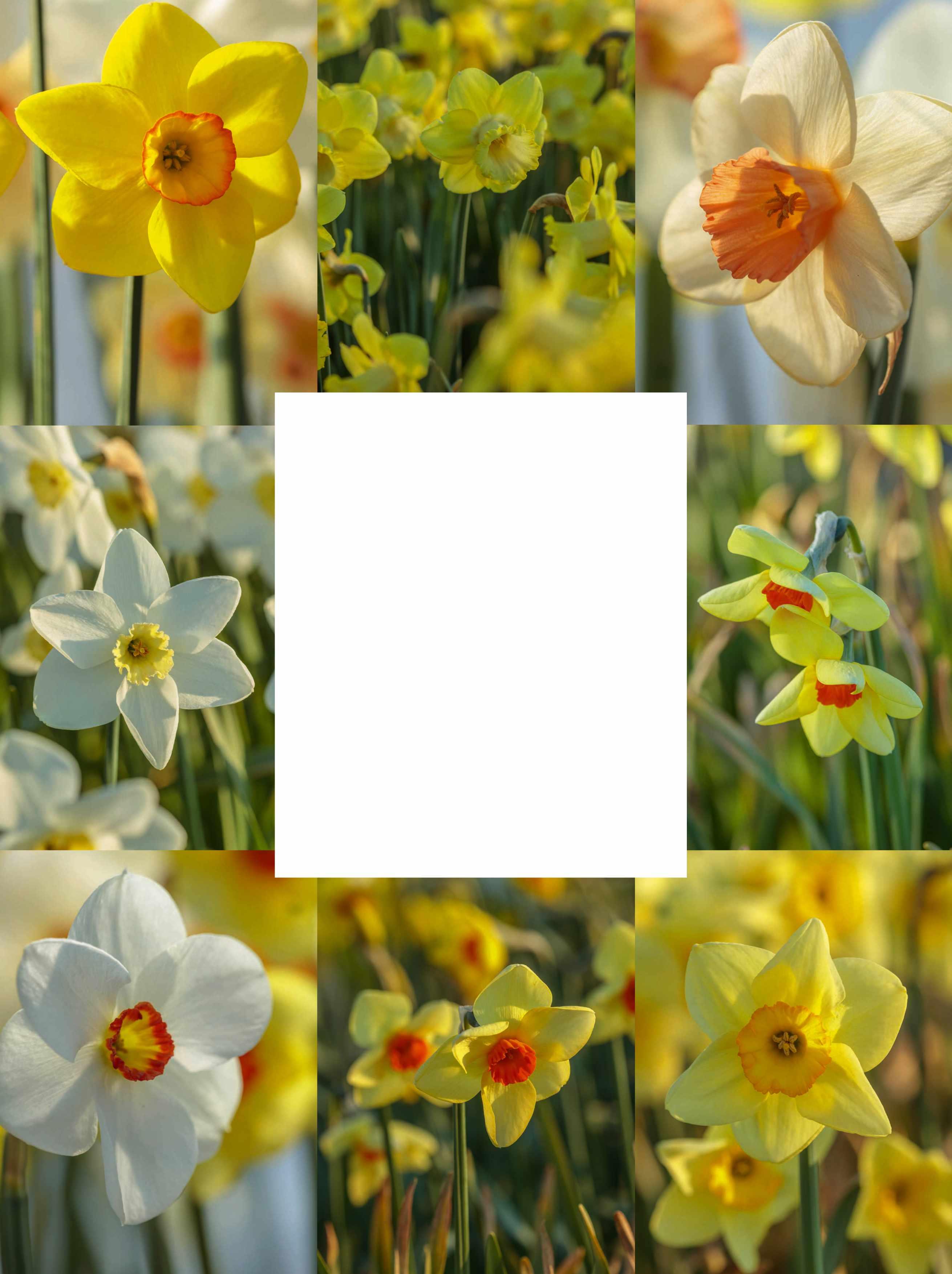
17 daffodils continued
9 Narcissus ‘Finest Cut’ A colourful, large-cupped 2020 hybrid from Brian Duncan with a deep-yellow, red-rimmed cup and yellow petals.
13 14
10 Narcissus ‘Lemon Cocktail’ A striking greenish-yellow trumpet daffodil hybrid from Ringhaddy Daffodils, its seed parent is US-bred N. ’Daydream’ from Oregon-based hybridiser Grant E Mitsch.
11 Narcissus ‘Whispering Pink’ A very striking show-bench favourite registered by Esker Farm Daffodils in 2020, this eye-catching, large-cupped, salmon-pink cultivar was bred by Brian Duncan.
12 Narcissus ‘Accomplice’ An understated hybrid from Brian Duncan, its bloodline includes Tom Bloomer’s N.‘Woodland Prince’ (1964), itself the offspring of Lionel Richardson’s N.‘Blarney’ (1935) and Guy Wilson’s N.‘Sylvia O’ Neill’ (1940).
13 Narcissus ‘Rumpus’ Another fiery-coloured, small-cupped Duncan hybrid, with bright yellow petals and a zingy-orange, thickly ribbed, bowl-shaped cup.
14 Narcissus ‘La Paloma’ The fascinating bloodline of this graceful, small-cupped, green-eyed cultivar from the Californian hybridiser William Roese includes contributions from Co. Waterford-based breeder Lionel Richardson (N.‘Merlin’) and Tasmanian breeder H Bulman (N.‘Estrella’).
15 Narcissus ‘Pratincole’ Another great show-bench cultivar from Brian Duncan, this award-winning, small-cupped 2006 hybrid is known for its lemon-yellow petals and bronze-orange cup.
16 Narcissus ‘Hope Springs’ This yellow, small-cupped Duncan hybrid is one of several winning results from crosses using his own hybrid N. ‘Moonshadow’ and Clive Postle’s N. ‘Lemma’.
See facing page for number 17
Most daffodils have a hardiness rating of RHS H6, USDA 4a-8b.
10
9
12
15 16 11
the nursery’s large multi-span glasshouses, using containergrown plants along with pollen collected from parent plants in the bulb fields. The hand-pollinated flowers are immediately covered with small organza bags, then labelled, and the cross carefully recorded. Roughly six weeks later, seed is harvested and either sown immediately or in autumn. Propagation using the technique known as twin scaling is reserved for slow-tobulk-up cultivars, typically miniatures.
In the same way that racehorse breeders select a dam and sire for potential winners, all parent cultivars are carefully evaluated for desirable traits that they might potentially confer, including flower colour, form, size, firmness of petals, vigour and time of flowering. Along with Northern Irish cultivars, the Hardys have reached out to breeders in Britain, the USA, New Zealand and Europe to increase the genetic breeding pool.
Every breeder has their favourites, which makes the art of the skilled hybridiser such an intensely personal one. For
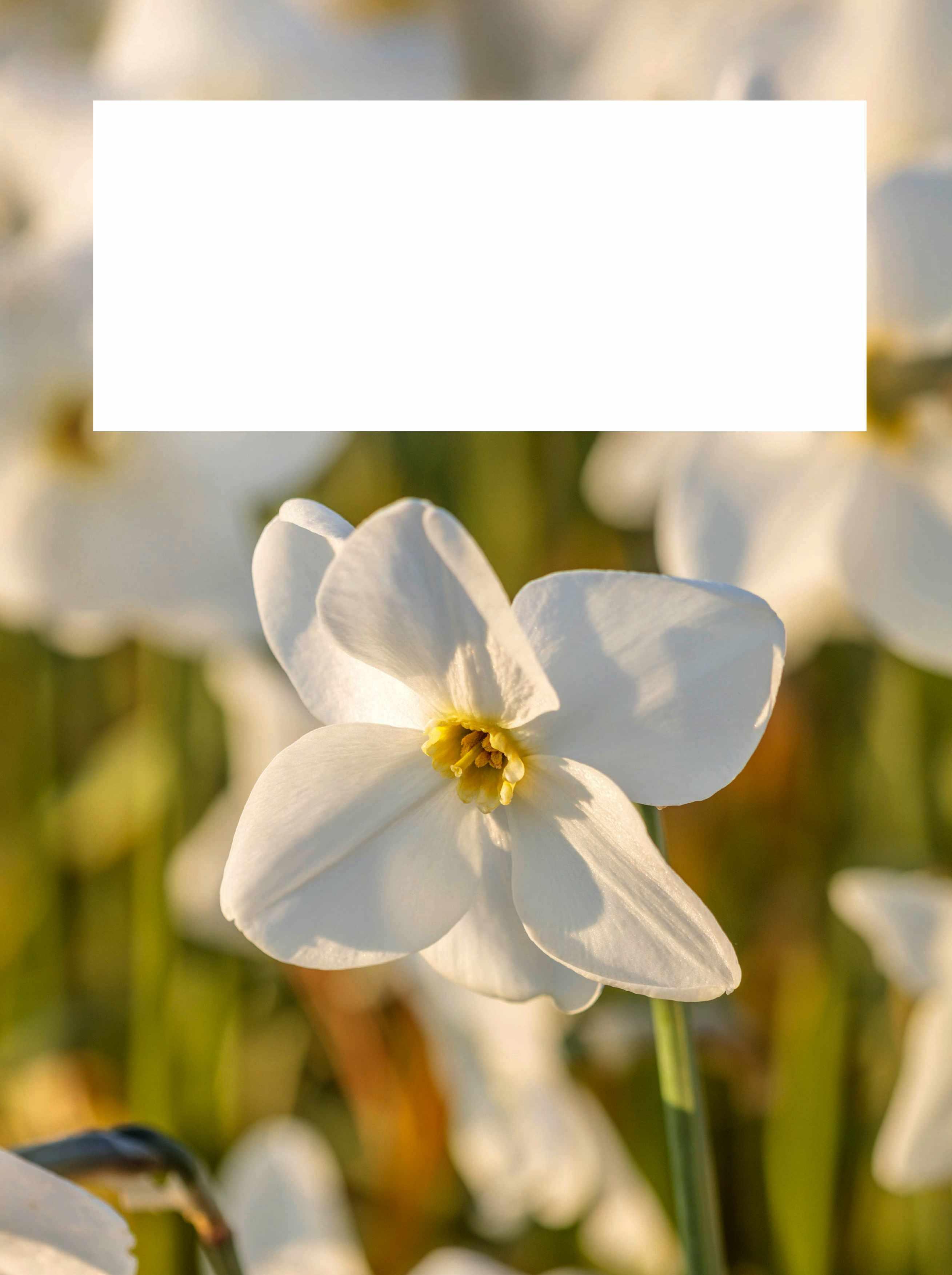
the Hardys, it’s the daffodils known as intermediates, which includes Divisions 1, 2, 3, 4 and 11. So far, they’ve registered just two of the cultivars they’ve bred themselves – the largecupped, yellow-and-orange N. ‘Strong Love’ and the very early, yellow-flowered, dwarf N bulbocodium type ‘Luna Love’ – with a further 130 seedlings identified as promising. But they’re in no rush. “Bringing a distinct variety to the point where you have enough bulbs to list for sale can take up to ten to 12 years,” says Jules. “We want to make sure they’re worthy.” ■
USEFUL INFORMATION
Address Esker Farm Daffodils, 38 Esker Road, Dromore, Omagh, Co. Tyrone, Northern Ireland BT78 3LE. Tel 07980 634423. Web eskerfarmdaffodils.com
Open Mail order only. Dry daffodil bulbs are normally sent out from September onwards. The flower fields are open to visitors in spring by appointment. See website for details.
MARCH 2024 gardensillustrated.com 95 NURSERY DAFFODILS
Narcissus ‘Ice Emerald’
17
An intriguing, award-winning, small-cupped 2010 hybrid from Nial Watson with pure-white petals and a snow-white, emerald-green eyed cup.

News, garden design insight and sourcebook

Fashionable flora
Landscape architecture and design studio Nomad has created a garden for the Gucci flagship store in Dallas, Texas. The garden, covering around 460 square metres, forms a communal space for shoppers at Dallas’s NorthPark Center to enjoy, while also creating a stylish entrance to the Gucci store. Designed as a xeriscape, meaning it requires little or no irrigation, the garden has a water-wise planting palette that includes yuccas, agaves and hesperaloe. Surrounding these are beds of Mexican feather grass and other drought-tolerant ornamental grasses and perennials. thenomadstudio.net
MARCH 2024 gardensillustrated.com 97
WORDS MOLLY BLAIR; PHOTOGRAPHS NOMAD
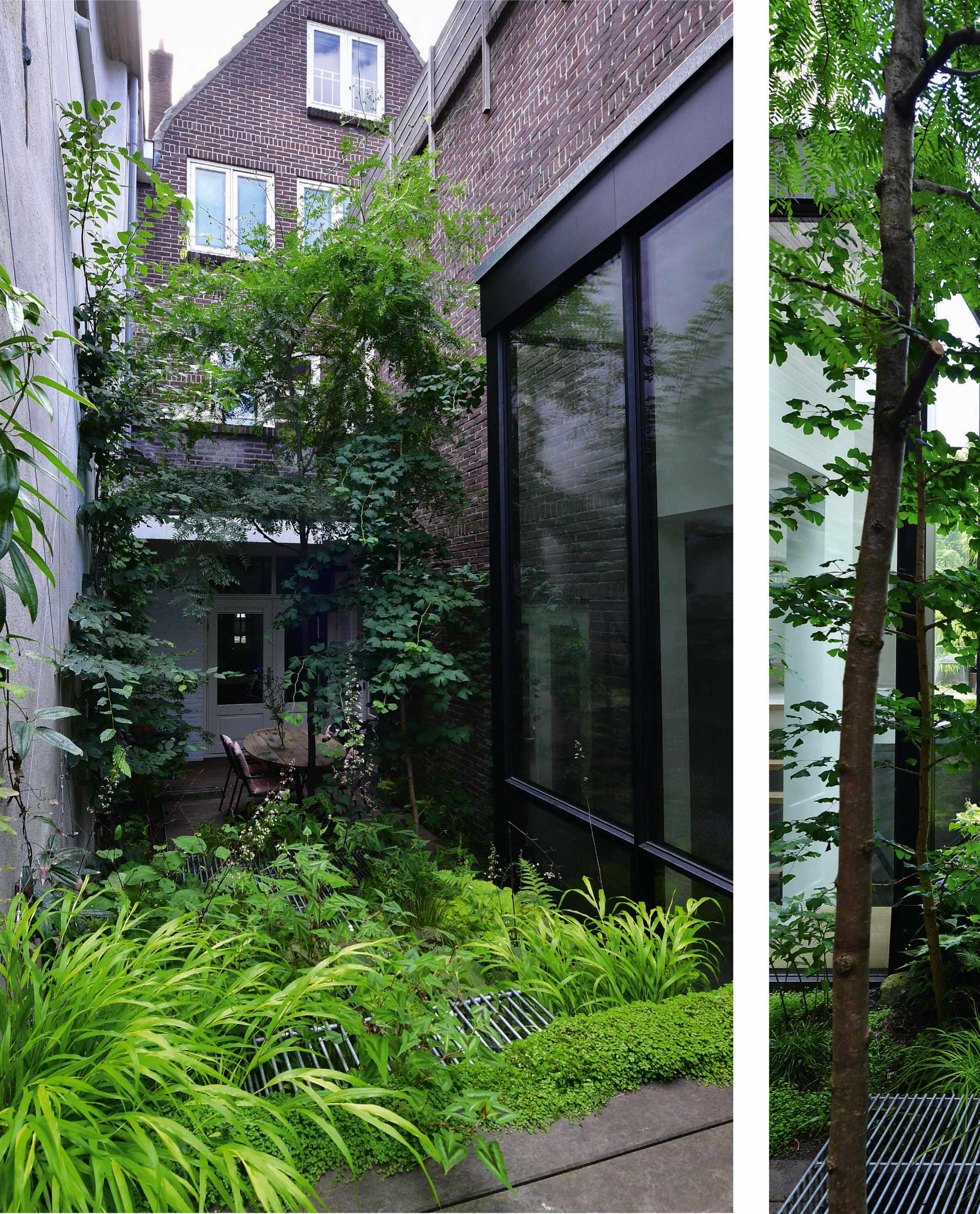

NARROW ESCAPE
A small, shaded, city garden has been transformed into a verdant urban oasis filled with trees, climbers and perennials
WORDS MOLLY BLAIR PHOTOGRAPHS SIETSKE DE VRIES
The brief
Dutch designer Erik Funneman had to visit the site of this city garden in Utrecht twice before a vision began to emerge. “When I got there, it was full of building materials and plastic covering,” he explains. “It was quite difficult to make something out of it”. It was paved with cheap concrete bricks, with no areas for plants. “The garden didn’t fit the space,” he says. “We had to remove everything.” Aside from a few specifics – a vertical garden, some water, plants to attract birds and a space to sit – the clients gave Erik a lot of creative freedom with the design. “It was not a very promising space,” he says. “They had no idea what they could do with it, but I found the complexity inspiring.”
The design
Enclosed by high walls, the north-facing garden is mostly in deep shade, save for a small area at the back, which gets a little sun. It’s also very small and narrow, so the design had to make every centimetre count. The clients had recently added a side extension, with a new glass-fronted office that opens out on to the brighter end of the garden, and a semi-underground bathroom below, meaning the garden is on two levels. “It’s part garden, part roof garden,” says Erik, “so it was quite complicated to design. We had to be careful with the weight of everything.”
It was clear that steps would be needed to connect the two terraces, but Erik didn’t want to lose any of the already limited space for planting, so he designed a metal grille that would allow for planting to continue under the steps. A sloped bed softens this transition, while climbing plants prevent the feeling that the walls are looming up over the space.
Erik created an area for a sizeable dining table where the owners could eat and work on the lower terrace, and a seating area in the suntrap on the upper terrace, where he also created a vertical garden or living wall. The front of the house faces south and offers space for the owners to sit out when it’s sunny, and looks over a cycle path and canal, but the rear garden offers a feeling of escape.
“If they want to have privacy and peace they will sit in their back garden, and on hot days it is also a very nice microclimate,” says Erik. Turn the page for more small space solutions
Far left The garden is essentially two terraces: a lower dining terrace given a calm, woodland feel by three trees and a water feature; and sunnier upper terrace, linked by metal-grille steps now engulfed by a lush mix of leaf textures, including ferns, heucheras, Hakonechloa macra and Persicaria ‘Purple Fantasy’. Left The sunny upper terrace is backed by a green wall down which cascades the grass Hakonechloa macra ‘All Gold’ alongside Asarum europaeum to create an impressive focal point for the long, narrow space.
DESIGN INSIGHT MARCH 2024 gardensillustrated.com 99
Essential elements
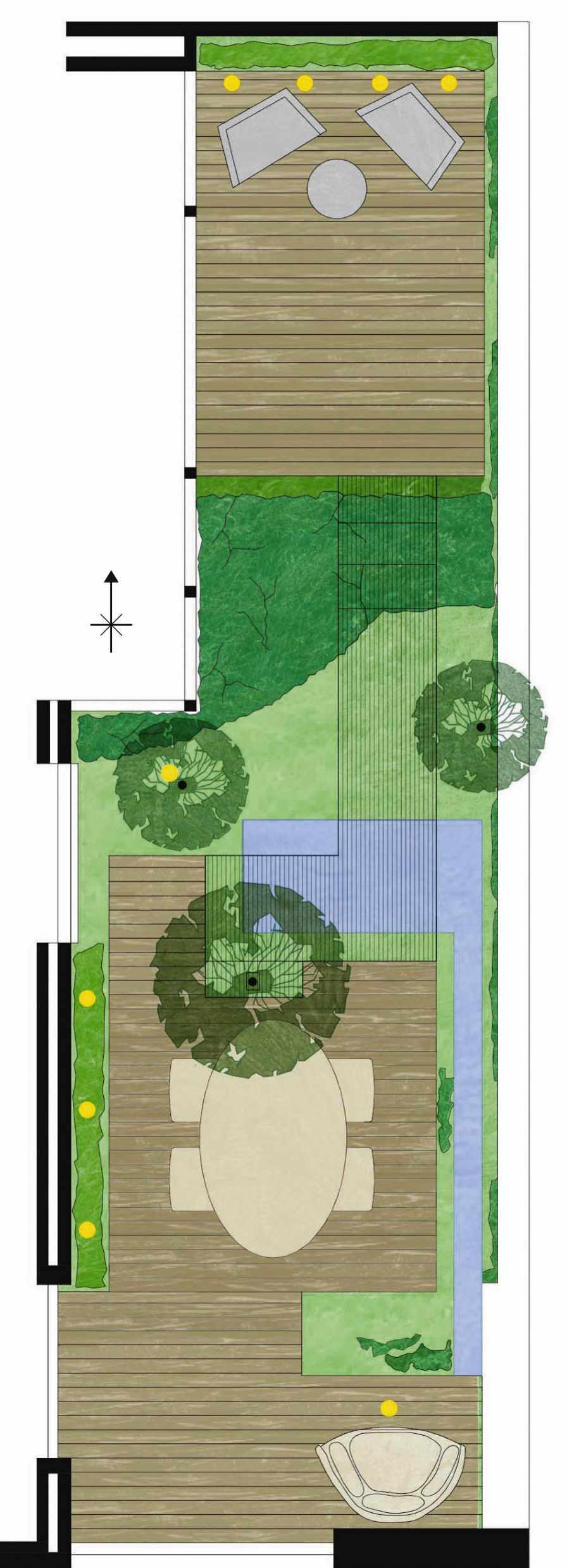
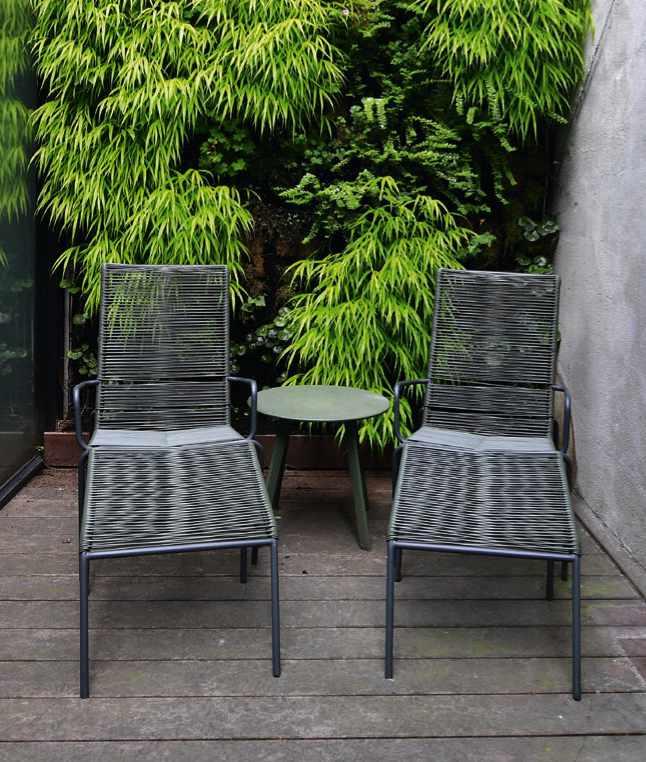


SITTING PRETTY
Erik advised the clients not to use solid or angular furniture. “It was really important that everything was airy and light,” he says. The chairs are metal with woven seats, so they don’t block the sun from reaching the plants in the vertical garden. The organically shaped dining table on the lower terrace, made from old railway sleepers, is easy to walk around in the small space.
CALMING WATER
“I wanted to make a channel from the upper terrace down to the lower one, like a small waterfall, but this was too expensive, so we made a smaller water feature instead,” says Erik. “It adds an extra dimension to a garden, especially a small one. There is a small pump, so it makes a very subtle sound that is very calming. You also get the reflections of the sky and the leaves, and it attracts wildlife.”
FOREST FEELING
It would be easy to shy away from using trees in a very compact space, but Erik felt that they were a natural choice for this garden. Because space for the roots is limited, the trees will grow quite slowly. Although they will need careful management and pruning over time, they shouldn’t overcrowd the garden. They also provide autumn interest and attract birdlife, which was important to the clients.
1 Green wall
2 Uplighters
3 Ipe decking
4 Sloped bed
5 Galvanised steel steps
6 Trees
7 Water feature 8 Dining table
5 8 6 1 2 4 3 7 N
2 6 6 3 3 6

The planting
The whole courtyard was grey and the large walls seemed imposing, but Erik knew that with the right planting it could be an inviting view.“The clients wanted a feeling of bringing nature into the city,” he says,“and a softer, green garden.” For instant impact, he used three trees in the lower courtyard: Ginkgo biloba, Carpinus betulus and Gleditsia triacanthos f. inermis ‘Sunburst’.“I planted trees with small leaves to get a forest feeling of looking through the branches,” says Erik.“Naturally, it’s kind of a woodland environment because of the shade, the moist soil and the high walls.”
The clients originally wanted more colour, but because of the challenging conditions Erik recommended focusing on lush green planting and textures. On the sloping bed under the metal steps, he planted a mixture of different textures and leaf shapes from Hakonechloa macra, Persicaria ‘Purple Fantasy’ and Heuchera ‘Brownies’ among ferns and a groundcover of mind-your-ownbusiness, Soleirolia soleirolii, that softens the decking’s edge.
The 7m-high wall of the neighbouring house creates a tall boundary, up which climbing plants, such as Clematis armandi ‘Snowdrift’, add interest. Erik is also training the Carpinus betulus as further cover.“This wall was my canvas for the garden,” says Erik.“It didn’t have to be completely covered. I like the contrast between the small leaves and the background.”The clients also wanted a vertical garden, which Erik sited at the back of the top terrace, where it catches the sun. This green wall is limited to a few plant species, including Hakonechloa macra ‘All Gold’, which provides autumn colour, alongside Asarum europaeum and Soleirolia soleirolii
The hardscaping
All areas of the house look out into the garden, including the newly built, glass office space that leads on to the upper terrace. To tie the garden together, both terraces are decked with an FSC-certified Ipe hardwood, the soft colouring of which forms a backdrop that really allows the green of the foliage to stand out.
On the raised level, the team used a roof garden substrate to limit the weight of the planting, whereas on the lower level the garden soil was enriched with organic matter. Around the garden, uplighters allow for the space to be used at night and cast shadows from the trees on to the walls. A drip-irrigation system, used to help the plants establish, means there are no plastic hoses taking up unnecessary room in the compact garden.
The walkway and steps between the terraces are made from galvanised steel rods.“I wanted to keep the middle space green,” says Erik.“If there had been wooden or Corten steel steps it would have taken away from that. I wanted to create almost invisible stairs.” Each piece of steel is rounded, so the steps are comfortable to walk on, and the distance between each bar was carefully considered to ensure the construction was strong and safe. The steel was also chosen as a way of tying the concrete surroundings and the house extension together – it’s modern in feel and matches the grey tones of the walls.“They wanted to connect the garden to the architecture without making it heavy; I wanted to keep it light.”
USEFUL INFORMATION
Find out more about Erik Funneman’s work at erikfunneman.nl
DESIGN INSIGHT
MARCH 2024 gardensillustrated.com 101

Embark on a holiday that creates memories to last a lifetime.
Whether you’re commemorating a milestone anniversary or birthday, or gathering for another precious occasion, let us enhance every moment through the warmth and personalised service of our wonderful crew and the splendour of The World’s Most Luxurious Fleetª
Set sail with Regent Seven Seas Cruises® for a voyage filled with unforgettable moments.
TO LEARN MORE
SCAN THE QR CODE
CALL 023 8082 1362
VISIT RSSC.COM/GARDENS-ILLUSTRATED
OR CONTACT YOUR TRAVEL ADVISOR



AD240301_UnforgettableMoments_GardensIll_FP
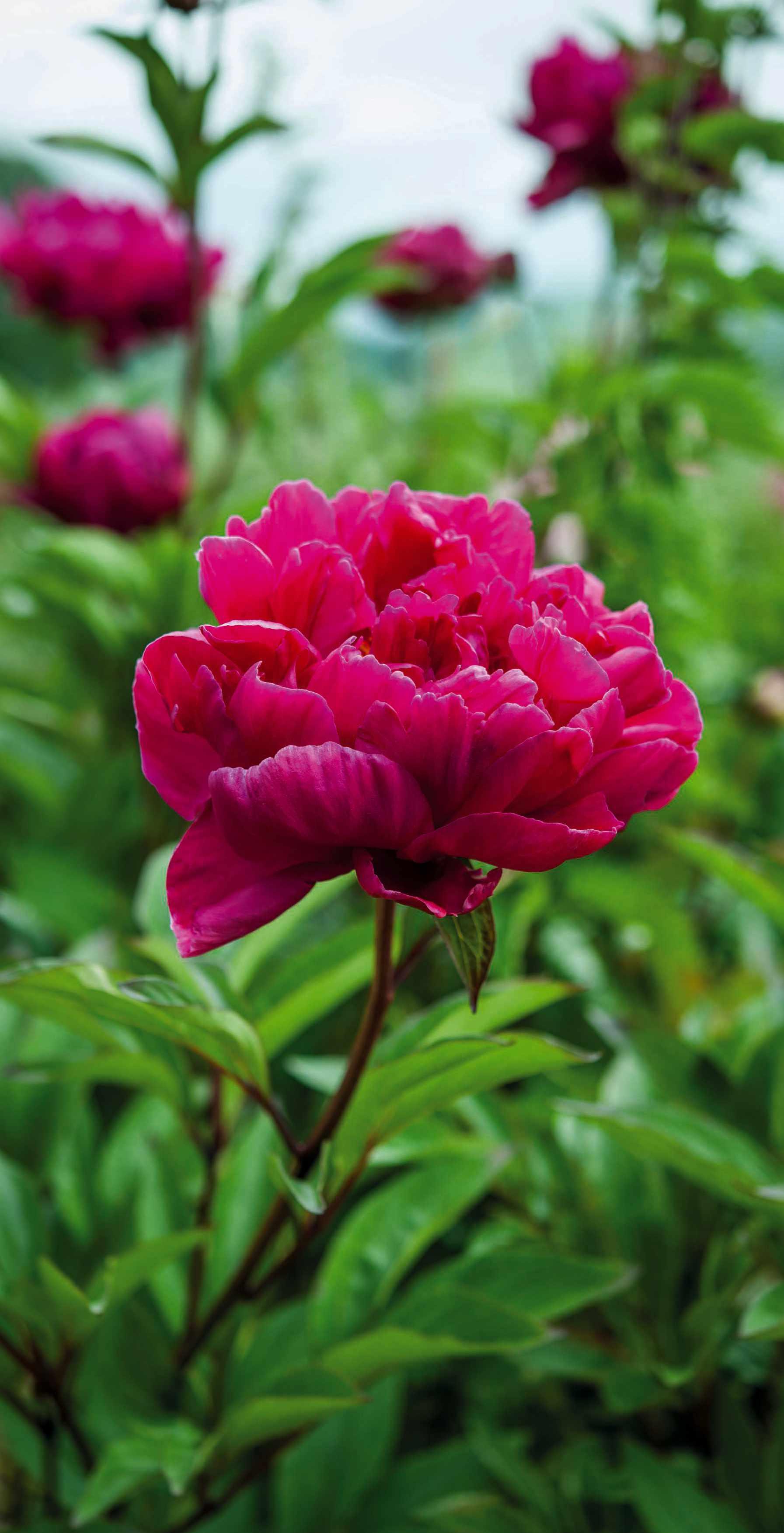
Annual

benefits include…
print issues of Gardens Illustrated every year
savings on the shop price Access to our Members-only website
offers from our selected partners
exclusive e-newsletter
Photo: Jason Ingram
Membership
13
Great
Member
Member
Gardens Illustrated Members’ Week
Member competitions Become a Gardens Illustrated Member today to open up amazing benefits Become a Member online at ourmediashop.com or call 03330 162114
Exclusive



The joy begins. Within a few short weeks, our gardens will be transformed.
We’re spreading the joy and kicking off the growing season by offering you 25% off all perennials when you use code GI25 at checkout
Shop with Crocus, the most trusted online gardening brand
5 year plant guarantee
Rated Excellent by over 50,000 customers on Trustpilot
Shop at crocus co uk
Making the beautiful, possible
Visit www crocus co uk and use code GI25 at checkout Code is valid until 23:59 on Monday 1st April 2024 Offer valid on full price perennials only and only one code can be used per order Offer cannot be applied to previously placed orders Standard delivery charges apply
DESIGN SOURCEBOOK
Mini greenhouses
Extend the season without losing garden space with these small glasshouses
COMPILED BY MOLLY BLAIR
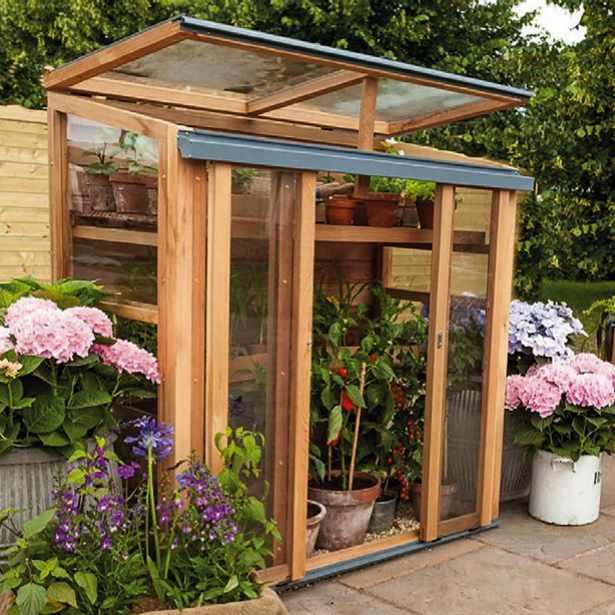
HINGED LID
Upright Coldframe, £1,239.59, Gabriel Ash, 01242 662926, gabrielash.com

COLOURFUL
Elite Compact Greenhouse, from £601, Rhino, 0808 149 3421, greenhousesdirect.co.uk
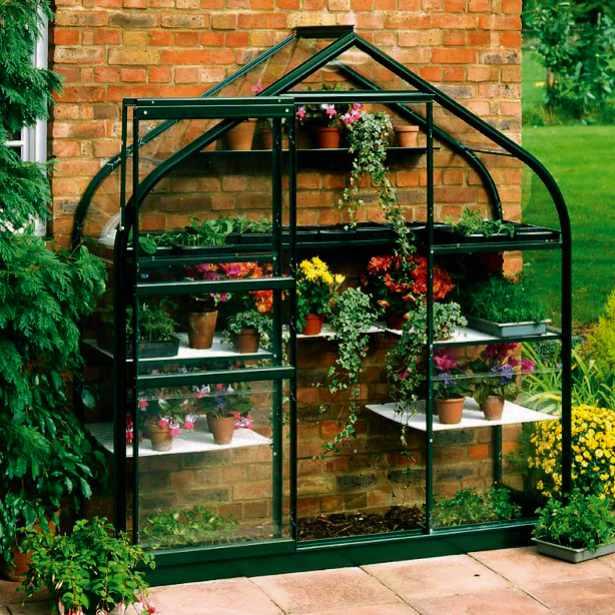
ELEGANT EAVES
Halls Supreme Wall Garden, £609, Two Wests & Elliott, 01246 451077, twowests.co.uk

MODERN APPEAL
Halls Qube Lean-To, From £629, Halls Greenhouses, 01242 662926, hallsgreenhouses.com

VERSATILE
Patio Glasshouse, £1,900, Hartley Botanic, 01457 819155, hartley-botanic.co.uk

OCTAGONAL
Anthracite Greenhouse, £2,999, Robinsons Renaissance, 0808 503 7566, greenhousepeople.co.uk

ALL-ROUNDER
Mini Greenhouse, From £459.99, Crocus, 01344 578000, crocus.co.uk
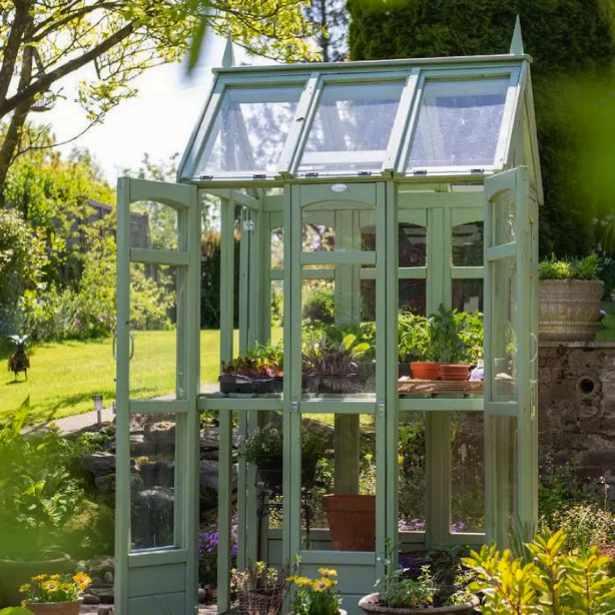
CLASSIC STYLE
Hartwood Victorian Greenhouse, £724, Sheds.co.uk, 0345 034 6481, sheds.co.uk

LEAN-TO
Westminster Small Greenhouse, From £499, Access Garden Products, 01788 822301, garden-products.co.uk
MARCH 2024 gardensillustrated.com 107
Discover more mini greenhouses by scanning this QR code with your phone camera, or visit gardensillustrated. com/mini

FRESH PICKS
ke ex ert l tspe pl esi ner deners whic b an
We asked expert plantspeople, designers and gardeners which brand new and recently introduced plants they are excited about growing this year
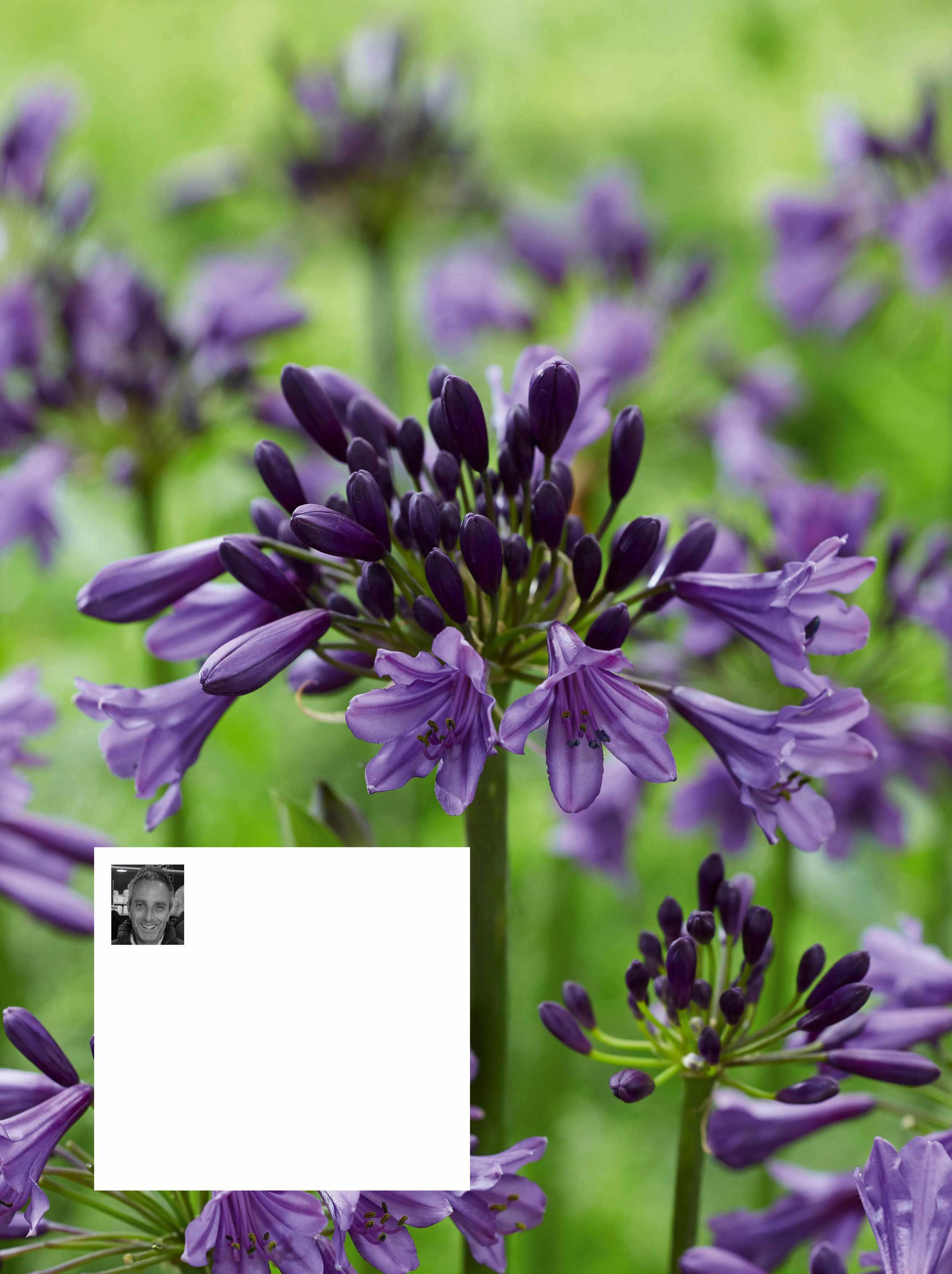
AGAPANTHUS POPPIN’ PURPLE (= ‘MP003’)
This new Agapanthus is a fantastic cultivar with an abundance of purple-black buds that open into vivid purple. It doesn’t end with the interesting flower colour – it’s a very fast grower and has a very long flowering period, from July to September. It reliably reblooms. It is ideal in containers and in the border, in full sun and well-drained soil.
Height x spread: 60cm x 50cm. RHS H4, USDA 6a-10b†
Available from How Green Nursery (wholesale only), Farmer Gracy, Crocus and J Parker’s.
PLANTS NEW MARCH 2024 gardensillustrated.com 109
VISIONS / GAP PHOTOS
Simon Sutcliffe
How Green Nursery

ANEMONE FRILLY KNICKERS (= ‘FP007’)
Bred by us, and launched in 2020, Anemone Frilly Knickers is full of surprises. It looks as good from the back as the front. With semi-double blooms, each white, finely frilled petal is suffused with pale lilac. The back of the petals are brushed with deeper violet. It flowers between July to September and prefers part shade, but can cope with more sun, if the soil is sufficiently moist and humus-rich. It is a clump-forming perennial, which does not run around.
60cm x 45cm. RHS H6. Available from Hardy’s Plants.
HARDY’S PLANTS
Rosy Hardy Hardy’s Plants
Schizachyrium scoparium ‘HaHaTonka’has dense,blue-greenfoliage,withfinehairs thatgiveitasoftglowthat’sjustmagical
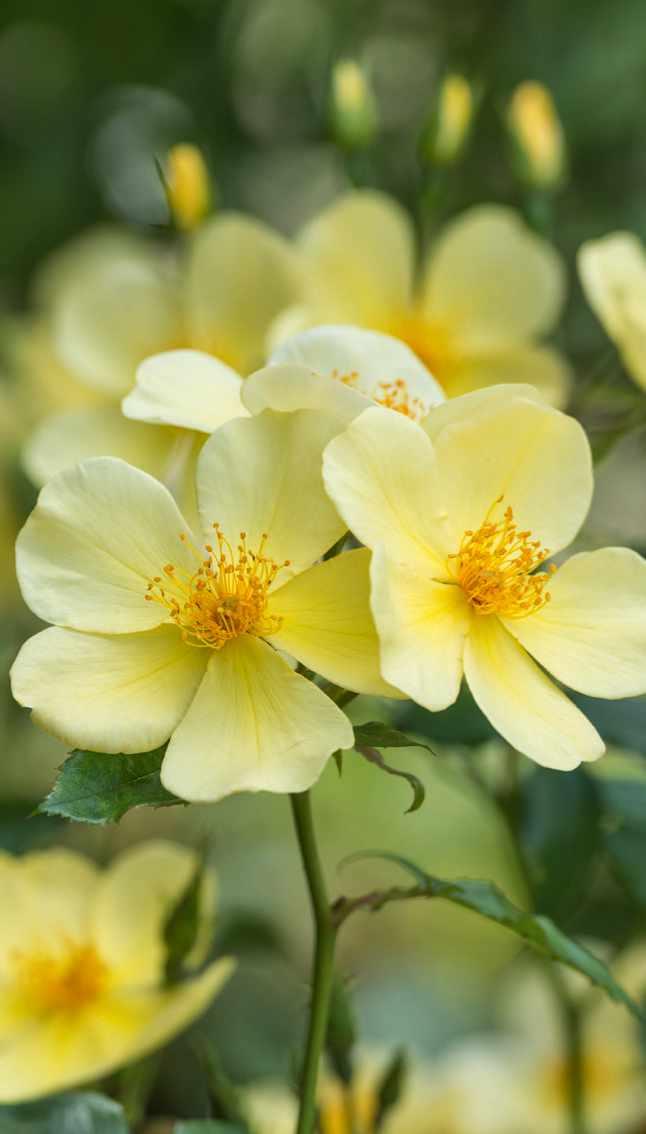

ROSA TOTTERING-BYGENTLY (= ‘AUSCARTOON’)
Our garden is divided into two, my half being mainly very informal, with most plants of wild origin or looking very much as if they were. I’m going to plant R. Tottering-By-Gently, which, with its single, soft-yellow flowers and musky fragrance, is very much in the style of the species. It is extremely healthy –crucial as I never spray anything in the garden. The flowers are produced from June through to the autumn and if not deadheaded are followed by a superb crop of orange hips that will last right through the winter. Depending on pruning, it will grow to 1.2-2m tall and will be happy in most soils.
1.25-2m x 1.25-2m. RHS H6, USDA 5a-9b.
Available from David Austin Roses.
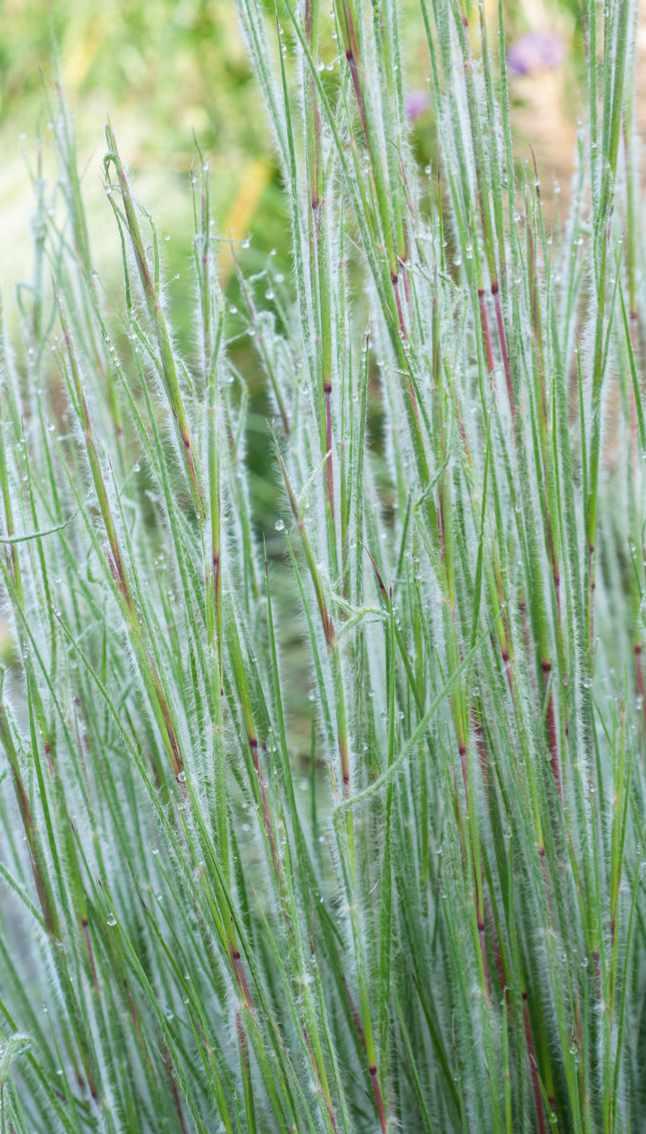

SCHIZACHYRIUM SCOPARIUM ‘HA HA TONKA’
Schizacyrium scoparium ‘Ha Ha Tonka’ is a collaboration between plantsmen heroes Piet Oudolf and Cassian Schmidt. Schmidt was on a botanising trip to the US and collected little bluestem seed in Ha Ha Tonka State Park, Missouri. Back in Germany, he sowed the seed and began crossing the offspring. He and Oudolf made the selections over time, and this cultivar was the result. I first came across it on a visit to Oudolf’s own garden in 2018. It’s still hard to find, but I’m looking forward to including it in meadow/ prairie-style plantings. It has dense, blue-green foliage, with fine hairs that give it a soft glow that’s just magical. It suits drought-tolerant, dry conditions and low-fertility soil, and has a stiff, upright habit and wonderful autumn colour.
50cm-1m x 1m. RHS H6, USDA 3a-9b. Available from Hayloft Plants.


COSMOS BIPINNATUS ‘APRICOT LEMONADE’
We’ve seen the introduction of some novel new cosmos in recent years, including ‘Cupcakes’ with its unique bowl-shaped flowers. But for delicate and intriguing colour in borders, large containers and especially for cutting, then look for ‘Apricot Lemonade’. The jagged soft apricot petals, shading to pink at the base, are pale lavender on the backs. At just 60cm high, and with the same feathery foliage as other cosmos, ‘Apricot Lemonade’ is ideal among roses – plus, I suggest a row specifically for cutting.
60cm x 40cm.
Seeds available from Thompson & Morgan, Sarah Raven, Suttons.
PLANTS NEW
JOHN
GLOVER / GAP PHOTOS VISIONS BV, NETHERLANDS / ~HOGENDOORN
† Hardiness ratings given where available. MARCH 2024 gardensillustrated.com 111
HOWARD RICE
Sheila Jack Garden designer
Michael Marriott Rose expert
Graham Rice Garden writer
Inthesecondyear Ipomopsis rubra shootsup anunbranchedstemandexplodesintoatower ofthemostbrilliantredflowersimaginable
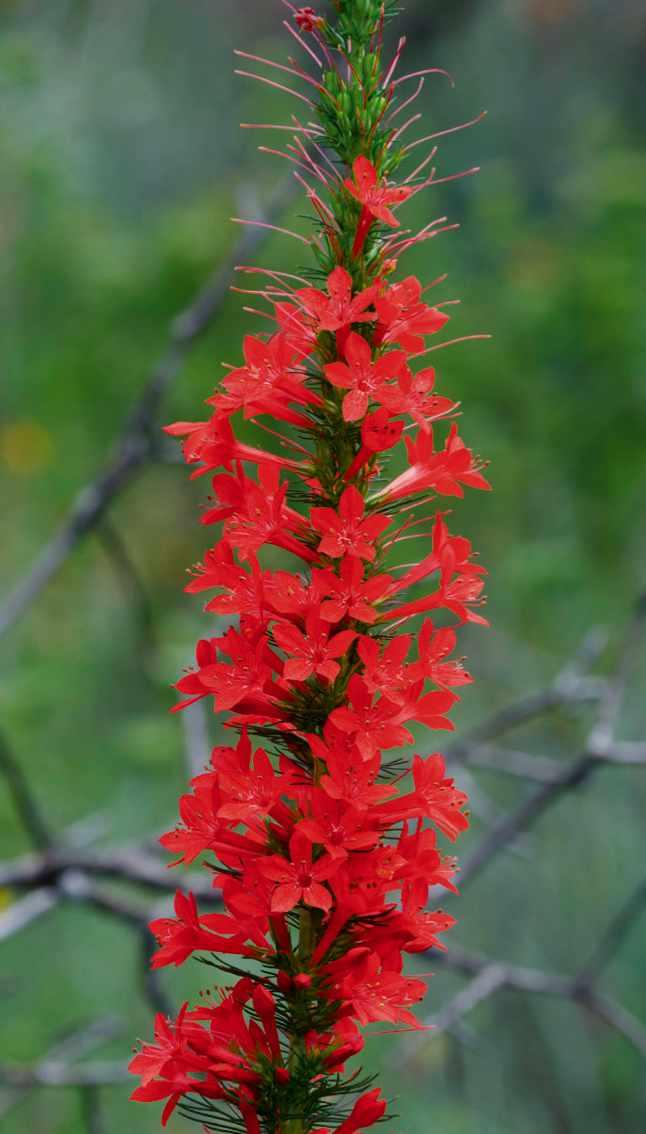

IPOMOPSIS RUBRA
I would happily grow this very hardy biennial, which thrives from Texas to Canada, just for the mound of featherfine grey leaves in its first year. But in the second year it shoots up an unbranched stem and explodes into a tower of the most brilliant red flowers imaginable in July and August. These are irresistible to hummingbirds in the USA, and attractive to bees and butterflies here in the UK. The height seems very variable. Grow in full sun in well-drained soil. Easily the most exciting plant I have grown recently.
90cm-1.8m x 15-45cm. USDA 6a-9b. Seeds available from Special Plants.


SESLERIA ‘SUMMER SKIES’
This recent introduction from Knoll Gardens is growing beautifully on my allotment, where I experiment with new plants. It’s somewhere between the hybrid Sesleria ‘Greenlee’ and Sesleria autumnalis. It has an upright habit with relatively stiff, blue-grey foliage and creamy white flowers. It is semi-evergreen, which is great for giving a lush, green feel to a garden and is great for dry sites.
Grasses are so important for the planting palette as they cover the ground, suppressing weeds and retaining moisture but still allowing perennials to emerge and flower. Having a sturdy and short grass is a great option to combine with many, many perennials for full sun; we’ve started using it in our projects as a matrix plant with echinaceas, sedums and agastaches. I’ve observed that it can take a bit of dappled shade too.
40-60cm x 60cm. RHS H7, USDA 5a-9b. Available from Knoll Gardens.
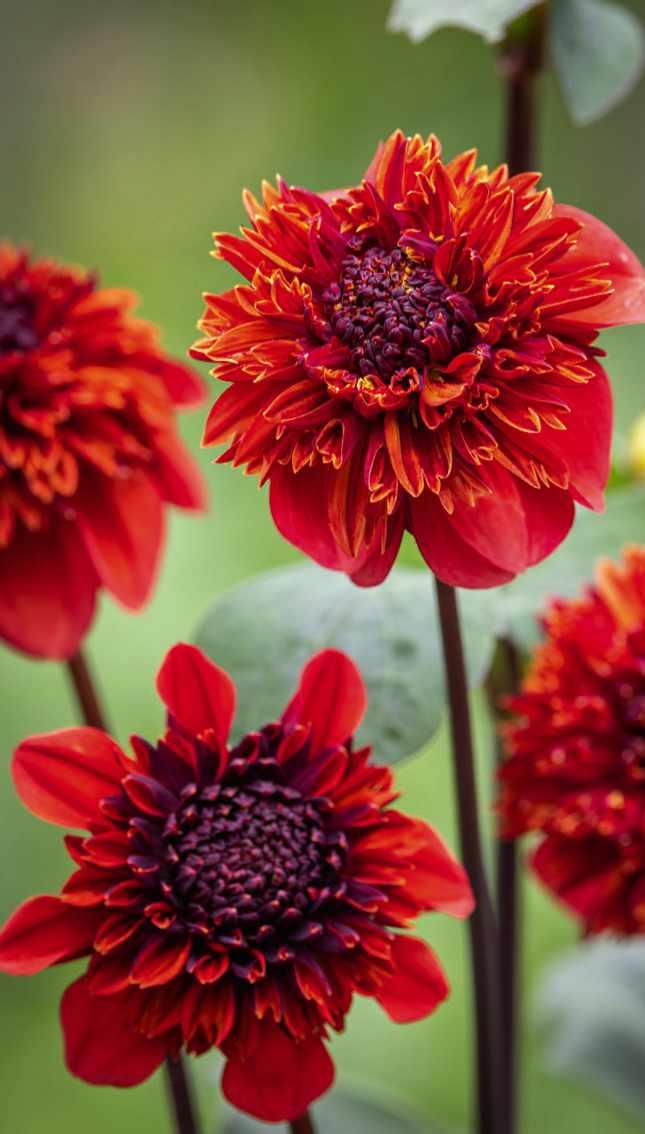

DAHLIA ‘ADAM’S CHOICE’ AND ‘KING ARTHUR’
Dahlia ‘Adam’s Choice’ (above) is a beautiful new cultivar that my husband Adam and I discovered on a visit to Dutch breeders. We’ve bred it on and now have a few for sale and for the garden at Perch Hill. It is an Anemone Group dahlia with toffee-apple pompoms and a rich and lustrous old tapestry feel.
90cm x 60cm. RHS H3, USDA 7a-10b.
The dark, chocolate flowers of Dahlia ‘King Arthur’ look as though they have been cut from silk velvet. It sat firmly at the top of all our notebooks when on our dahlia hunt last autumn. Exclusive to us, everything about this dahlia is irresistible.
90cm x 75cm. RHS H3, USDA 7a-10b. Both available from Sarah Raven.
PLANTS NEW
112 gardensillustrated.com MARCH 2024
BRYAN REYNOLDS / ALAMY STOCK PHOTO
JONATHAN BUCKLEY / SARAH RAVEN
CAROLE DRAKE / GAP PHOTOS
Derry Watkins Owner, Special Plants
Stefano Marinaz Garden designer
Sarah Raven Grower and writer



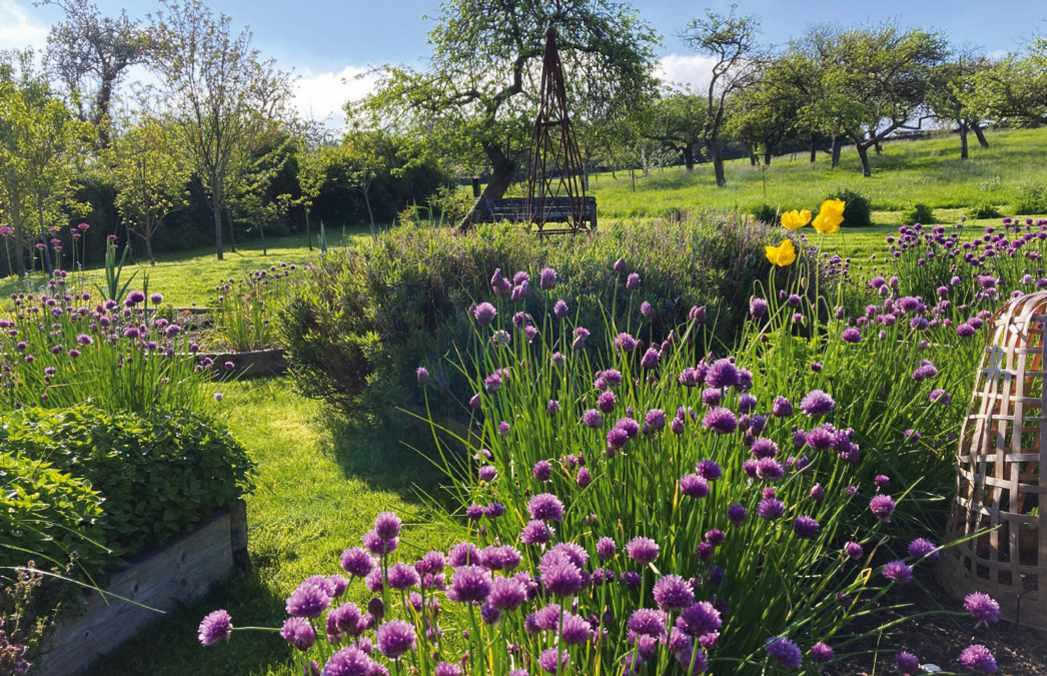

www.jsgardens.co.uk 01905 381679 / 07930 576881 01386 750 585 info@readyhedge.com readyhedge.com PROVEN QUALITY AND RELIABILITY FROM THE HOME OF INSTANT HEDGING READYHEDGE At Readyhedge, we’ve been growing and delivering hedging of uncompromising quality for over 20 years. With plants irrigated, fed and trimmed in the field or container by experts at every stage, Readyhedge is the home of instant hedging in the UK. Learn how to make your own beautiful, wildlife-friendly garden and grow food in tune with nature at this biodiverse smallholding in South Devon Upcoming courses include: How to Create A Sustainable Garden Biodiversity for Beginners Saturday May 11 The English Potager Garden Growing Sustainable Food with Style Saturdays June 1, June 29 and September 7 thesustainablegarden.com the Sustainablegarden g





































Hurry offer ends 1st April
Roof window
Improved window mechanism
Sliding door design
Won’t slam shut in strong winds
Strong frame Made from durable, rustproof aluminum resistant to corrosion.
Store and grow your plants, vegetables and fruits with these fantastic garden greenhouses.



































Ideal for any keen gardener, they feature a strong and durable aluminium frame with polycarbonate panels to maintain temperature and sunlight balance. With space saving sliding door design, rain gutters for water collection and a roof window for added ventilation. There is also a heavy duty galvanised zinc steel base to provide extra strength. These greenhouses are both practical and stylish and look good in any garden.
12 Month Guarantee
Self-assembly required. Installation video available online with step-by-step instructions. Please note, shelving is not included but available to purchase separately. P&P £14.99. Items despatching from March onwards.

I enclose a cheque made payable to ‘Suttons’ for £ Name Address Postcode Telephone Email Tel: 0844 736 4208 Lines open 9am-6pm, 7 days a week. Calls charged at 7p per minute plus your phone company’s access charge. www.suttons.co.uk/SUSOP532 If ordering by phone please quote Offer Code SUSOP532 If ordering online please enter SUSOP532 in your basket to activate discount. Please send to: Suttons, Dept SUSOP532 Poplar Lane, Ipswich, IP8 3BU Practical & Stylish-We’ve got your plants covered Product Code Item Description Price Qty Total D9399 Greenhouse 6.2x4.3x6.6ft GREEN £499.99 £299.99 G0467 Greenhouse 6.2x6.2x6.6ft GREEN £599.99 £399.99 G0468 Greenhouse 6.2x8.3x6.6ft GREEN £699.99 £479.99 P&P Grand Total £14.99 Cardholder’s name Expiry Date / Please debit my: Visa Mastercard Maestro Please turn your card over and write the last 3 numbers from the signature strip. CSV VIEW the Online Catalogue www.suttons.co.uk/catalogue-request Suttons’ new seed varieties deliver just what’s required to continue to inspire the nation’s gardeners, with new additions throughout flower, vegetable and fruit. With nearly 50 new varieties for 2024! Staying in touch with Suttons Please read each statement carefully Suttons would like to keep you informed about our latest products and offers by post & email. If you would prefer not to receive post, please tick this box Or by email, please tick this box We also feel you’d enjoy some of the latest products and offers by post from some of our trusted retail partners. If you would prefer not to receive these, please tick this box Please refer to our privacy policy for more details: www.suttons.co.uk/privacy-and-cookies For Suttons Terms and Conditions please visit our website www.suttons.co.uk/terms-and-conditions Offer subject to availability. We reserve the right to substitute varieties if necessary *Please note that savings are based on the equivalent of multiples of the cheapest pack size. ©2024 Suttons. † Regretfully we are unable to ship live plants to the following postcode areas: HS, IV41-IV56, KW15-KW17, PA34, PA41-48, PA60-PA78, PA80, PH40-PH44, TR21-TR24, ZE1-ZE3. We are also unable to ship seeds or plants to EU countries and Northern Ireland. Low Maintenance Durable Metal Greenhouses ORDER TODAY! OFFER MUST END 1st APRIL WITH MULTIPLE FEATURES
OVER 45,000 5 STAR REVIEWS
£299.99 6.2 x 4.3 x 6.6ft Greenhouse £499.99 NOW ORDER CODE SUSOP532 4’ 3” Deep 6’ 2” Deep 8’ 3” Deep Heavy duty galvanised zinc steel base provides extra strength 3 DEPTHS TO SUIT YOUR SPACE All greenhouses are 6’2” (1.89m) wide, 6’6” (2.01m) high 6’6” HIGH 6’2” WIDE Greenhouse dimensions 6.2x8.3x6.6ft
Chilli‘PeppaPeachStripey’isanamazingnewcultivar withbeautifullystripedfruitthataren’ttoohot; perfectforstuffingforatastysnackwithakick


CERCIS CANADENSIS ETERNAL FLAME (= ‘NC2016-2’)
Over the past few years I’ve become increasingly aware of the need to find plants that can cope with our climatic extremes, and I’ve been drawn to the work of Peter Korn in Sweden and his experiments with sand as a soil alternative. At West Dean I’m planning to grow a range of trees, shrubs and perennials in a layer of sand on the site of the Sunken Garden and will include this tree. Its claret-coloured foliage matures to orange and pale yellow through the summer, carrying all these tones on the tree at one time, and stem-borne pink flowers in the spring. Like most Cercis, it can cope with periods of drought and requires a free-draining soil. It was the RHS Chelsea Plant of the Year in 2021.
3-4m x 4m. RHS H5, USDA 4a-8b. Available from Crocus and Thompson & Morgan.
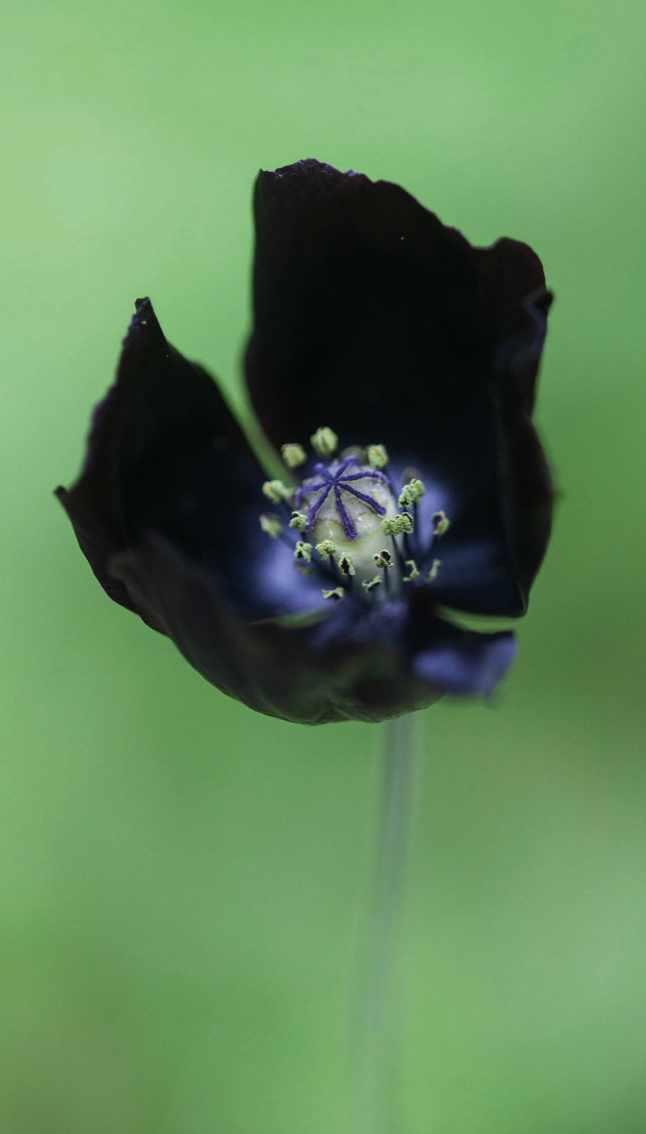

PAPAVER MACROSTOMUM ‘BLACK MAGIC’
Papaver macrostomum hails from the Anatolian plateau in central Turkey. It has shiny black flowers with emerald pollen held atop thin stems, above rosettes of small glaucous leaves. From the few plants I got to flower last year, I collected lots of seed to experiment with. I will grow some on their own in pots for display, but I also hope to combine it with white Nigella damascena in the borders, at a ratio of six poppies to one nigella.
30cm x 20cm. RHS H5.
Seeds available from Chiltern Seeds.


CAPSICUM BACCATUM ‘PEPPAPEACH STRIPEY’
There are some fantastic new chillies available for home gardeners. Chilli ‘PeppaPeach Stripey’ is an amazing new cultivar from American growers Matt Layton and Rich Blood of Pepper Guru, with beautifully striped fruits that aren’t too hot; perfect for stuffing for a tasty snack with a kick. You’ll need a greenhouse for this beauty, but then it’s up to you if you grow them in containers or the border. If you’ve previously grown chillies, you’ll have no problems with this new cultivar; just give it plenty of sun and warmth. Incredibly beautiful, productive, and not too hot – what’s not to love?
75cm x 60cm. USDA 10a-12.
Seeds available from Welsh Dragon Chilli and Towns-End Chilli and Spice.
To read more about new plants, head to gardensillustrated.com/ trending-plants-2024
PLANTS NEW
GI
MARCH 2024 gardensillustrated.com 115
ERNIE JANES / GAP PHOTOS RICH BLOOD / PEPPER GURU
TOMMY TØNSBERG / GAP PHOTOS
Tom Brown Head gardener at West Dean
Matthew Reese Head gardener at Malverleys garden
Rob Smith Gardening columnist and presenter
SNOWDROPS IN THE GREEN
SINGLE SNOWDROPS £11 PER 100
SINGLE SNOWDROPS £95 PER 1000
DOUBLE SNOWDROPS £16 PER 100
DOUBLE SNOWDROPS £140 PER 1000
ENGLISH BLUEBELLS £16 PER 100
CROCUS

£9 PER 50
MINIATURE DAFFODILS £9 PER 50
ACONITES
DWARF IRIS
FRITILLARIA
SNOWFLAKES
£10 PER 50
£9 PER 50
£9 PER 50
£15 PER 10
DOGS TOOTH PAGODA £11 PER 10
P&P £3, CREDIT AND DEBIT CARDS ACCEPTED. MAKE CHEQUES & POSTAL ORDERS PAYABLE TO:
ANGLIA BULBS, LORDS LANE, WISBECH, CAMBS PE13 4TU.
TEL: 01945 410966
ALL BULBS TOP QUALITY


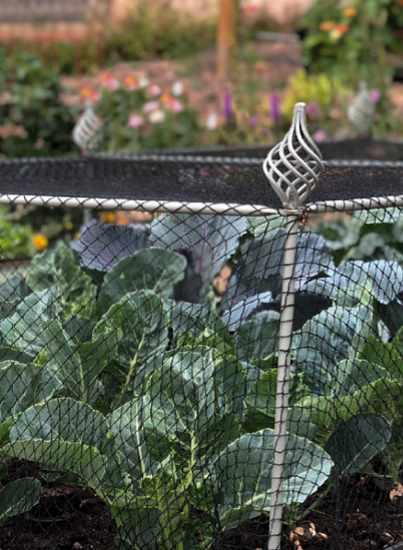

10%OFF GAR10 WHEN YOU USE CODE *VALID TO 31.12 . 24 see website for terms and conditions agriframes.co.uk | 0117 934 1790 Garden Inspiration Garden Structures . Fruit Cages . Plant Supports . Kitchen Garden . Outdoor Living
DOWNTOOLS
Book reviews, Q&A, the crossword and Alice Vincent
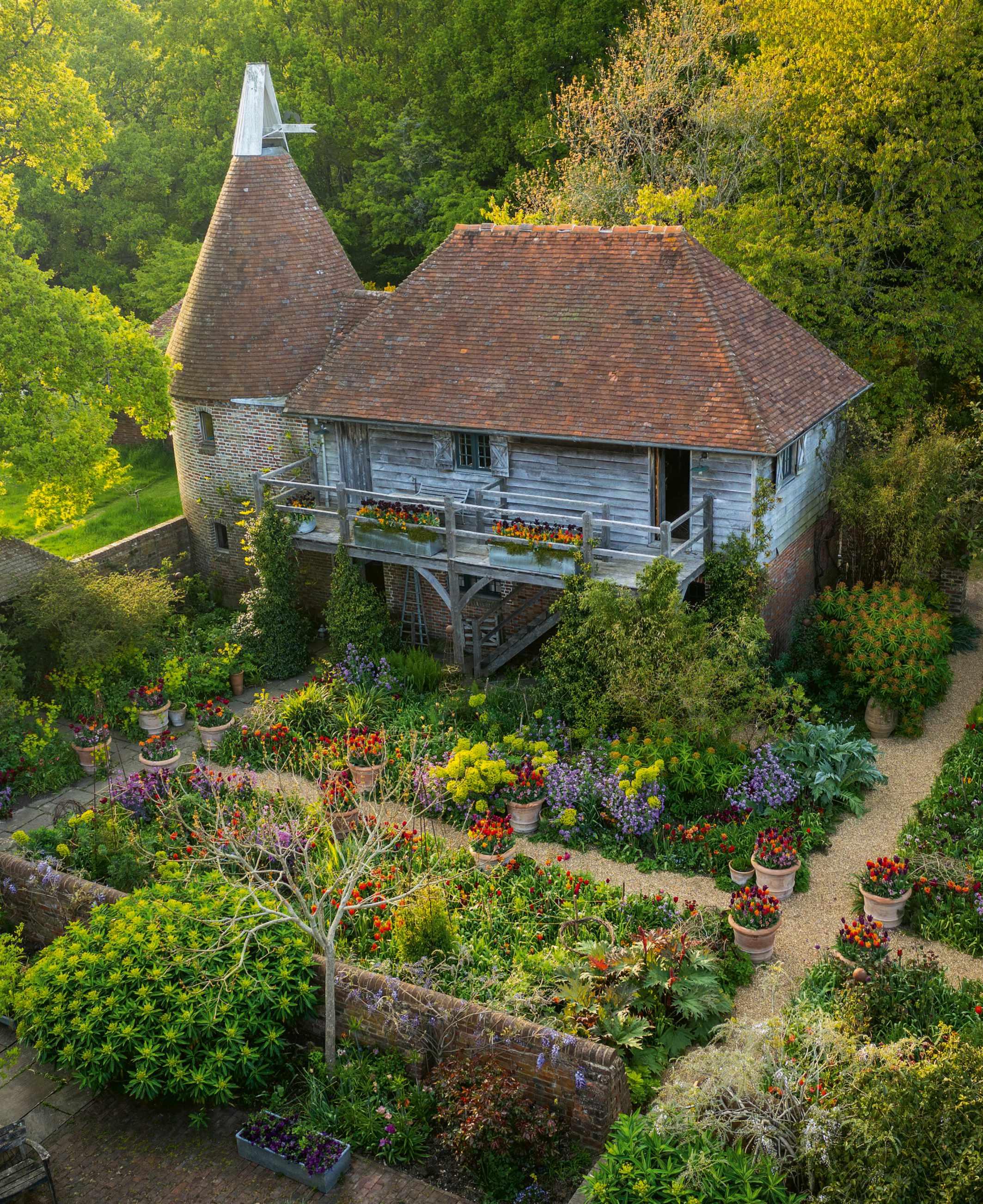
MARCH 2024 gardensillustrated.com 117
The Oast Garden at Perch Hill, from A Year Full of Pots: Container Flowers for All Seasons by Sarah Raven, featured on page 120.
JONATHAN BUCKLEY
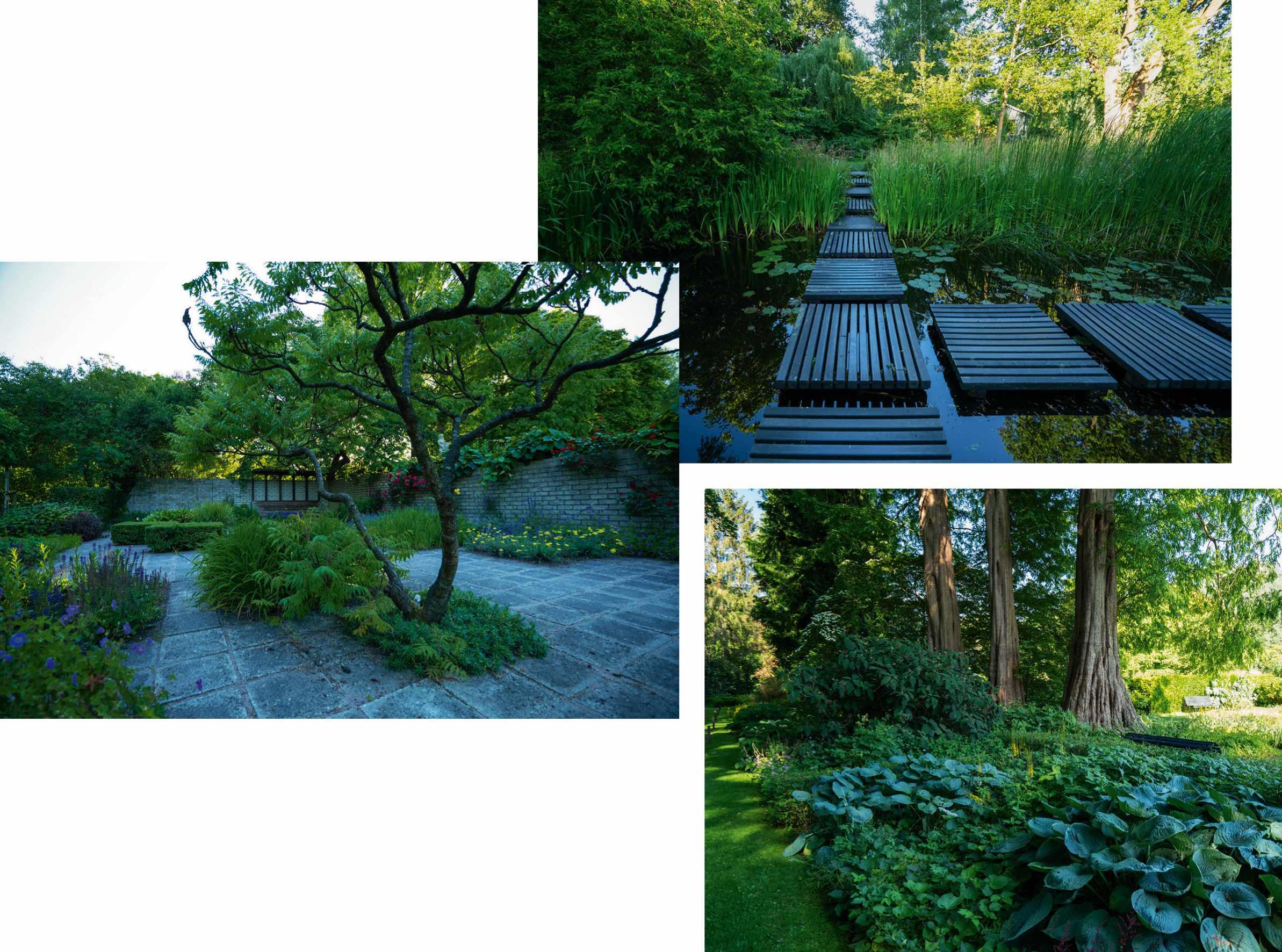
THE REVIEW
Dutch landscape designer Mien Ruys created more than 3,000 gardens and landscapes, so why is this the first comprehensive book to celebrate her work in English?
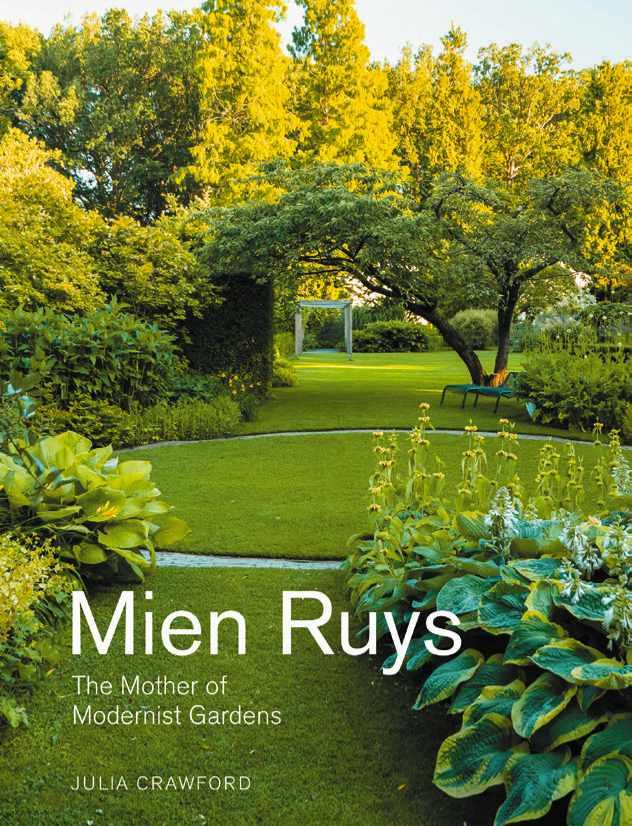
It was with trepidation that two years ago, I made my first visit to Tuinen Mien Ruys in Dedemsvaart, in the Netherlands. They say that you should never meet your heroes. I wonder if that applies to visiting their gardens? I have held Mien Ruys, the Dutch landscape designer, in such high esteem since I first discovered her, largely thanks to John Brookes who championed her work.
The garden did not disappoint. I was in awe and it looked as if it had been designed yesterday. I simply cannot understand why Mien Ruys has remained relatively unknown outside of the Netherlands and why, until now, no one had written a book in English about this remarkable woman.
Author Julia Crawford has a background in interior design, sustainable architecture and garden design. She has spent time working in both the Netherlands and the UK as an interior and garden designer. Crawford also shares a fascination with Mien Ruys, and decided to write the first comprehensive study in English about the life and work of this extraordinary woman. The book begins with Mien’s
childhood, which undoubtedly had a major impact on her career. Her father Bonne Ruys established the famous Moerheim nursery in 1888. It became one of the most influential nurseries in the Netherlands, so much so that in 1904 the nursery was awarded the title Royal Moerheim; supplying plants to the Dutch royal palace. Mien had a background in plants but her interests lay largely in design, both landscape and architecture, and her studies took her abroad before returning to work in the Netherlands. She was also heavily influenced by the emerging art and design movements of the time, including De Stijl. The early 20th century was not an easy time to be living in mainland Europe, which probably contributed to the shaping of her character and her strong socialist beliefs; including her involvement in the Dutch resistance, which included the active concealment of Jews and resistance fighters. In 1945, when the Nazi occupation had ended, Mien’s career really took off and we learn about her initial experimental landscape designs, along with her collaborative work with the key Modernist architects of the day,
118 gardensillustrated.com MARCH 2024
DOWNTOOLS BOOKS
MIEN RUYS: THE MOTHER OF MODERNIST GARDENS by Julia Crawford Lund Humphries, £39.95
ISBN 978-1848225640
ALL IMAGES BY DEYAN MINCHEV EXCEPT THE
GARDEN BY JULIA CRAWFORD
From top: Floating platforms on the Marsh Garden pond, the Square Garden, shade borders.
SQUARE




















HALF PRICE ALL THE LATEST IDEAS, DISCOVERIES, AND BIG QUESTIONS ANSWERED... Get BBC Science Focus delivered direct to your door for half the price when you subscribe! Every issue is packed with news, details of the latest discoveries and the breakthroughs affecting our future, helping you to stay up-to-speed with the fast-moving world of science. INTRODUCTORY SUBSCRIPTIONOFFER! ££5.99 2.99ANISSUE* Subscribe today to BBCScienceFocus for HALF PRICE! VISIT: OURMEDIASHOP.COM/SFHA24 PHONE: 03330 162 113+ (PLEASE QUOTE SFHA24) +UK calls wi cost the same as other standard fixed line numbers (start ng 01 or 02) and are included as part of any inclusive or free minutes al owances ( f offered by your phone tariff) Outside of free ca l packages call charges from mobile phones will cost between 3p and 55p per minute Lines are open Mon to Fri 9am-5pm If calling from overseas please call +44 1604 973 721 *Offer ends 31 December 2024 Half price offer is only available to UK res dents paying by Direct Deb t Subscr ptions will start with the next available issue
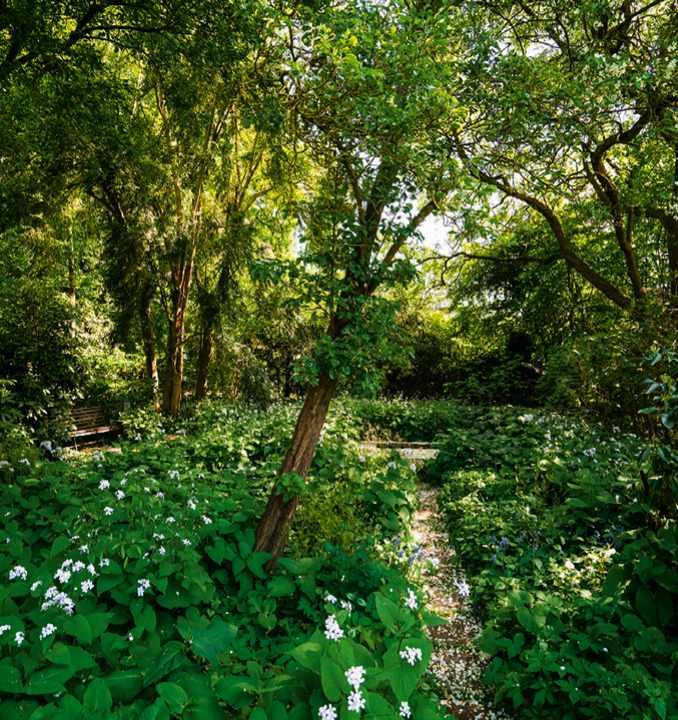
A book that should be read by everyone – it is time for Mien Ruys to be better known by all
including Gerrit Rietveld. This was a very interesting time to be working in design, as post-war, the Netherlands was undergoing a national reconstruction programme.
Mien loved geometry. Her plans appeared deceptively simple, and as Crawford explains, you can see the influence in her work from artists such as Piet Mondrian and Theo van Doesburg. In fact, her love of the diagonal line led to her being given the nickname of Diagonal Mien by her contemporaries. She was ahead of her time with her innovative use of materials, such as railway sleepers, concrete and even recycled plastic, which she used in a design she made her eighties for a ‘floating walkway’ across the water feature in the Marsh Garden in Dedemsvaart.
A particularly poignant element of this book is the insertion of seven ‘perspectives’ from different people who were close to, or influenced by, Mien, including her nephew Theo Ruijs; Anet Scholma, who worked with Mien; and contemporary Dutch designer Carolien Barkman.
This is a book that should be on every gardener’s booklist, offering a thorough insight into the work of an extraordinary woman whose influence lives on through the work of many designers including Piet Oudolf. Crawford writes: ‘Whether it’s a name we are aware of or not, many of us will have a little bit of Mien in our gardens, be it a railway sleeper, a diagonal line, a Phlomis russeliana or a water ball’. ■
Reviewer Annie Guilfoyle is a landscape designer, lecturer and co-director of Garden Masterclass.

Recommended reads this month
100 HERBS TO GROW: A COMPREHENSIVE GUIDE TO THE BEST CULINARY AND MEDICINAL HERBS
b J kk M Vi

Q d ill £30

ISBN 978-1837830442
Crowned the ‘Queen of Herbs’ by Jamie Oliver, Jekka McVicar has worked with herbs since 1985 and has witnessed changes in the climate, pests and diseases that affect them 100 Herbs to Grow is her authoritative herb handbook, with advice on the herbs that have most inspired her in the kitchen and garden
THE SCIENCE OF GARDEN BIODIVERSITY: THE LIVING GARDEN by Julian
Doberski
Pimpernel Press, £9 99
ISBN 978-1914902093
The author of Life, Death and Decay: The Science of Compost turns his attention to how the garden functions as an ecosystem He shows that garden biodiversity goes beyond the birds, mammals and insects we may be familiar with, and encourages a more thoughtful, holistic approach to gardening and garden design
A YEAR FULL OF POTS: CONTAINER FLOWERS FOR ALL SEASONS
b S h R

Bloomsbury Publishing, £35
ISBN 978-1526640130
Following on from A Year Full of Flowers and A Year Full of Veg, Sarah Raven shows how to grow flowers all year round in pots She explains how to combine flower colours using a ‘bride’ flower (the star of the show), a ‘bridesmaid’ (smaller and less conspicuous) and a ‘gatecrasher’ (the colour contrast that brings the whole thing to life)
GARDENING WITH COLOUR AT COTON MANOR
by Susie Pasley-Tyler
Pimpernel Press, £30
ISBN 978-1914902086
The ten acres of gardens at this 17th-century manor house in Northamptonshire are much loved for their luxuriant borders Owner and hands-on gardener Susie Pasley-Tyler charts how her passion for gardening developed, and shares her learnings and mistakes over the past 30 years
A SHORT HISTORY OF FLOWERS: THE STORIES THAT MAKE OUR GARDENS
by Advolly Richmond
Frances Lincoln, £16 99
ISBN 978-0711282223
The garden historian brings to life the people who introduced and cultivated our favourite garden plants and shares the juicy tales that made our most popular flowers so well known
120 gardensillustrated.com MARCH 2024
S h t S
The Wilderness Garden at Tuinen Mien Ruys.
we believe that everyone in the food supply chain should be equitably rewarded




P O M O R A . C O M
5
S %

Actress Caroline Quentin is a keen gardener and artist, and has combined her two loves in her book, Drawn to the Garden. Here, she talks about her literary loves and what gardening means to her
,Why did you write this book?
Drawn to the Garden was inspired by my lifetime love of gardening and drawing. I’ve been a grower and a painter for most of my life. My early ‘gardening’ was in window boxes and containers and then in small urban spaces. What started as a love of growing lilies in London led me to a big vegetable plot and an orchard in Devon. During the Covid pandemic, I started to share my garden and my interest in the natural world on Instagram (@cqgardens) and very quickly, I found I had a community of likeminded followers. I’ve always painted and drawn what I grow so, instinctively, I shared my artwork too. People seemed to like my watercolours so when my publisher Quarto asked me to illustrate Drawn to the Garden, as well as write it, I was thrilled.
What did you learn from writing it? I didn’t intend the book to be such a personal reflection on my own mental health, my childhood and my outlook on life in general and gardening in particular, but
‘Geoff Hamilton will always be my gardening pin-up’
writing it taught me that, just as the experience of gardening is unique to each of us, it’s also something that brings individuals together, sometimes physically but often metaphorically. The gardening community is a group of like-minded people, even though some of us are fascinated by root vegetables and others rare orchids, we speak the same language and share a sense of wonder.
What advice would you like to share from the book? Try it … whatever it might be. Don’t feel foolish and don’t let your inner critic stop you, whether it be growing a cucumber from seed, planting a meadow or sketching a hornbeam. Don’t let the ‘experts’ put you off – we all have to start somewhere and with gardening, no one dies; occasionally a peony may bite the dust, but generally gardens are a safe space to make mistakes. You can always dig it up and start again and this is a lifelong love affair. Likewise, if your sketch of a hydrangea looks more like a bonfire don’t despair; it’s meant to be enjoyable, do it for yourself.
What first sparked your interest in gardening? A combination of the miracle of mustard seeds sprinkled on blotting paper at primary school;The Tale of Peter Rabbit by Beatrix Potter (her illustrations of Mr McGregor’s veg plot were incredible); and visiting Monet’s garden at Giverny when I was 17, and seeing an exhibition of the waterlily canvasses at Jeu de Paume in Paris soon after. And Geoff Hamilton on Gardeners’ World –he was, and always will be, my gardening pin-up.
What is your current garden like? My big beautiful garden in Devon came with a big house and it was all getting a bit too much for me. My husband Sam and I are renting a lovely cottage in Somerset and are looking for a cottage nearby where I can start a new garden and a new gardening adventure. Hopefully smaller, but a perfect balance of fruit, veg, flowers and wildlife habitats. Oh, and I’m desperate to start bee keeping.
What was your biggest gardening mistake or failure?
I didn’t look after the fruit trees when I first planted them. I had young children and I was super busy. I should have cleared the grass from around them and mulched more. And I didn’t prune them soon enough. Next time I’ll get it right. The kids can look after themselves; pruning will be the priority.
What’s your guilty gardening secret? I always sow too many seeds. It’s so wasteful, not just of the compost and the seeds but of my time. I will never be able to grow as much as I’d like, but every year I get excited by new offerings in the seed catalogues, particularly heritage veg.
What’s your favourite garden or landscape to visit? Although I love to visit gardens in the UK, it is the olive and lemon trees in Corfu that make me swoon. I adore the full stops and exclamation marks of the cypress trees that fringe the craggy mountain; the Greeks call them Dachtila tou Theo which means finger of God. One day, when I’m grown up, I’d love to make a garden there.
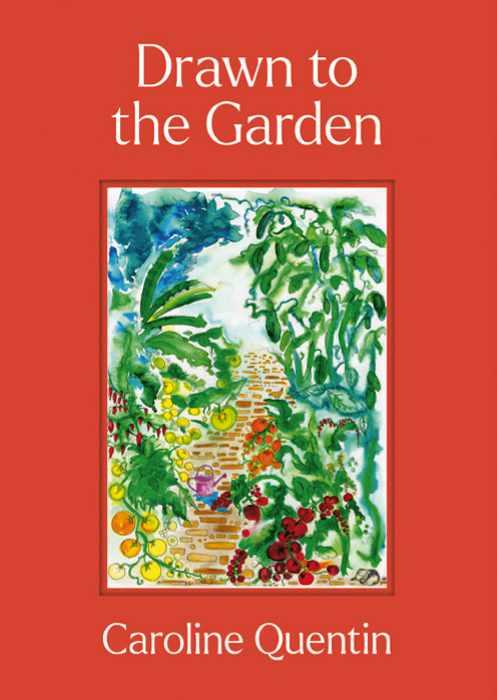
DRAWN TO THE GARDEN
by Caroline Quentin Frances Lincoln, £20 ISBN 978-0711290556
122 gardensillustrated.com MARCH 2024 DOWNTOOLS BOOKS

® WHO MAGAZINE 3 ISSUES FOR £5 When you subscribe to Who Do You Think You Are? Magazine today! y Great Reasons To Subscribe Today Receive your first 3 issues for only £5* After your trial, continue to save over 20% on the shop price when you pay by Direct Debit Build a library of expert family history advice and tutorials Never miss an issue of the UK’s bestselling family history magazine *All savings are calculated as a percentage of the Basic Annual Rate. The UK Basic Annual Rate is £68.25 which includes event issues (issues charged higher than standard cover price) published in a 12-month period. This special introductory offer is available to new UK residents via Direct Debit only and is subject to availability. Offer ends 31 January 2025. The magazine used here is for illustrative purposes only – your subscription will start with the next available issue. After your first 3 issues, your subscription will continue at £24.99 every 6 issues thereafter, saving over 20% off the shop price. Full details of the Direct Debit Guarantee are available upon request. †UK calls will cost the same as other standard fixed-line numbers (starting 01 or 02) and are included as part of any inclusive or free minutes allowances (if offered by your phone tariff). Outside of free call packages call charges from mobile phones will cost between 3p and 55p per minute. Lines are open Monday to Friday 9am–5pm SUBSCRIBE ONLINE BY PHONE www.ourmedia.com/ WHHA24 03330 162120 QUOTE CODE WHHA24
How to grow and plant miniature narcissi




more online…
Find so much
Discover the tiny narcissi grown by nurserywoman Anne Wright, with expert advice on how to care for them Our
for your online
you're looking for a reliable source of great seeds to sow this year, take a look at our recommended suppliers
to
for more exclusive content on gorgeous
the
find the latest horticultural news and details of upcoming
wealth of inspiration Meet the money-saving gardener, Anya Lautenbach Anya Lautenbach, aka @anya_thegarden_fairy, offers top tips on gardening on a budget 124 gardensillustrated.com MARCH 2024 How to forage for food in your garden Find out which plants you have growing in your garden that you can pick to eat, with Alys Fowler's new expert guide JASON INGRAM, BRITT WILLOUGHBY DYER
favourite seed suppliers
order If
Head
gardensillustrated.com
gardens and
best seasonal plants. You’ll also
events – plus podcasts, offers and competitions, and a
Nursery guide
OLD COURT NURSERIES
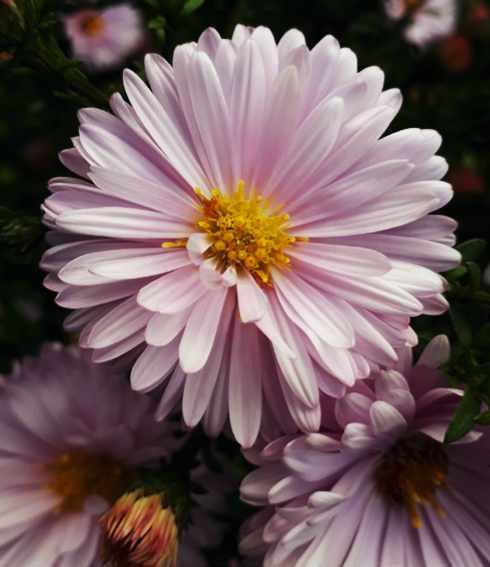
Specialist nursery and garden set at the foot of the Malvern Hills. The one-and-a-half acre garden is full of year-round interest and the adjacent nursery is well stocked with plants grown on site. Holders of the National Plant Collection of autumnflowering asters and related genre (Michaelmas daisies), as well as an extensive tender succulent and fern collection. Mail order available.
autumnasters.co.uk | 01684 540416
ASHWOOD NURSERIES

A plantsman’s paradise and an independent nursery situated in the West Midlands open seven days a week. We specialise in hellebores, hardy cyclamen, salvias, hepaticas, lewisias, hydrangeas, dwarf conifers, snowdrops, primula auricula and many more beautiful plants. Our UK mail-order service sends plants, garden essentials and gifts direct to your doorstep. John’s Garden is open every Saturday for charity. Please visit our website for full details.
ashwoodnurseries.com | 01384 401996
LANGTHORNS PLANTERY

With an eye for the unusual and a vast range of plants of all sizes, the team at Langthorns Plantery are on hand to help you choose the right plants for your garden. Our collection of more than 5,000 varieties includes ornamental and fruit trees, shrubs, perennials, roses, climbers, bamboos, grasses, herbs and wildflowers. View online or visit our Plantery and share our passion for plants.
BUNKERS HILL PLANT NURSERY
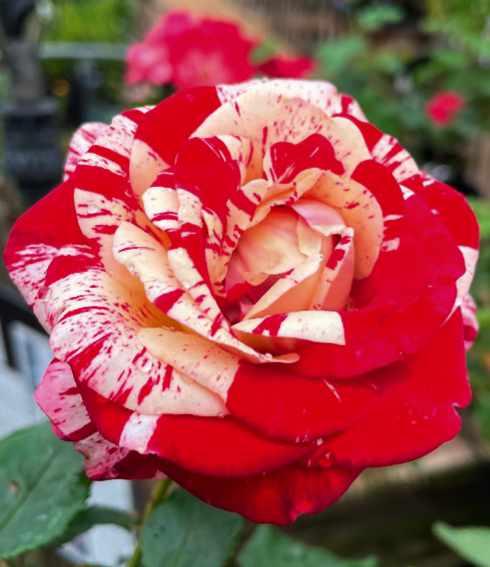
A family-run plant nursery near Woodstock in Oxfordshire, with an old-fashioned feel and traditional values. In autumn and winter we specialise in bareroot stock of roses, soft fruit, fruit trees, ornamental trees, hedging, pleached trees and rootball plants. Then in the spring and summer the nursery is bursting with a huge selection of perennials and shrubs with an assortment of rare or unusual plants. We are also pleased to send bulbs, roses and soft fruit nationwide.
bunkershillgardenshop.co.uk | 01869 331492
BLUEBELL ARBORETUM & NURSERY
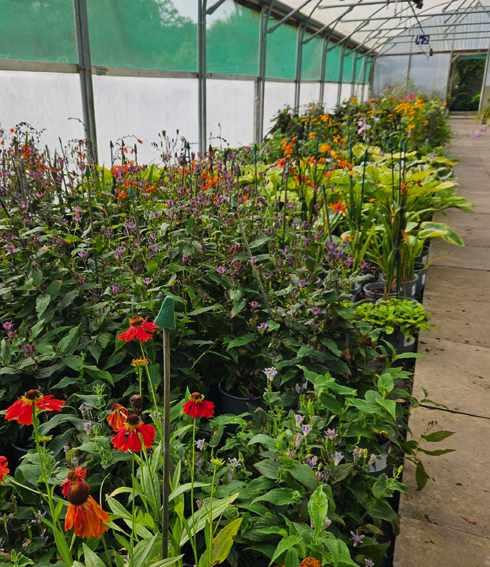
Specialist nursery growing hardy trees, shrubs and climbers including a huge selection of unusual species and cultivars. Informative website with plenty of plant photos and a reliable mail-order service is available. Surrounded by a beautiful nine-acre woodland garden (an RHS partner garden), which is open to visitors all year round.
bluebellnursery.com | 01530 413700
BEETHAM NURSERIES

Beetham Nurseries is an independent garden centre on the A6 in south Cumbria. Now in our 40th year, we offer a huge range of plants, shrubs, and more. Our Growing Nursery has a fantastic reputation for Cumbrian-grown perennials, cultivated by our passionate team. With our Garden Centre, Food Hall, Home & Gift Shop, Garden Café and Wood Fired Kitchen, you’ll find plenty to explore!
beethamnurseries.co.uk | 015395 63630
ADVERTISEMENT FEATURE
inspired with the best plant, tree and shrub suppliers
Get
|
langthorns.com
01371 872611
Gardens to visit 2024
Make the most of spring with a visit to one of these beautiful gardens and arboretums from across the UK and Ireland. Watch the turn of the seasons through the beautifully changing flora and fauna
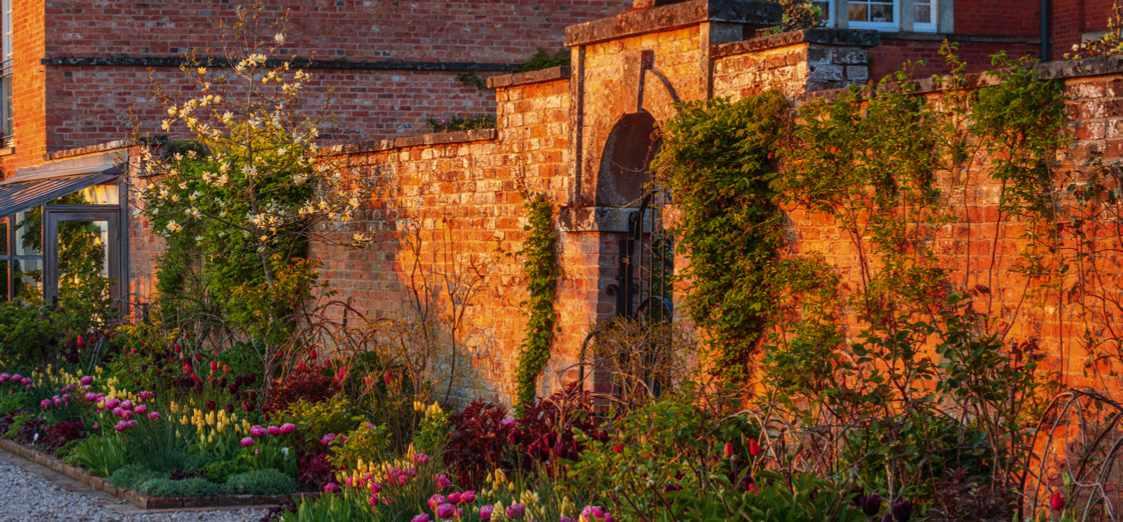
1MORTON HALL
On 4–6 May, Morton Hall is hosting its annual Tulip Festival in conjunction with the RSC and Bloms Bulbs. Exciting tulip planting, cut tulip marquees with expert advice from Bloms and original costumes from RSC productions. Tickets must be pre-booked at rsc.org.uk/morton-hall
Worcestershire B96 6SJ | 01386 791820 | mortonhallgardens.co.uk

2 CHIPPENHAM PARK GARDENS
Magnificent snowdrops, hellebores and aconites give way to swathes of daffodils and a succession of other spring bulbs and blossoms. Extensive gardens, borders, lake, canals and café. RHS Partner Garden. Gardens and café open daily until 29 March, 10am–4pm, then selected dates throughout the year. Ely, Cambs CB7 5PT | chippenhamparkgardens.co.uk
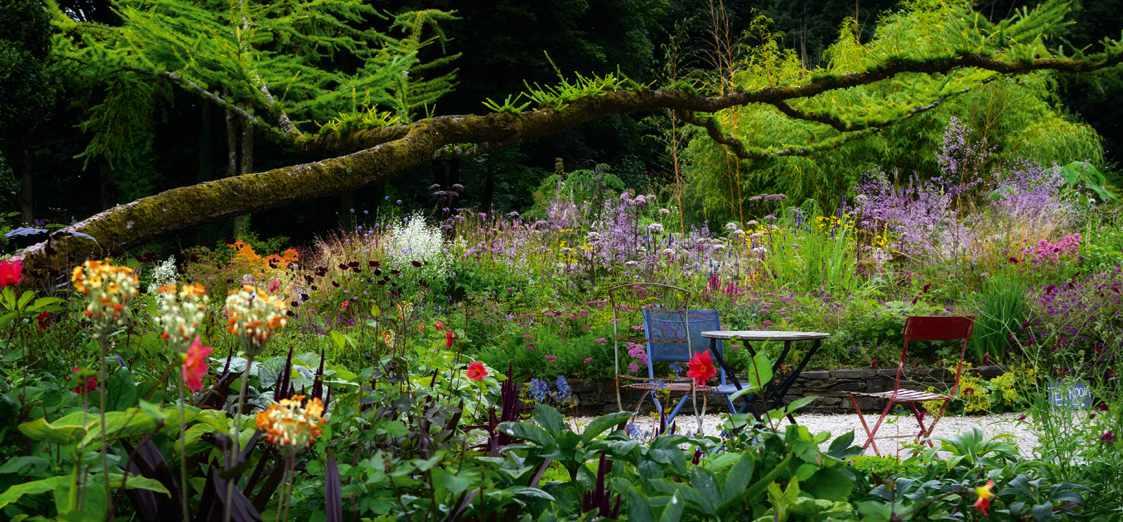
Sixteen of the most celebrated private gardens in Dublin invite you to explore! Expect expert plantspeople, extensive botanical collections, and gardens rich in design and art. From large demesnes to urban gems. For group tours and independent travellers.
+353 87 9724271 | dublingardens.com | dublingardengroup@gmail.com


3
HEVER CASTLE & GARDENS
Be dazzled by the bright sight of 80,000 daffodils and find out more about the cheery spring bloom from master daffodil grower Johnny Walkers, winner of 35 RHS Gold medals, who will be giving free tours (18–22 March).
Kent TN8 7NG | 01732 865224 | hevercastle.co.uk
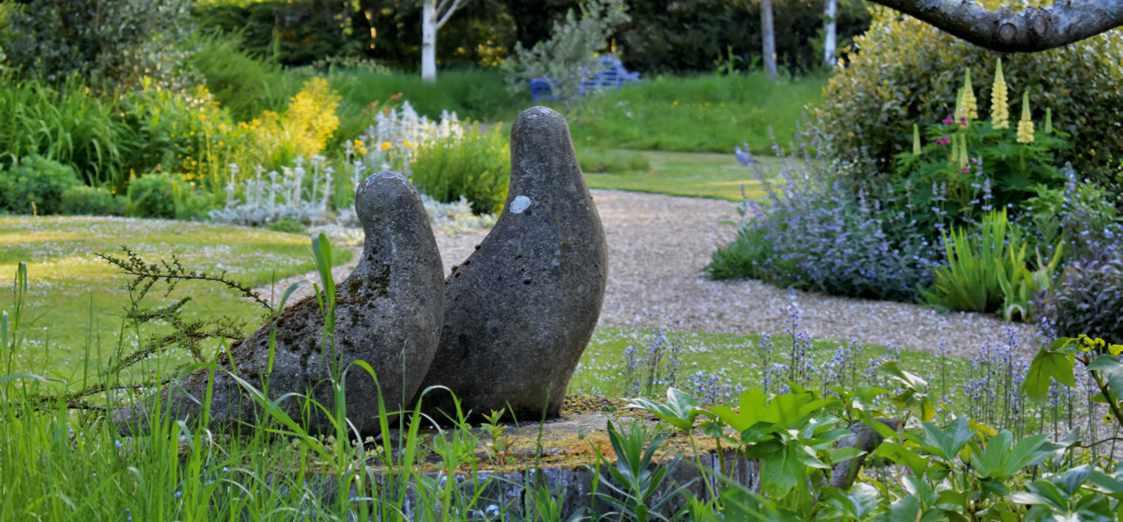
DENMANS GARDEN
by Joyce Robinson, a pioneer in gravel gardening, and former home of landscape designer, John Brookes MBE, Denmans is an award-winning Grade II, RHS Partner renowned for its curvilinear layout. Colour, unusual plants, structure and fragrance year-round. Midpines Café, shop and plant centre. Fontwell, Nr. Arundel BN18 0SU | 01243 278950 | denmans.org
ADVERTISEMENT FEATURE
1
Clive Nichols
2
3
4
DUBLIN GARDEN TRAIL
4 5
5
Created

ACROSS
8 Primula elatior, native woodland plant with pale-yellow flower clusters (5)
9 Common name for succulent in Hylotelephium or Sedum genera –oddly poor scent (9)
11 An orange-red, dwarf Geum coccineum – and pond fish (3)
12 Like a crumbly soil of sand, clay, silt – in Llandeilo, a mystery! (5)
13 A named, large, white Narcissus –and country origin of Prunus serrula (5)
14 Genus of silvery-leaved shrub aka ‘Dusty Miller’ – produces ie cones (7)
16 Thick foliage … surrounded by gazebo’s cagework (7)
18 Style of planting layers of bulbs in pots – a favourite on Italian tables? (7)
19 What the weak-stemmed plant did? (7)
21 Plant’s coiling support eg of passionflower (7)
24/20 Yellow-flowering fragrant plant, Oenothera genus, opens at dusk (7,8)
25 Reduce garden waste, say – just a bit (5)
27 Study mixed texture of powdery soil (5)
29 Revolutionary colour of a spider mite? (3)
31 Evergreen succulent with rosette of leaves makes Eric heave! (9)
32 A named double-flowering oriental lily – hot in Asia perhaps (5)
DOWN 1 Curtail … a weed of Rumex genus with a thick tap root (4)
2 Cold climate orchids that need to be frost-free – left in peonies somehow (8)
3 Heavy-cropping, self-fertile dessert plum – found in crop always (4)
4 Leo cares about broad-leaved ‘Batavian’ endive (8)
5 Flat-headed flower cluster … curls over, ruining your mixed border –initially! (6)
6 __ grass, Agrostis stolonifera used for lawns – crooked! (4)
7 Common name for Pulmonaria –Dalmatian sort? (7,3)
10 Term meaning rose-pink or red, as in Filipendula ___ (5)
14 Garrya elliptica’s common name ___-___ bush … stalkless I fancy (4-6)
15 Cuphea cyanea’s common name, ___ plant – Cuban? (5)
17 What a Lithops plant looks like … set on rocks (5)
19 Sweet-scented, funnel-shaped flowers – ‘Sea Fires’ maybe (8)
20 See 24 across
22 ___ Lindsay: influential inter-war socialite garden designer of eg Cliveden (5)
23 Hybrid Rhododendron group associated with Leonardslee Gardens – produces red oil (6)
26 __ tree is one name for Davidia involucrata (emblem of peace?) (4)
28 Chinese money for a bi-coloured pink clematis (Boulevard series) (4)
30 Nettle is after this if it’s a Lamium plant (4)
PRINT VERSION
You can buy printed issues of the magazine published up to six issues ago at ourmediashop.com or see below for details.
DIGITAL VERSION
Save money when you subscribe to the digital edition –see page 28




Cost from £9.99 each (inc p&p). Member discounts available – see below for details.
BUYING BACK ISSUES OF TO ORDER PRINTED COPIES OR SLIPCASES
CLOTHBOUND SLIPCASES
✂ UNITED KINGDOM 03330 162114 OUTSIDE UK +44 1604 973722 +44
SOLUTIONS TO FEBRUARY CROSSWORD ACROSS 8 Poker 9 Rodgersia 11 Can 12 AGM 13 Bugbane 14 Limes 16 OBE 17 Malva 18 Disease 20 Botanic 22 Sharp 23/27D Dog rose 24 Ghana 25 Natural 26 Neo 27 RHS 28 Aquilegia 29 Sisal. DOWN 1 Speckled 2 Skin 3 Briars 4 Primrose 5 Edible 6 Bergamot 7 Escallonia 10 Areca 15 Miscanthus 19 Asperula 20 Begonias 21 Crassula 22 Sonja 23 Deluge 24 Grouse. Crossword
Solutions to this issue’s crossword will be printed in the April issue KEEP IN TOUCH Gardens Illustrated (published by Our Media Limited) would like to send you updates, special offers and promotions by email. You can unsubscribe at any time. Please tick here if you would like to receive these ■ We would also like to keep in touch by post and telephone about other relevant offers and promotions from our publisher Our Media Limited. If you’d rather not be contacted this way please tick here post ■ phone ■ . For more information about how to change the way we contact you, and how we hold your personal information, please see our privacy policy, which can be viewed online at policies.ourmedia.co.uk/privacy-policy ■ I enclose a cheque/international money order made payable to Our Media Ltd for £ ■ I would like to pay by credit/debit card, please debit my card Visa ■ Mastercard ■ ■ ■ ■ ■ ■ ■ ■ ■ ■ ■ ■ ■ ■ ■ ■ ■ Expiry date ■ ■ ■ ■ Issue no. (if shown) ■ ■ Signature Date / / GARDENS ILLUSTRATED PRINTED ISSUES ORDER FORM Complete this form and send to: Gardens Illustrated, Back Issues, PO Box 3320, 3 Queensbridge, Northampton NN4 7BF (You may photocopy this form). I would like to order copy/copies of issue(s) MEMBERS NON-MEMBERS ■ UK – £5.79 per copy ■ UK – £6.99 per copy ■ EU – £6.49 per copy ■ EU – £7.99 per copy ■ Rest of world – £7.49 per copy ■ Rest of world – £8.99 per copy SINGLE ISSUES CLOTHBOUND SLIPCASES I would like to order slipcase(s) MEMBERS NON-MEMBERS ■ UK – £8.49 each ■ UK – £9.99 each ■ EU – £9.45 each ■ EU – £10.50 each ■ Rest of world – £10.80 each ■ Rest of world – £12 each Postage & packaging is included in all prices. PAYMENT DETAILS YOUR DETAILS Title Forename Surname Address Post/Zip code Daytime tel no. Email address Membership number (if applicable)
•












Annual labelling is a thing of the past with Alitags. Simply write on Alitags aluminium labels with Alitags or HB pencil. The pencil will react with our specially made aluminium tags and become permanent.
Alitags labels can also be punched with Alitag character punches & jig
Copper, Teak, Bamboo tags and Numbered tags are also available.
































































































































































Herts SG10 6ER. Tel 01279 842685 www alitags com
33 Bourne Lane, Much Hadham,
Made and Crafted in the UK. www.andrewcrace.com Bourne Lane, Much Hadham, Herts SG10 6ER Tel 01279 842685
The Pavilion Wheelbarrow Seat
Slatted Wheelbarrow Chair
Indian Lattice 2 Seater painted Blue
Medium Edo painted White
Hatfield Table & Charles Over Chairs
Extended Octagonal Table & Chairs
Leagrave 4 Seater
Charles Over 4 Seater painted Tioram
Park 3 Seater
Chinoiserie 2 Seater painted Malachite

APRIL
• The Laskett Gardens at tulip time: a fresh look the Perennial charity’s newest garden
• The nursery specialising in rare and unusual shade-loving spring plants
maryalice2206-207 tif <No data from link>
• An astonishing clifftop garden on the island of Corfu
• How flower farmer Charlie Ryrie went lower maintenance for higher biodiversity
PLUS Expert’s pick of flood-proof plants; top Carex to grow; a small but stylish rooftop garden
MARCH 2024 gardensillustrated.com 129
IN THE NEXT ISSUE CLIVE NICHOLS, ANNAÏCK GUITTENY, JASON INGRAM
SALE 2 APRIL Save money when you subscribe to the digital edition – see page 28. Also in selected Waitrose, Sainsbury’s and Tesco stores, as well as WHSmith, and all good magazine retailers.
ON

FINDING TIME
In the last of her regular columns, Alice Vincent reflects on what she’s discovered over the course of documenting her gardening year, and why it’s now time to move on
ILLUSTRATION ALICE PATTULLO
I’ve been thinking a lot about the passage of time lately. I’ve spent the past year almost entirely in the company of a baby. He turned up on the spring equinox, and since then I’ve marked the changing seasons with other milestones – first solid food, standing up and sleeping through the night. Time has shrunk (nothing moves as slowly as the minutes before bedtime with a teethingbabyonamiserablewinterafternoon) and it has telescoped (where did that tiny newborn go?).
The seasons have always kept me tethered during eventful parts of my life; when things feel strange or unwieldy, the predictability of winter following autumn following summer has been a vital metronome. Everything has itsseason,fromsweetpeastosleepregressions. Things come to an end and open up space for something new to unfold.
And so it is with my borrowing of this column, which – like a good garden – was only ever mine to look after for a little while. The time has come for me to hand back the keys and let something else grow in this plot instead. I’ve adored it, writing these letters to you every month. We’ve been through a lot, haven’t we? Droughts and floods, trees and tulips, gentle realisations about what makes us happy when
we grow it. There’s been a garden overhaul, a posh shed to write in and fights with squirrels. There’s been a wedding. There’s been a baby.
I’ve loved hearing from you, too. Thank you for coming and saying hello at events, for writing to me about your gardens. My writing and gardening are similarly solitary pursuits; these sparks of connection are a magical thing. It feels fitting to move on with the spring ahead. It smells different in the garden now; the ripe, fresh smell of soft moss and rising sap. The days are longer and I can grab sunlight for myself before anyone else wakes up. Things are growing. I’m reclaiming the little inspections around the garden that used to mark the beginning of my days.
This time last year, the garden was a quagmire; now it is emerging into its first perennial spring. I wonder what that will hold, and I know that among the disappointments (how did the snails annihilate quite so many new plants?) there will be surprises I could never have imagined.
One of the ironies of writing about gardening is that it takes up the time to actually garden. The past few years have been ones of upheaval, not just inside these garden walls but for all of us. Among my book deadlines and the
towering word counts and the night feeds, I’ve struggled to ground myself among the plants in quite the same way. But they’ve been patient – far more so than I have – and waited for me. In stepping back, the garden has found a rhythm I’m keen to tune back into.
I believe our gardens reflect the people we are when we tend to them. My first column reflected upon the first year in this, my first proper garden. That summer was a good one: from a scrap of lawn I’d managed to conjure a riot of flowerbeds, swollen with flowering fennel, fireworks of dahlias and the sharp pop of hazy blue echinops. We strung up bunting and lights and threw a riotous engagement party there. I ate plums from the tree.
It’s telling that it’s changed every year since: a dry, punishing summer that forced me to rethink the garden; a first with a baby, gathering people into an arbour we raised and painted when he was a few weeks old. This year we’ll mark our fourth summer here. I know that I’m a different person from the woman who christened the soil by swigging champagne from a bottle, but I’m not sure what lies ahead. A garden less keen to prove itself? A garden that’s better for sitting in. I have a hunch that the roses will be good this summer. A fine time, really, to smell them. ■
130 gardensillustrated.com MARCH 2024

01278 764444 | davidsalisbury.com ORANGERIES & GARDEN ROOMS THAT TRANSFORM YOUR HOME Request our inspirational brochure & arrange a complimentary design consultation
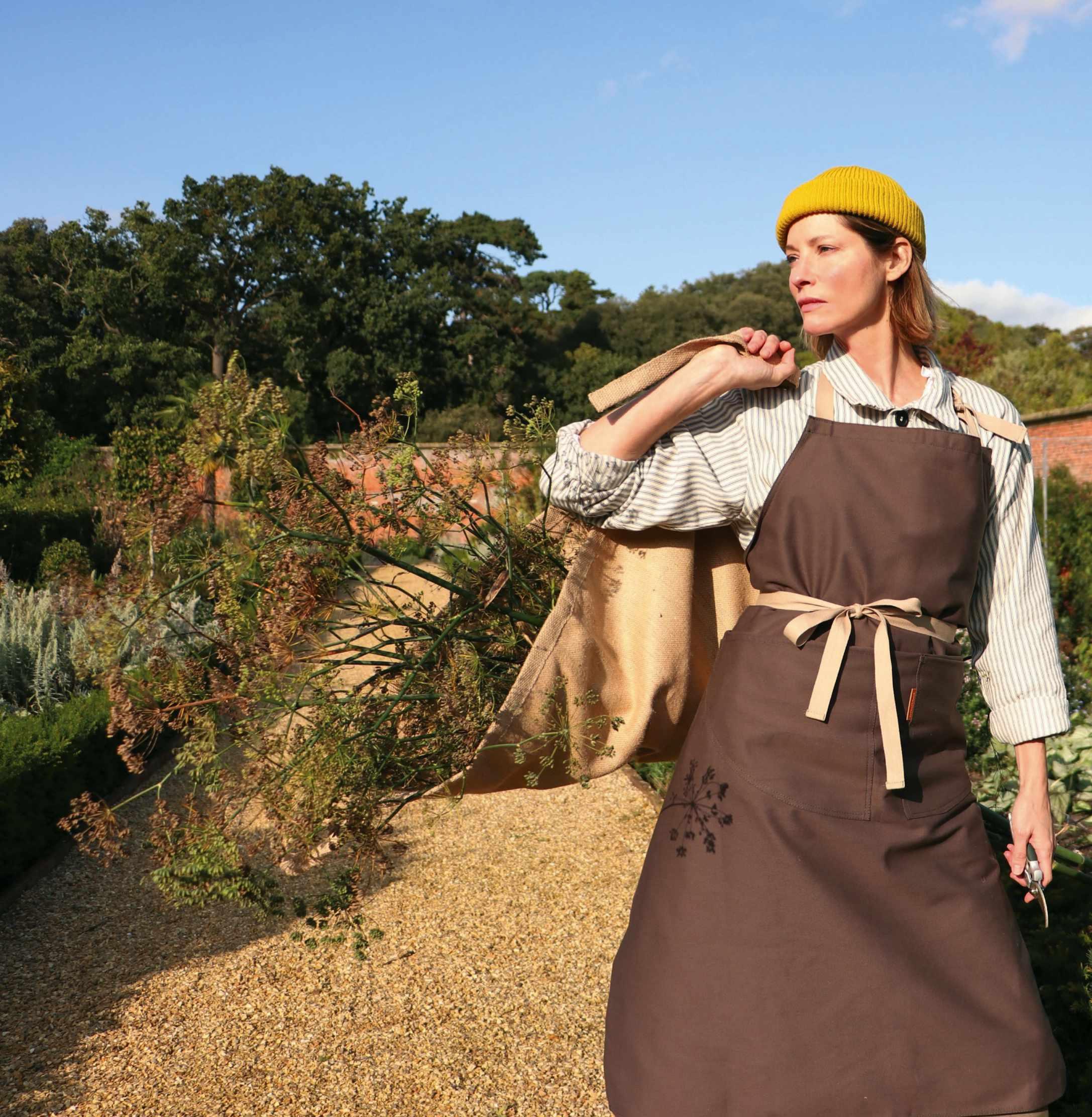
carriercompany.co.uk
TIMELESS GOODS TO CARRY YOU THROUGH THE SEASONS
ALWAYS MADE IN THE UK






 EDITOR
EDITOR


 CLIVE NICHOLS
STEPHANIE MAHON,
JOHN CAMPBELL
CLIVE NICHOLS
STEPHANIE MAHON,
JOHN CAMPBELL




























































































 1. Burgon & Ball Paper Pot Maker, makes three pot sizes, £14.99, 01344 578000, crocus.co.uk 2. Propagator, W 585mm x L 900mm x D 405mm, £975, 01730 826900, alitex.co.uk 3. Bark Garden Apron, olive, £49, fermliving.co.uk 4. Ceramic Vegetable Markers, set of nine, £45, 07881 622825, littlegardenshop.com
1. Burgon & Ball Paper Pot Maker, makes three pot sizes, £14.99, 01344 578000, crocus.co.uk 2. Propagator, W 585mm x L 900mm x D 405mm, £975, 01730 826900, alitex.co.uk 3. Bark Garden Apron, olive, £49, fermliving.co.uk 4. Ceramic Vegetable Markers, set of nine, £45, 07881 622825, littlegardenshop.com










































 Bergenia ‘Bressingham Ruby’
Great for winter foliage and spring flowers, this striking cultivar was raised at Bressingham Gardens and introduced in 1984. Deep red-magenta blooms rise above rounded leaves that turn purple in winter. 60cm x 30cm. RHS H5, USDA 4a-9b.
Bergenia ‘Bressingham Ruby’
Great for winter foliage and spring flowers, this striking cultivar was raised at Bressingham Gardens and introduced in 1984. Deep red-magenta blooms rise above rounded leaves that turn purple in winter. 60cm x 30cm. RHS H5, USDA 4a-9b.













































































































































































































